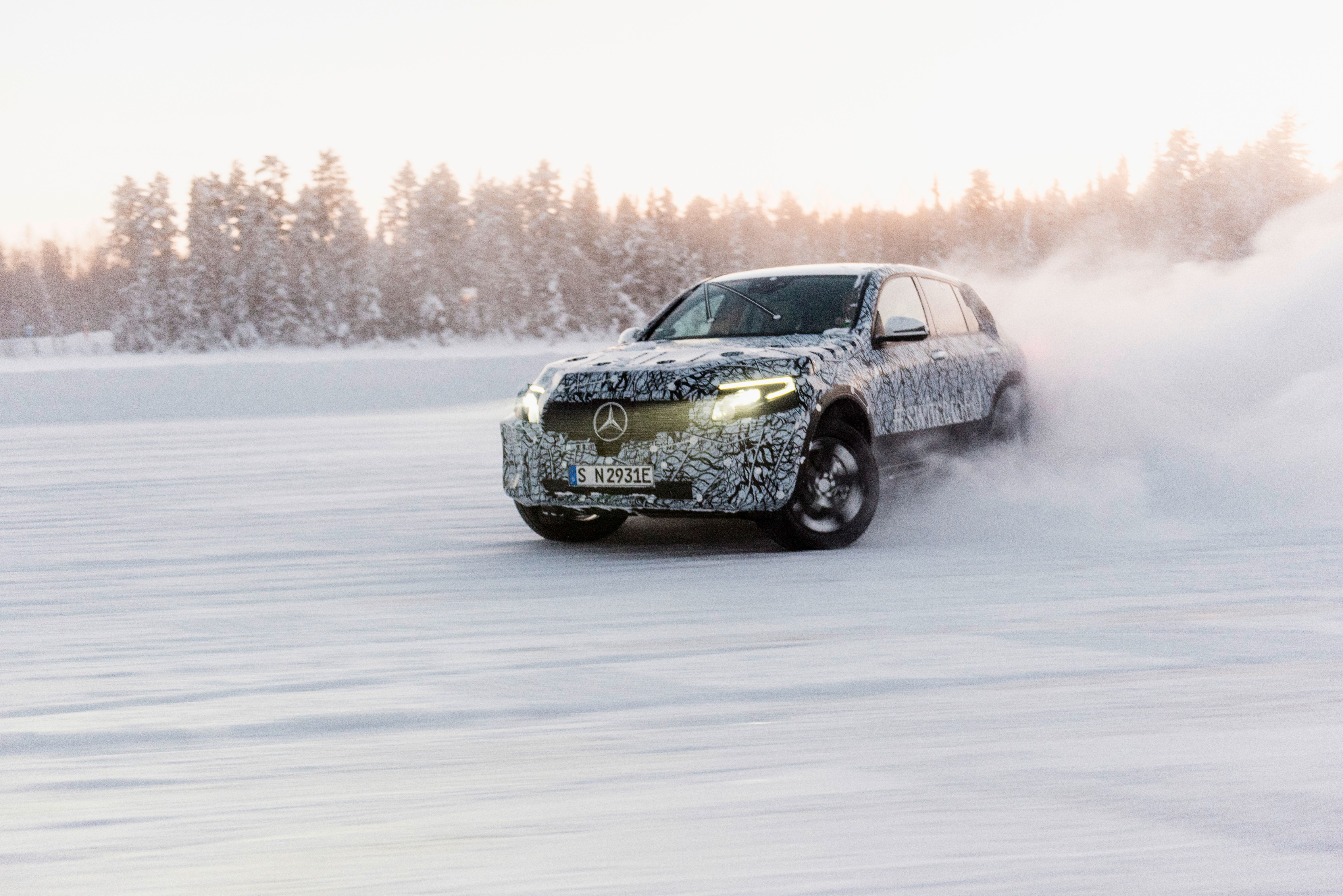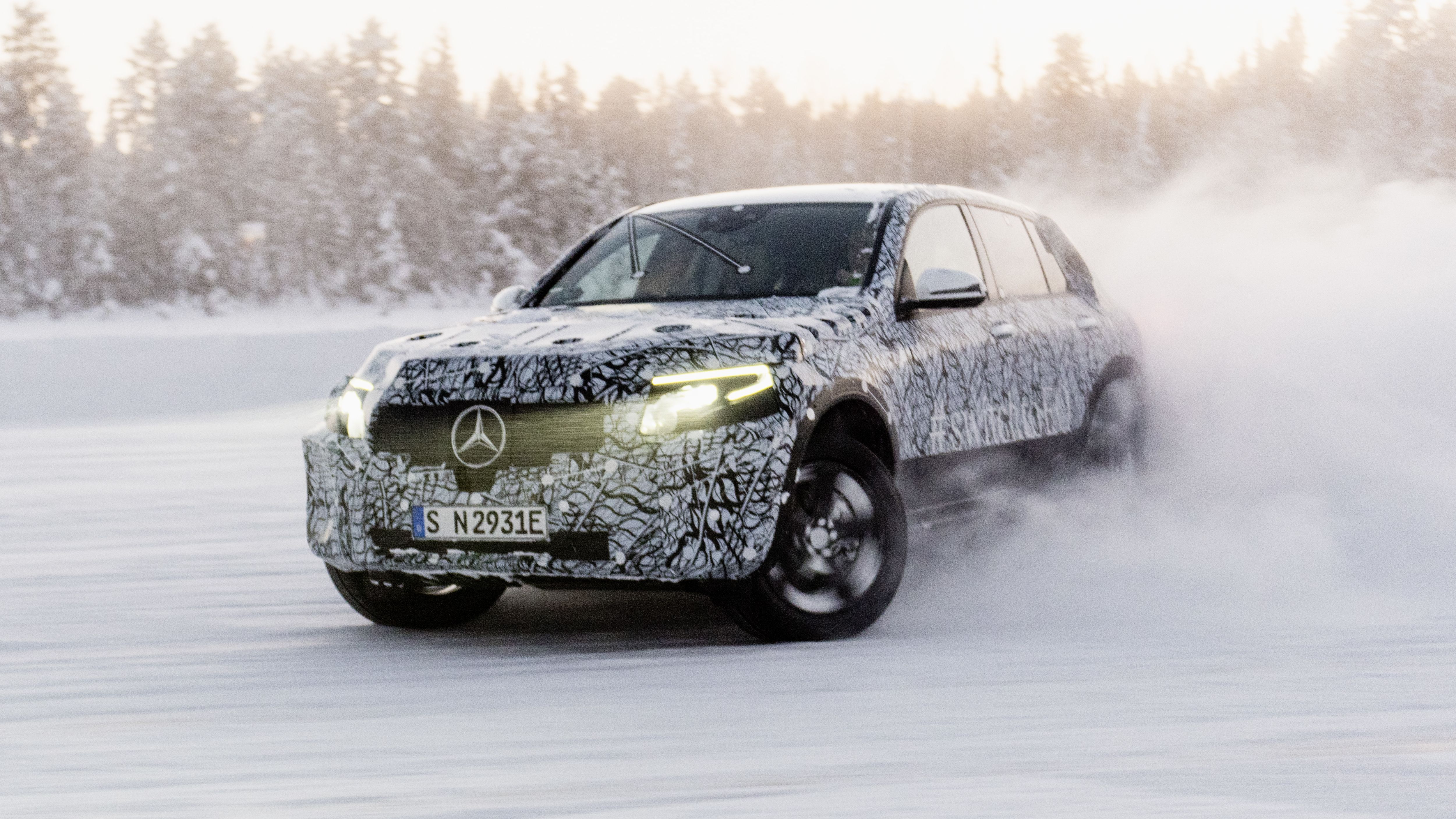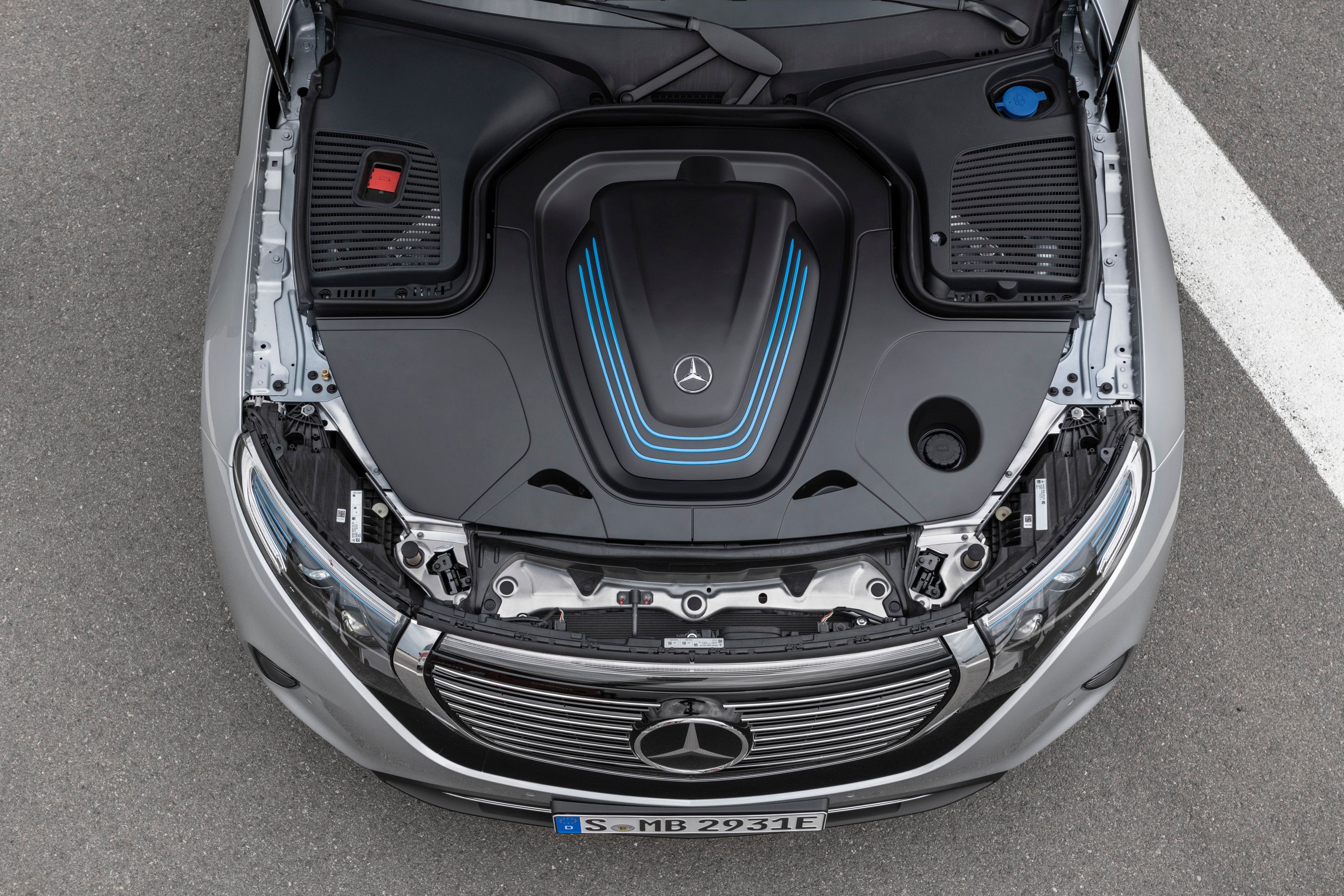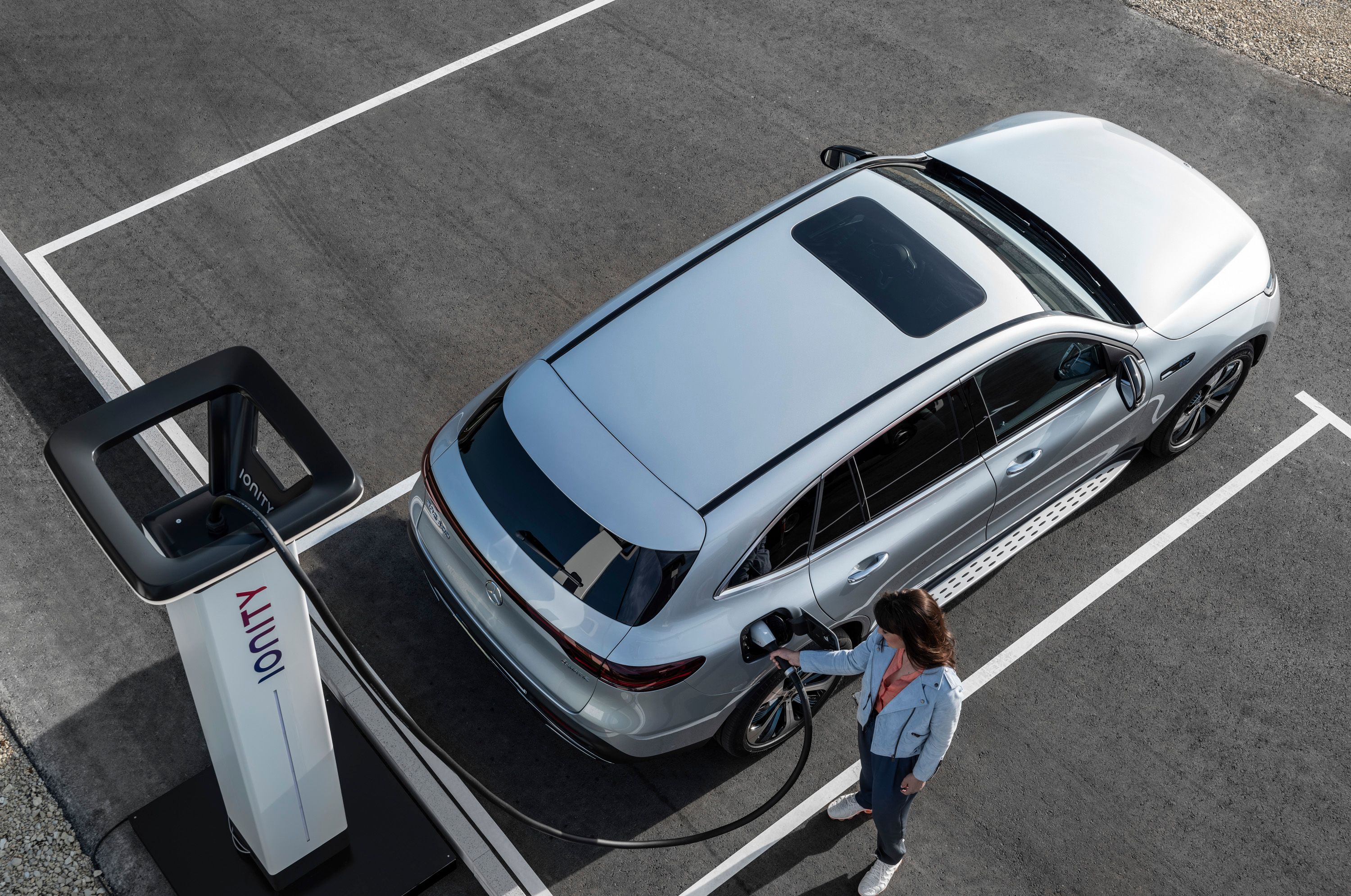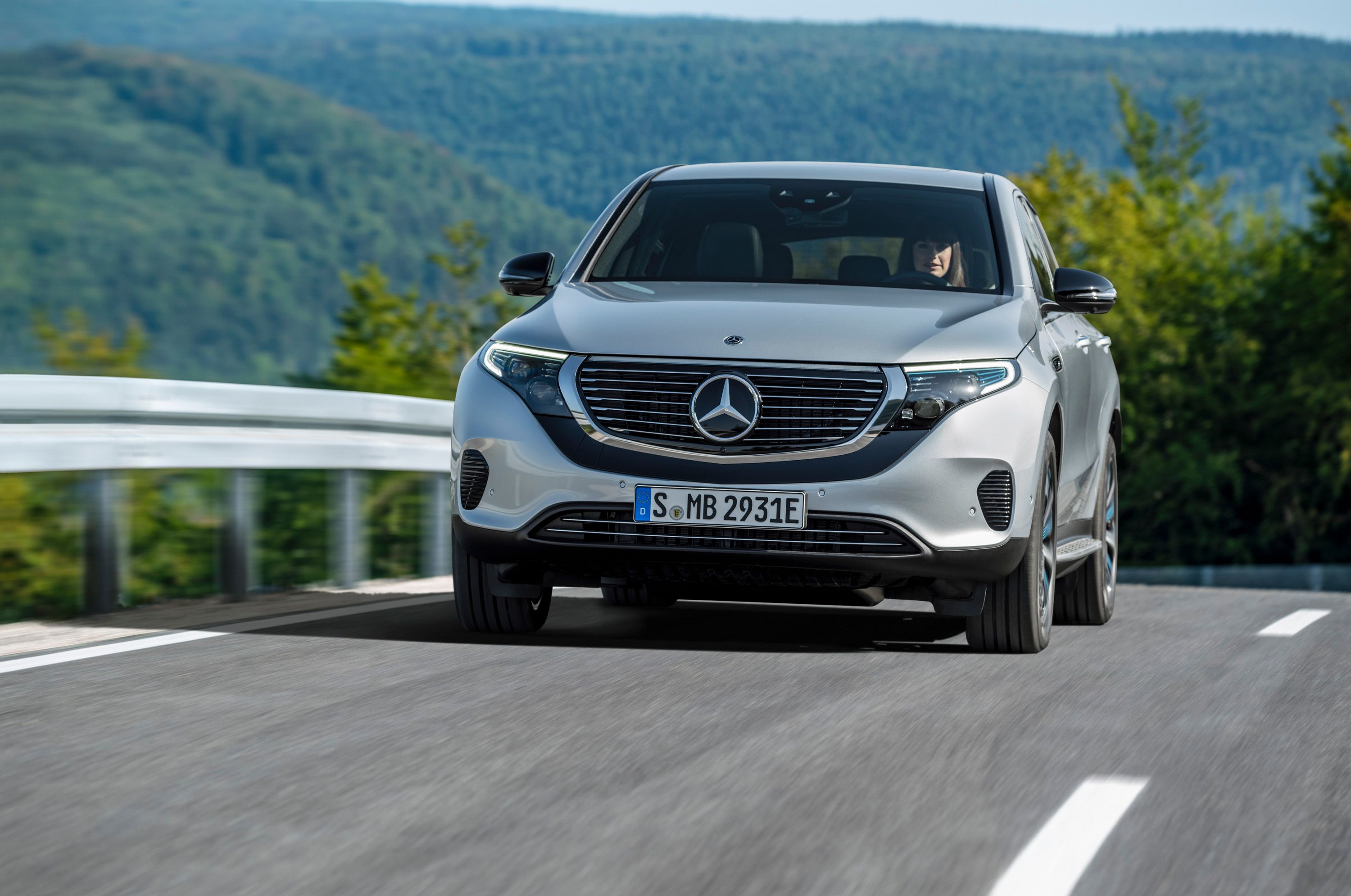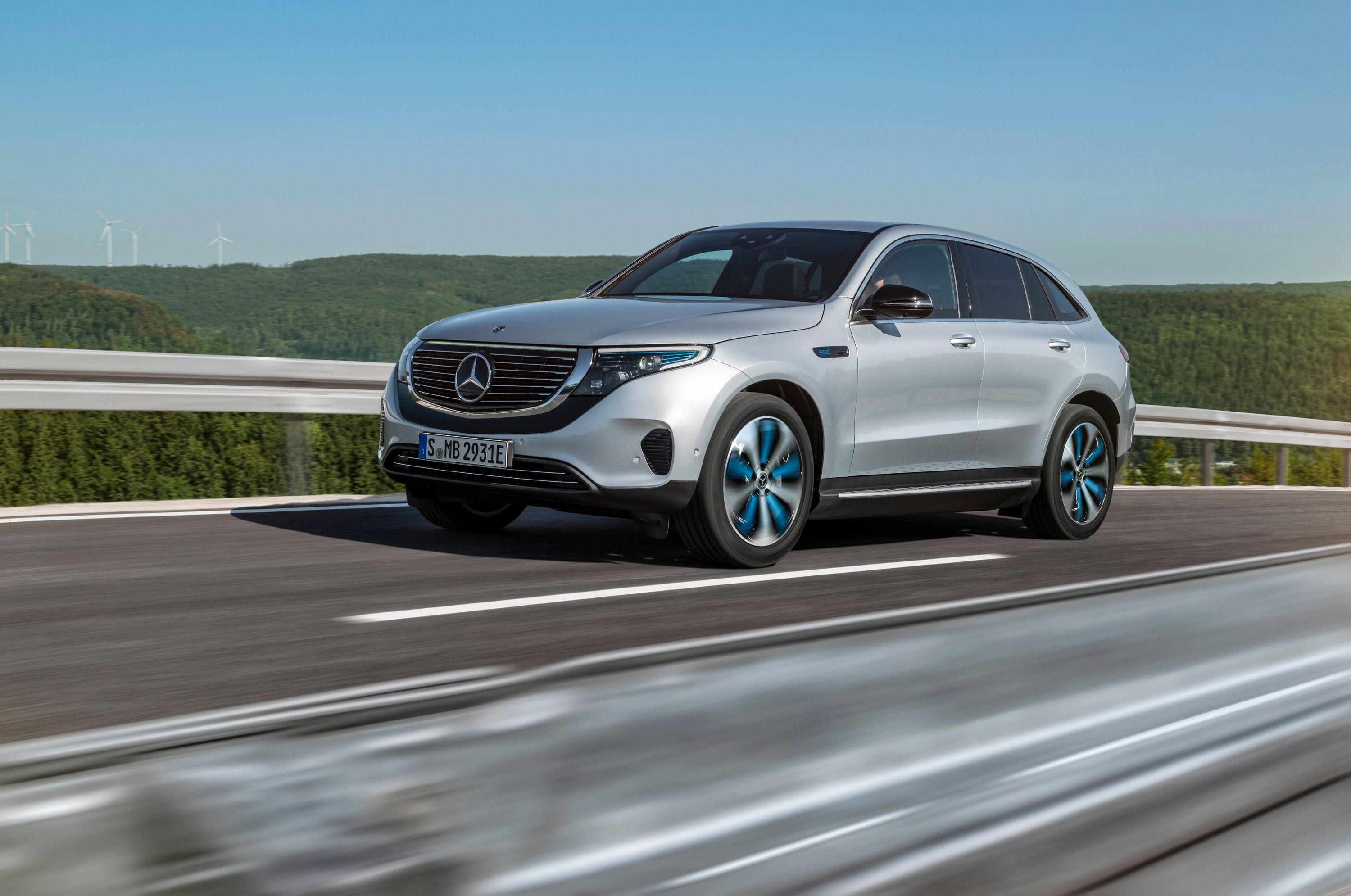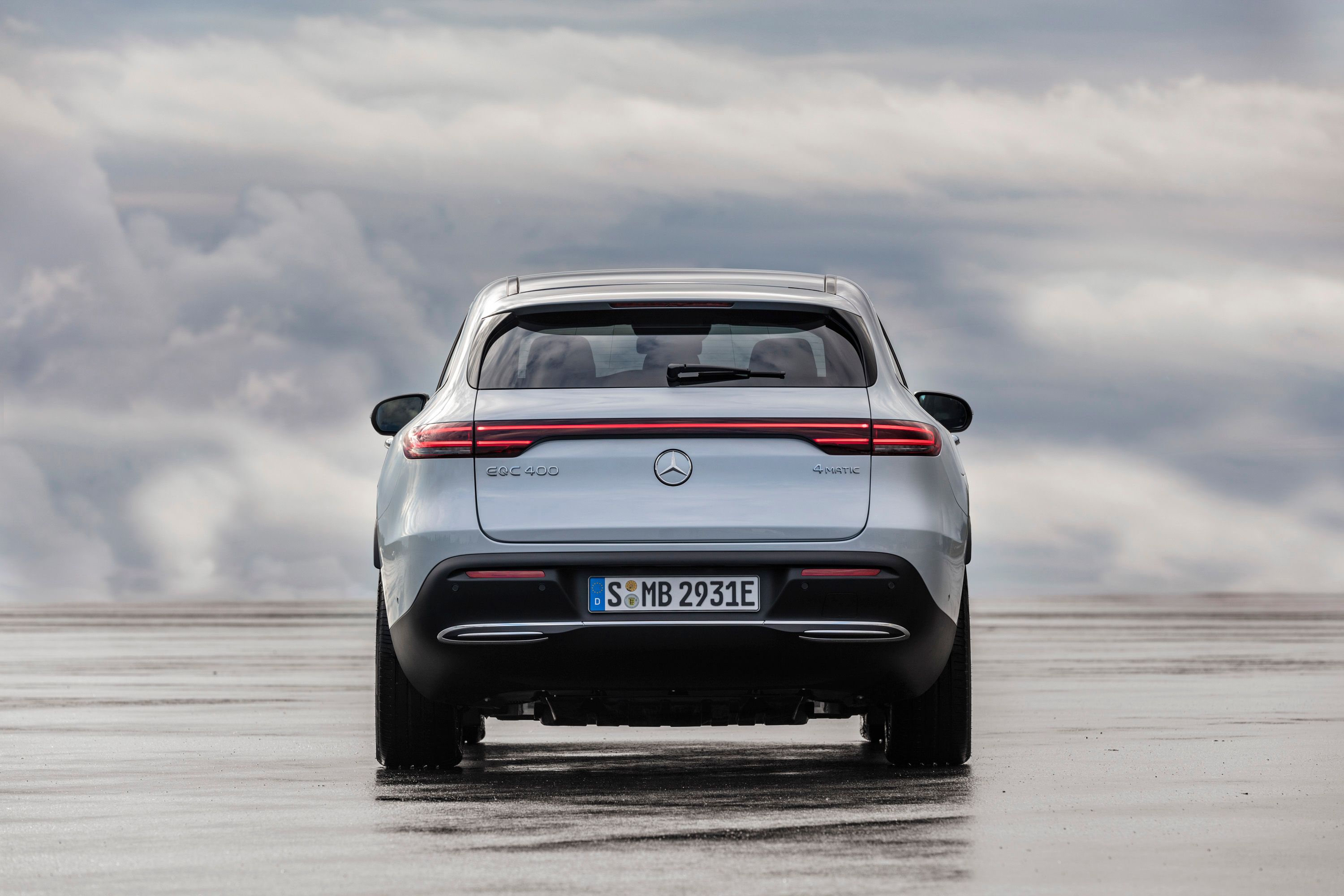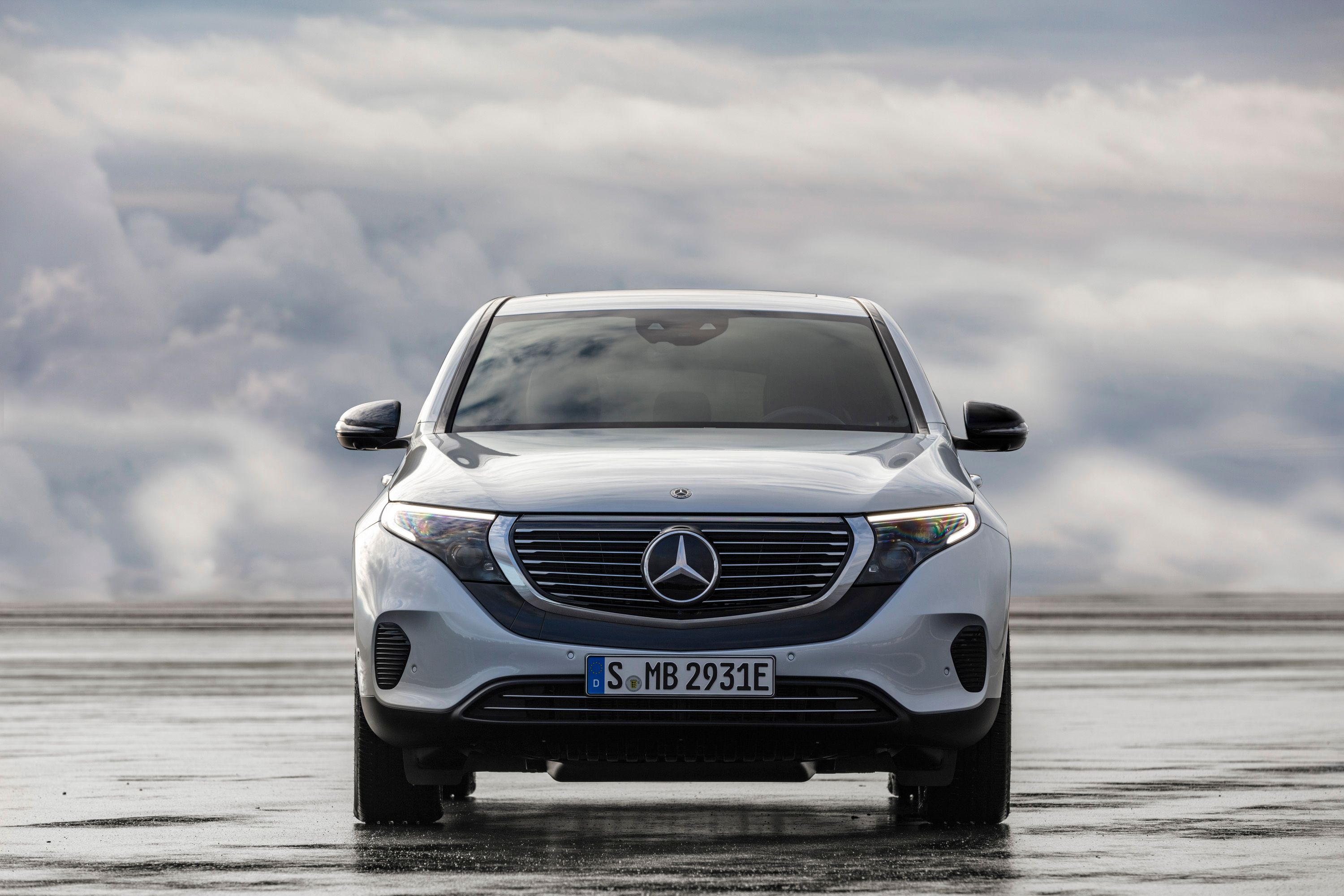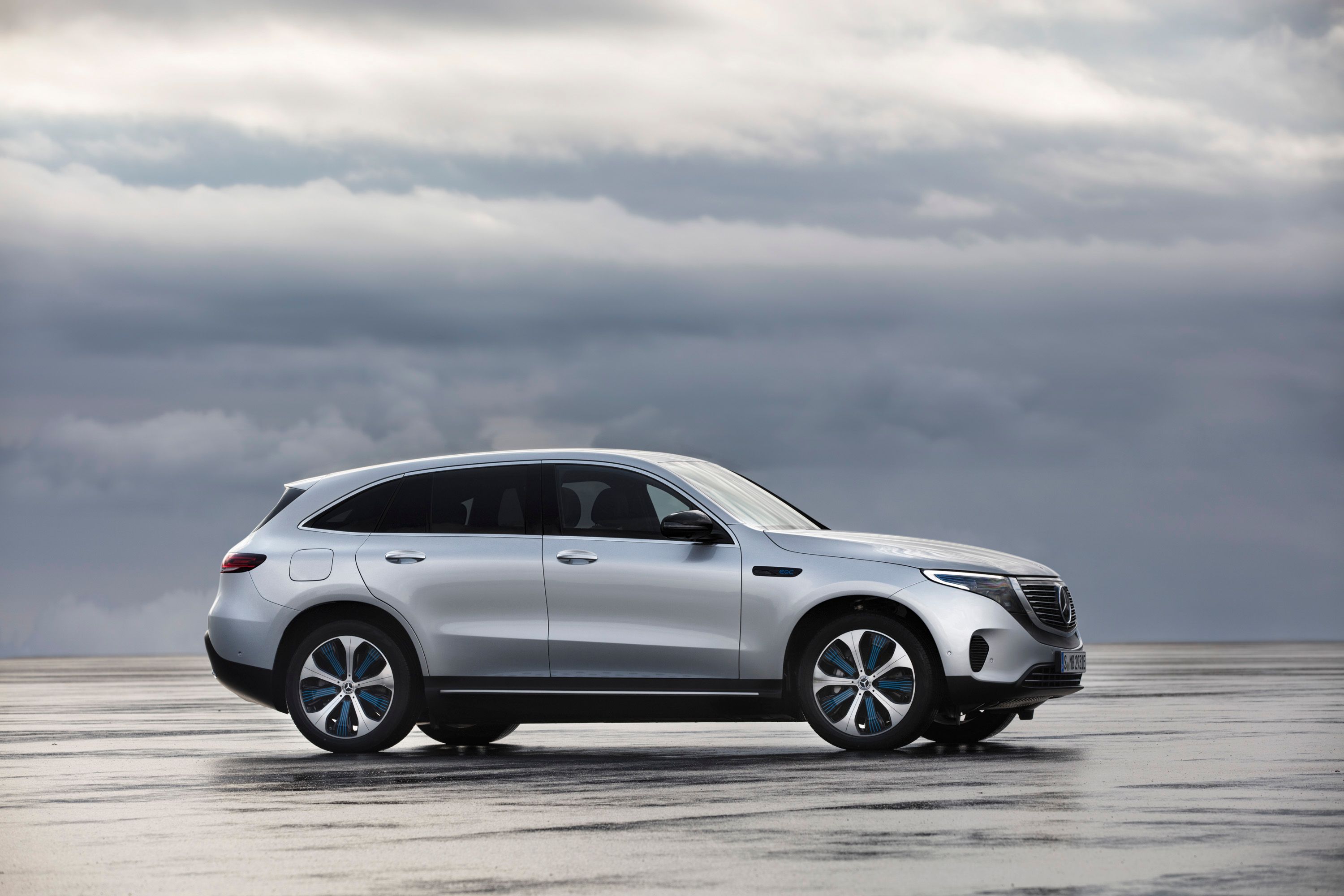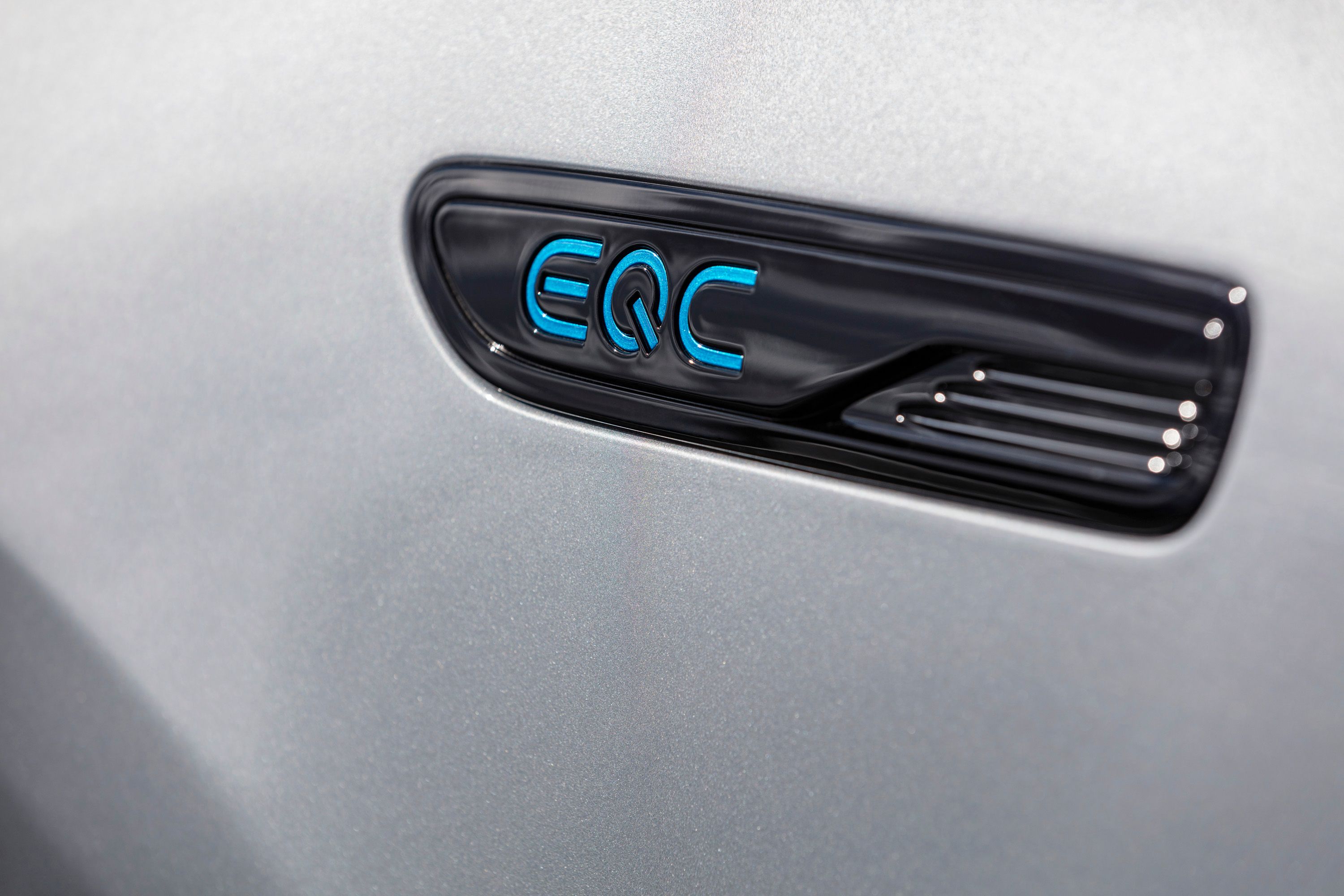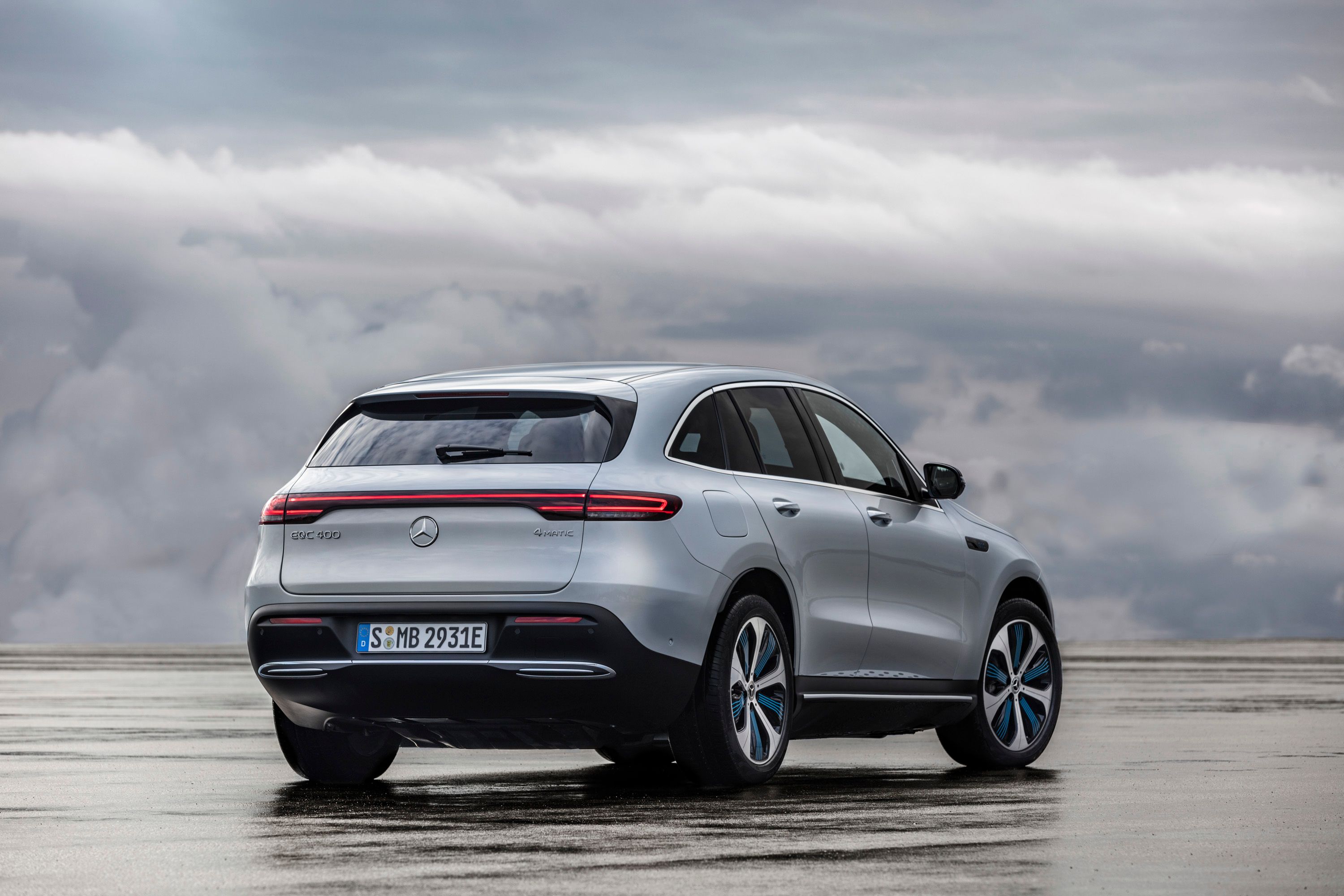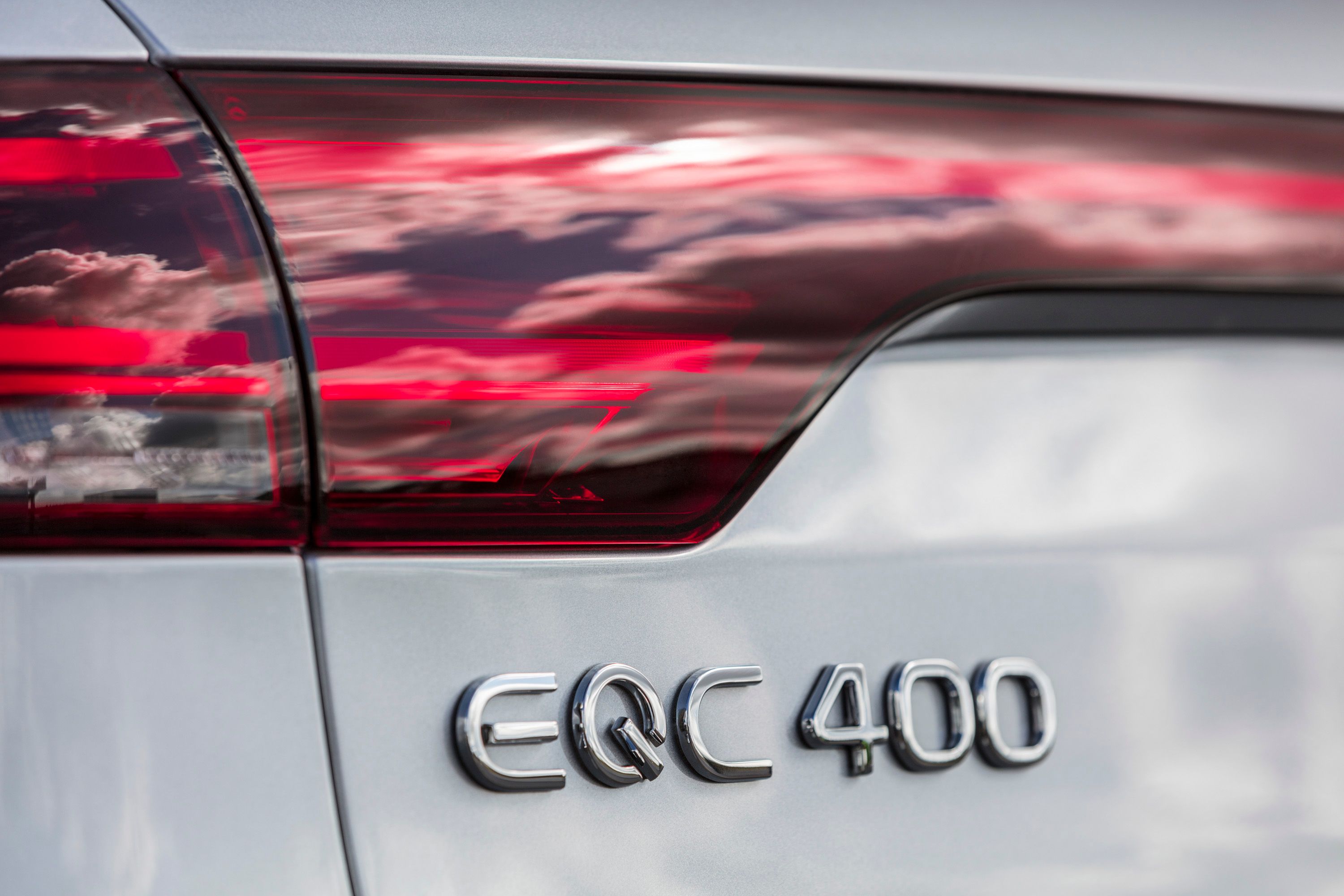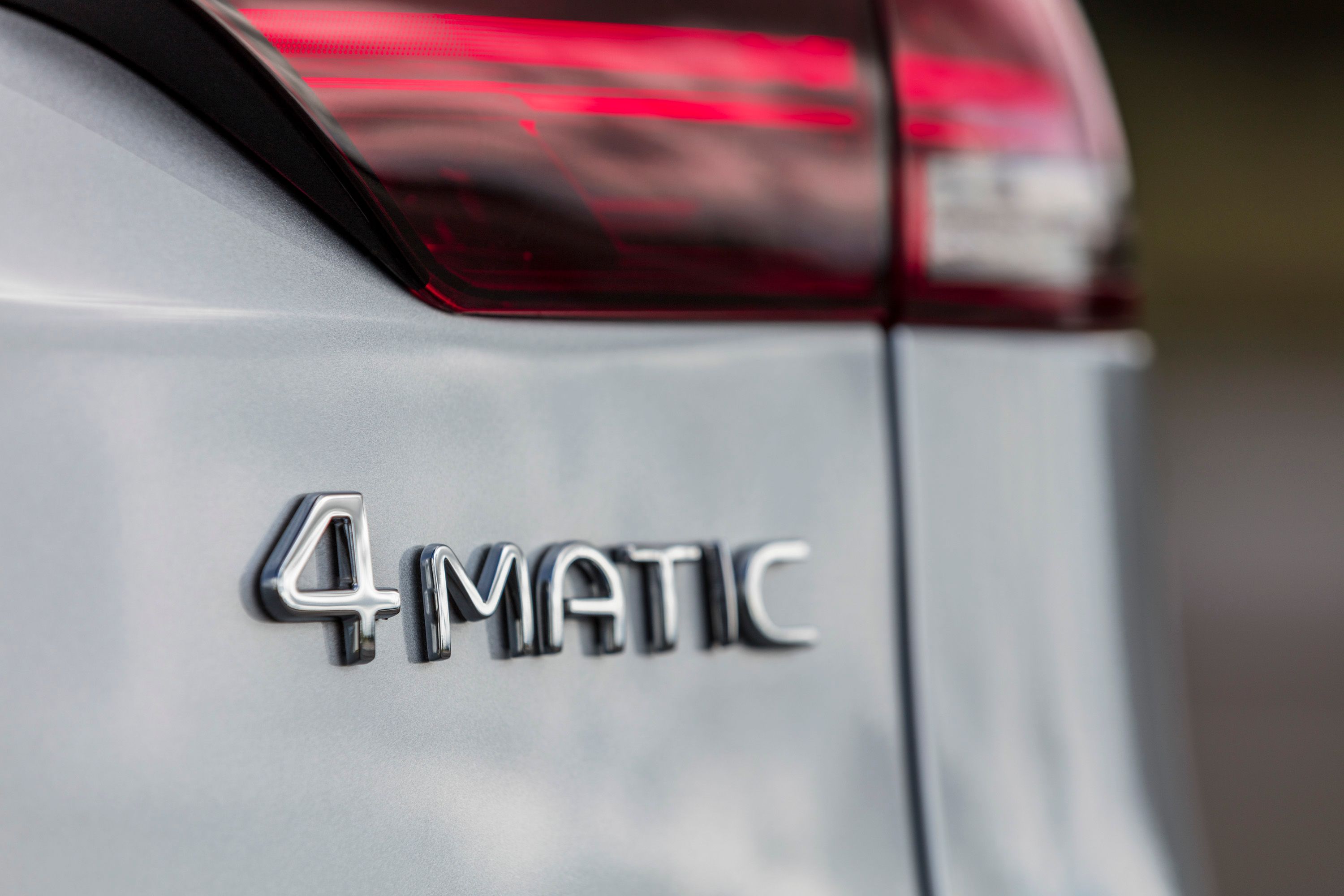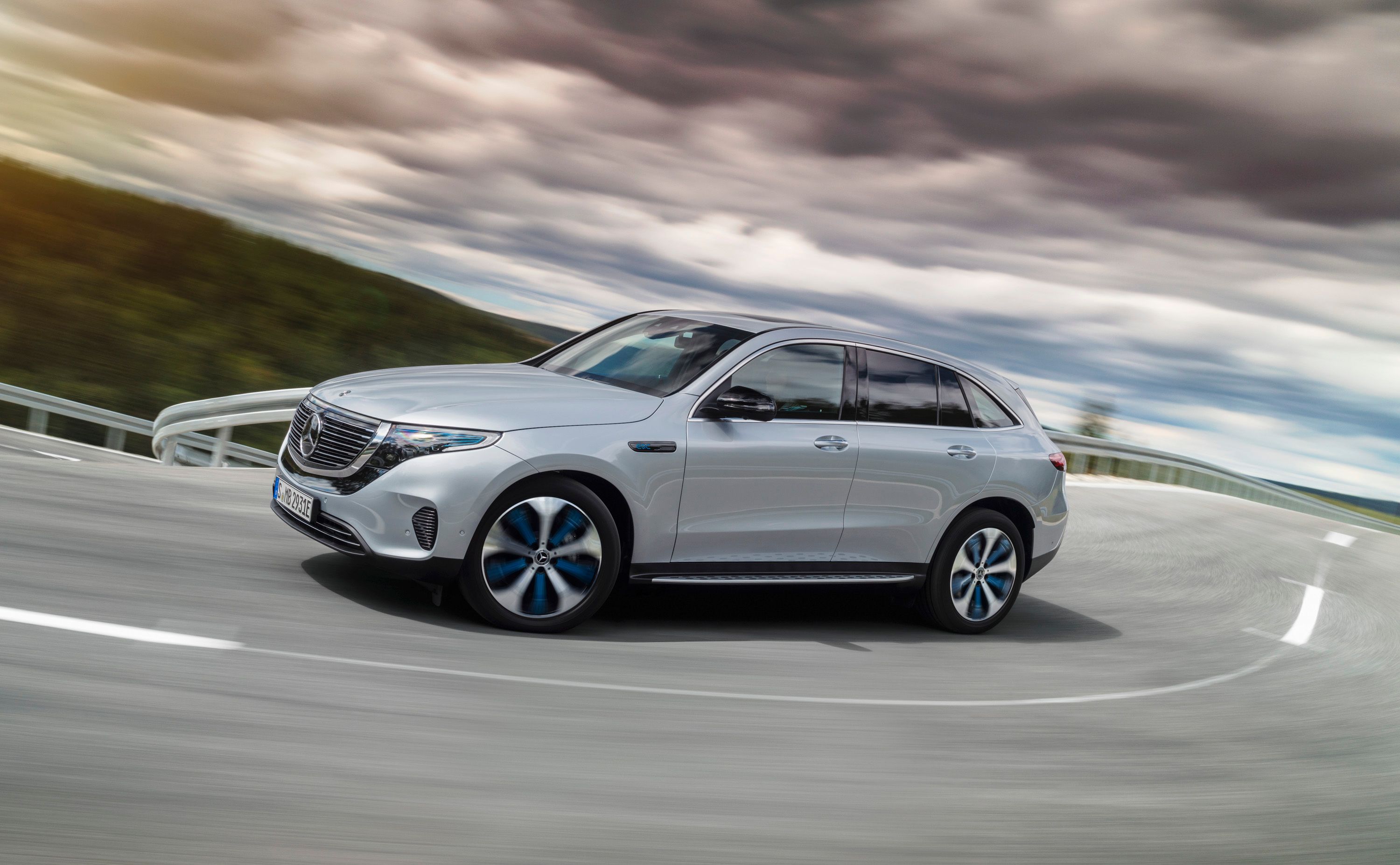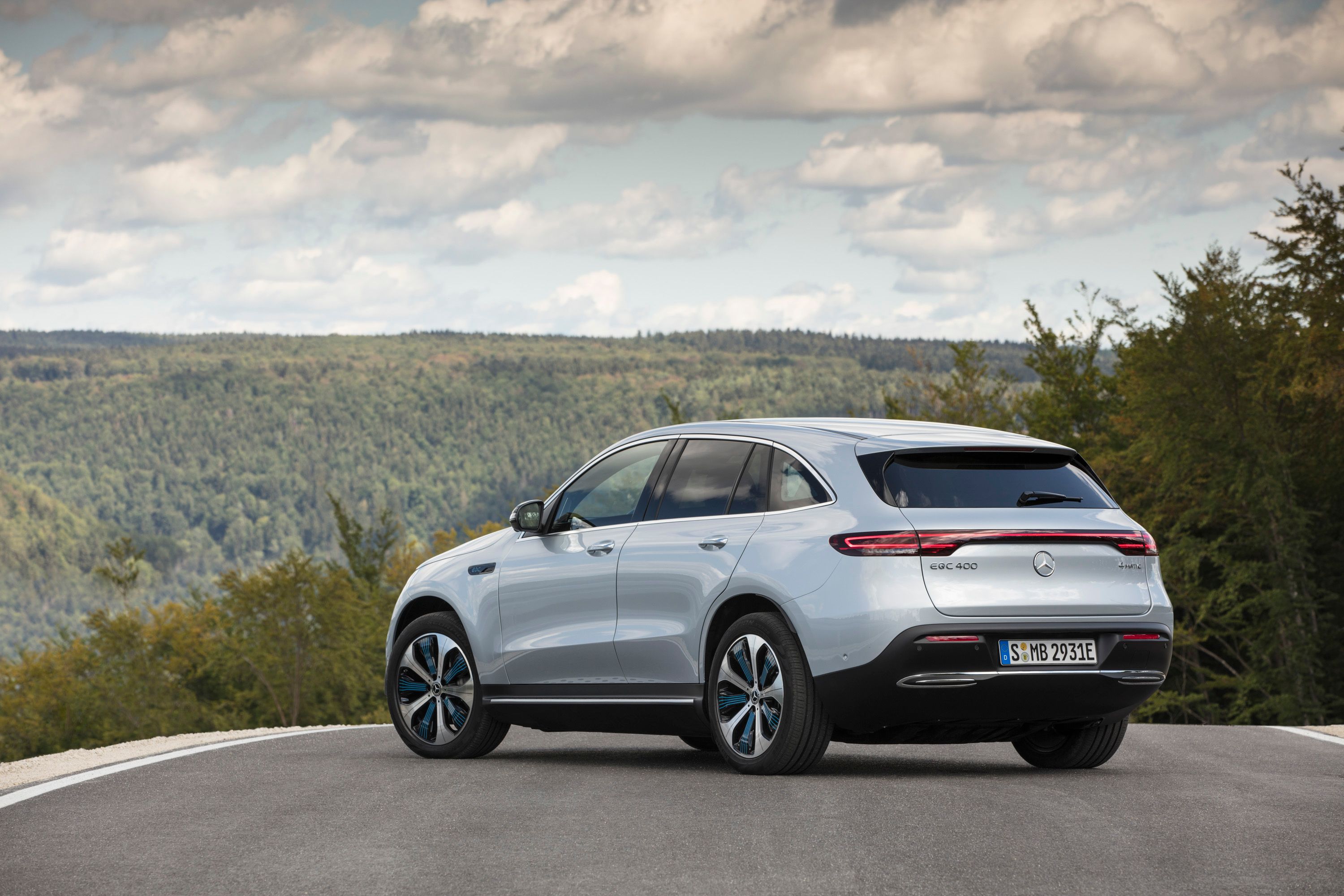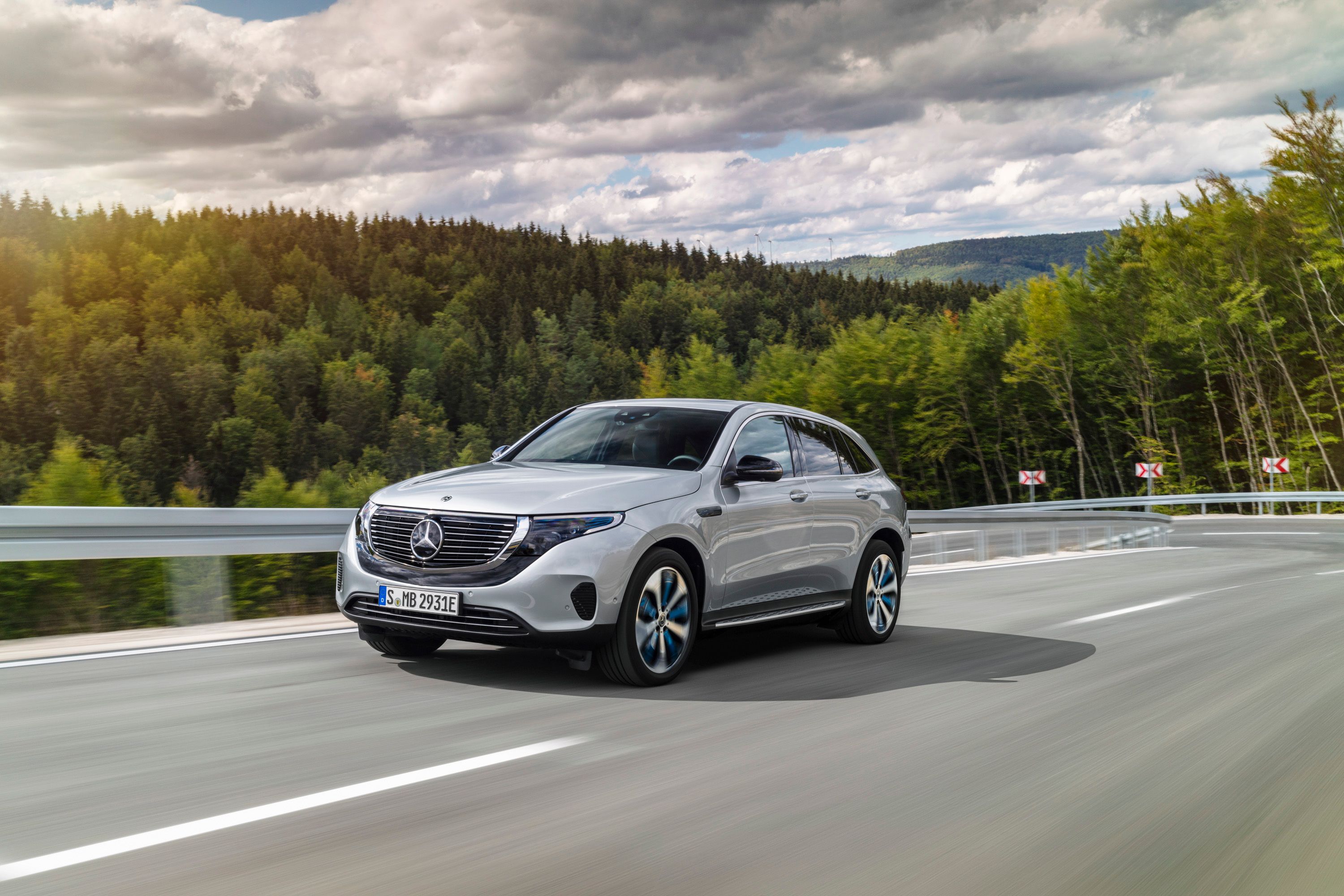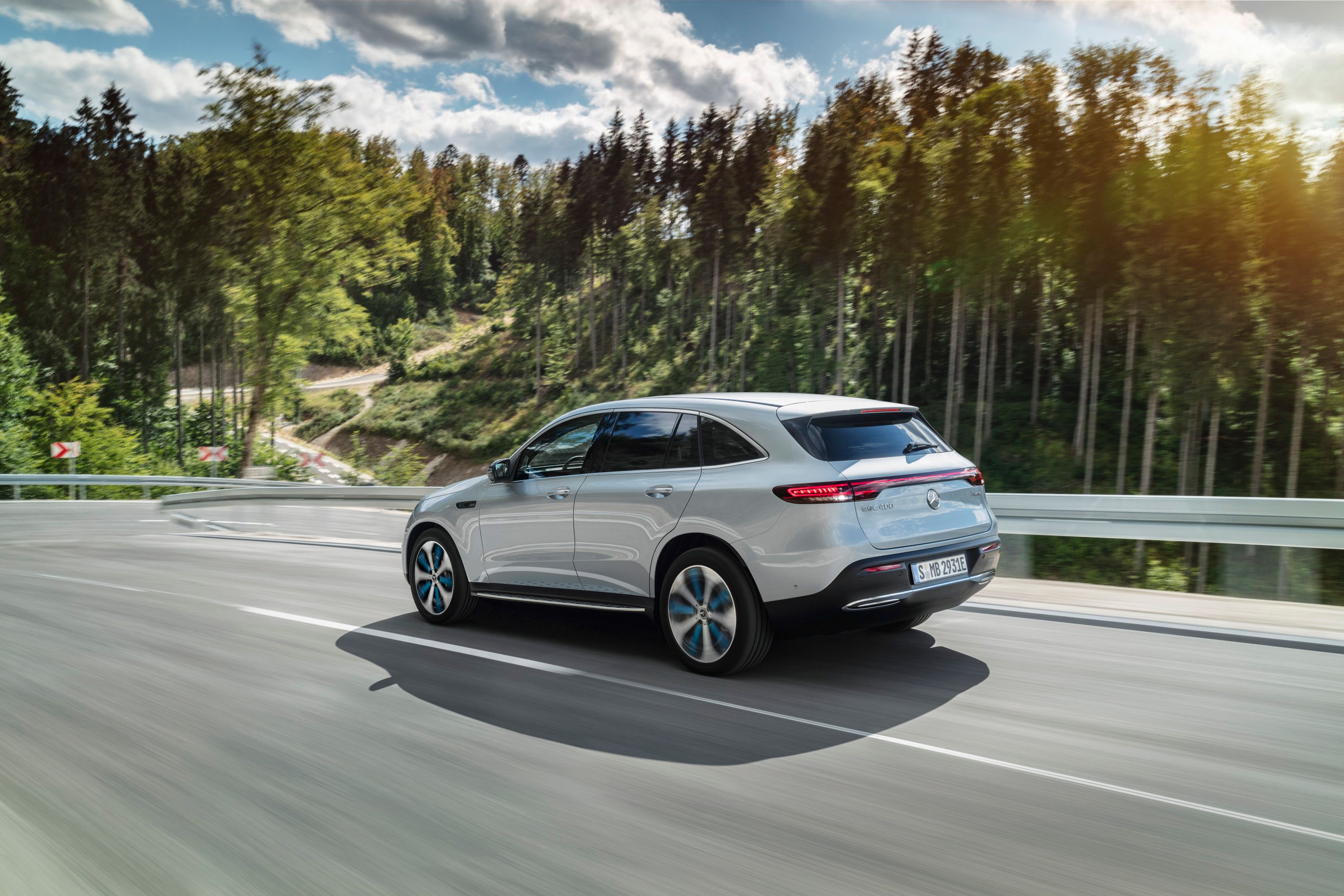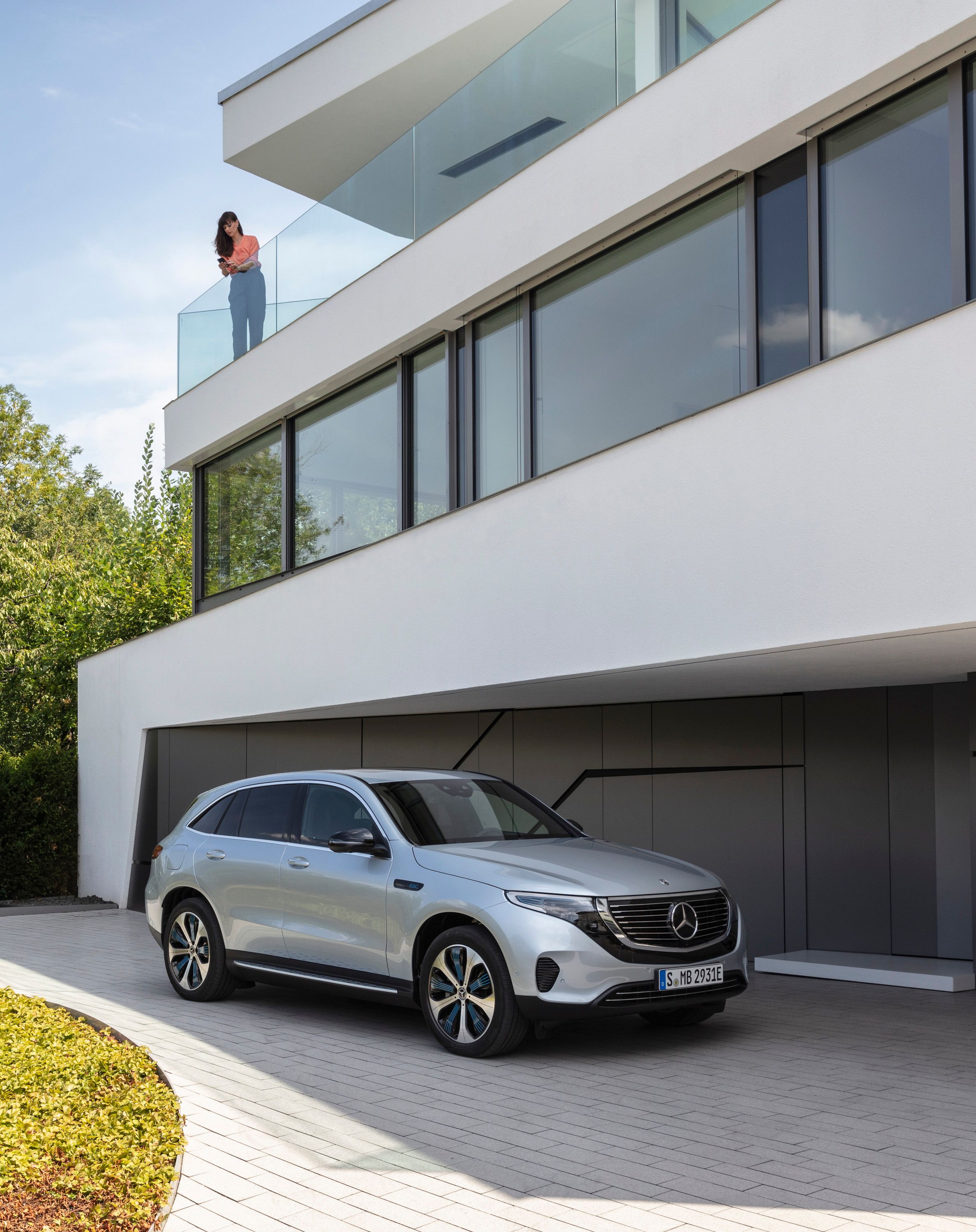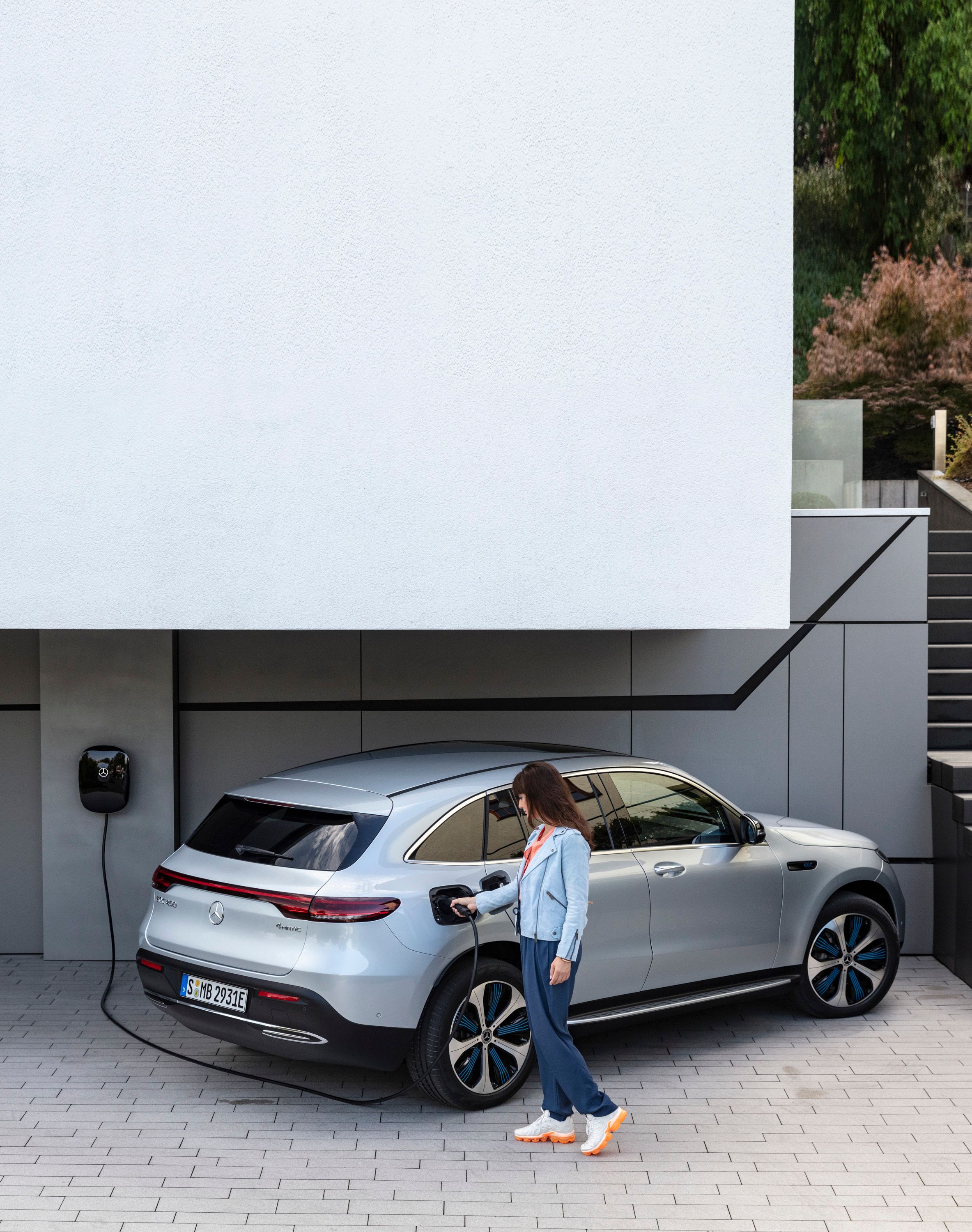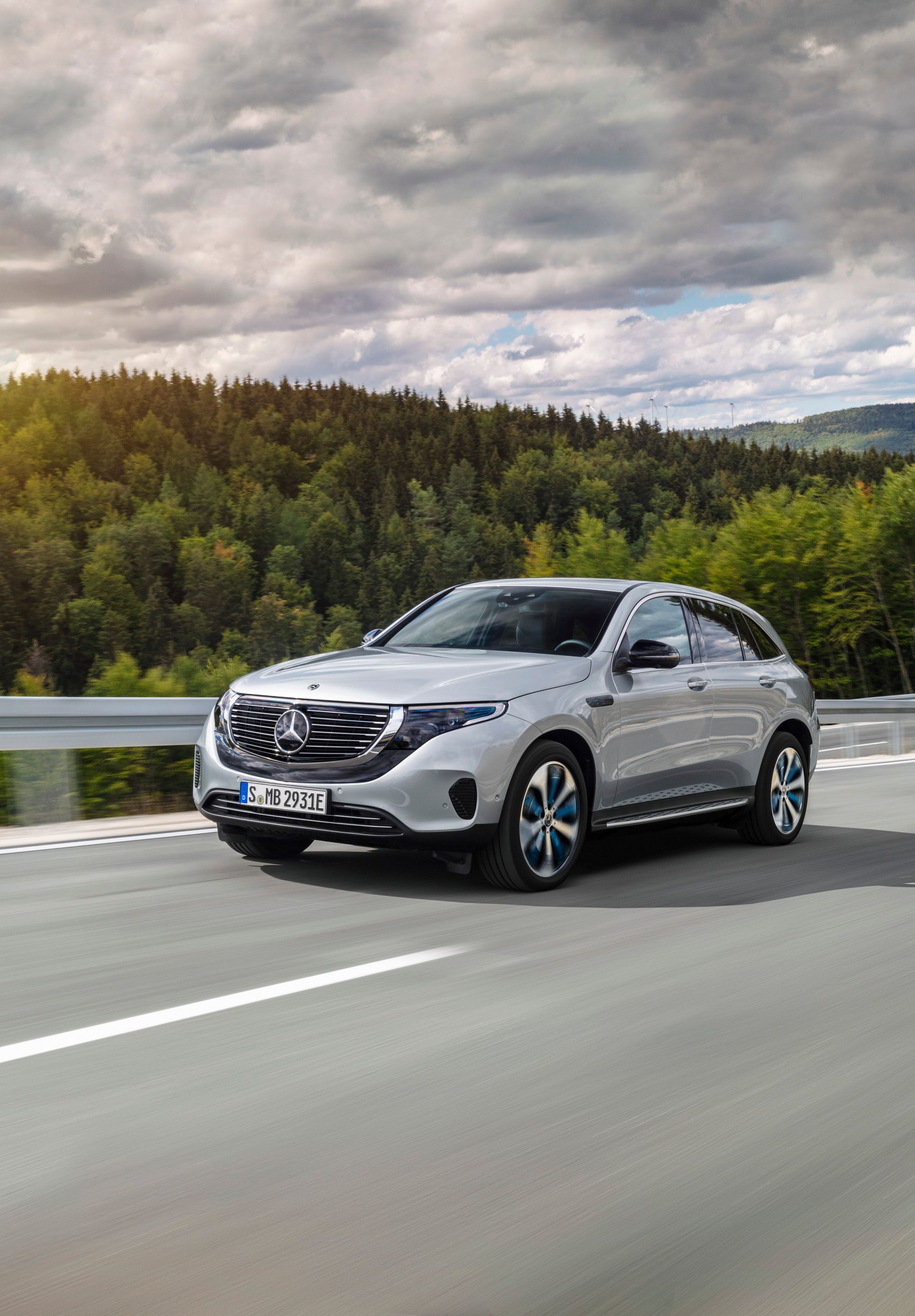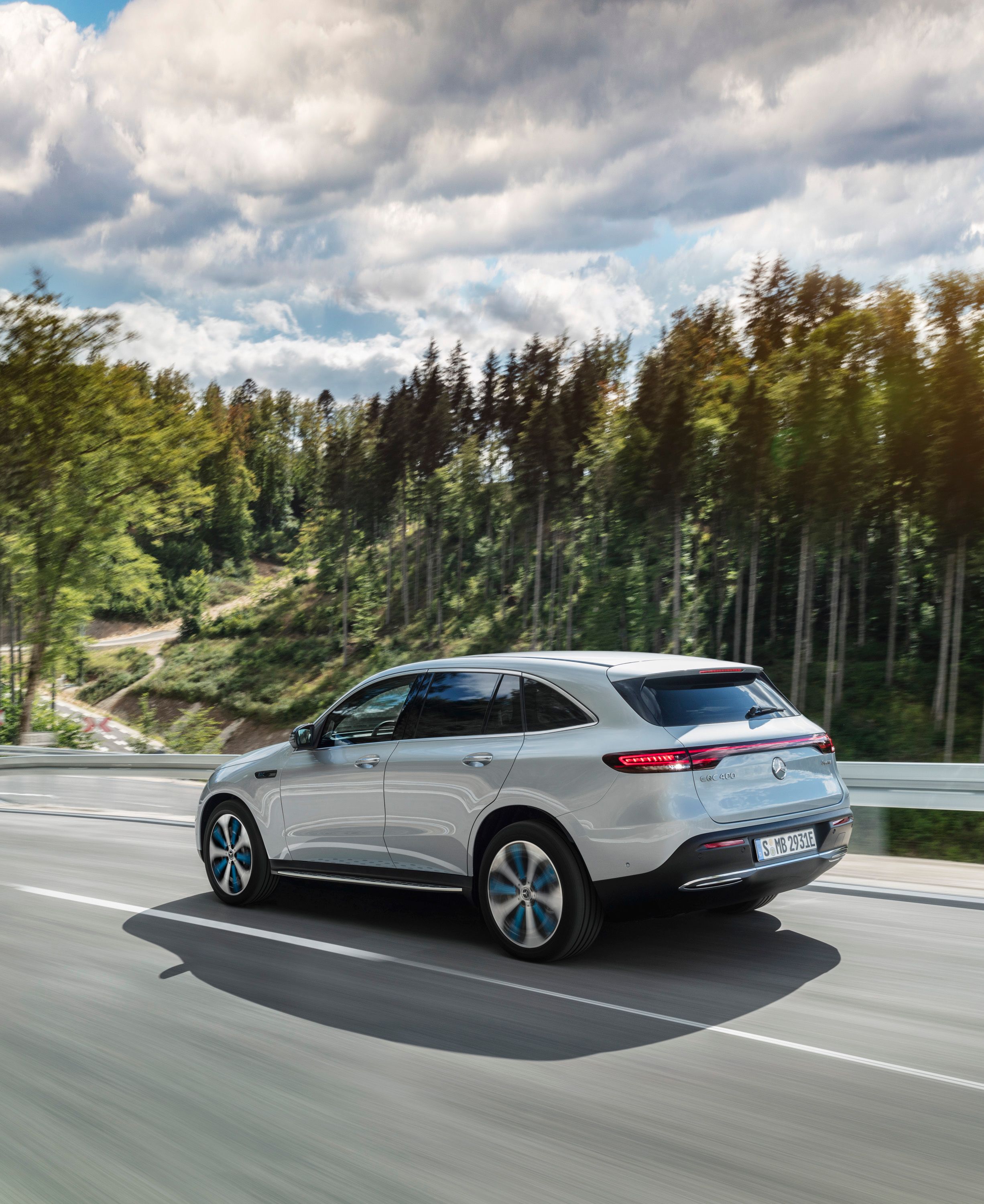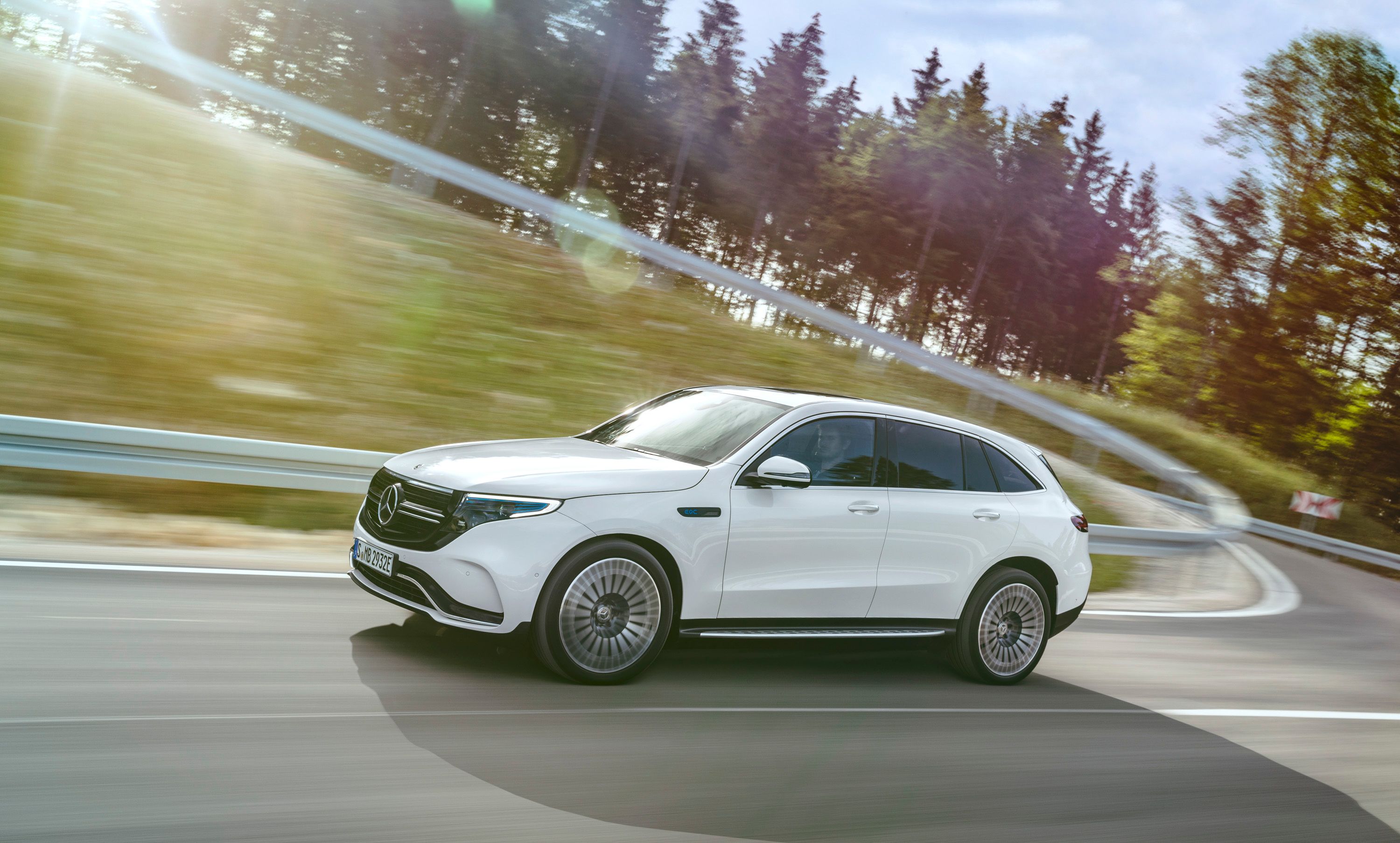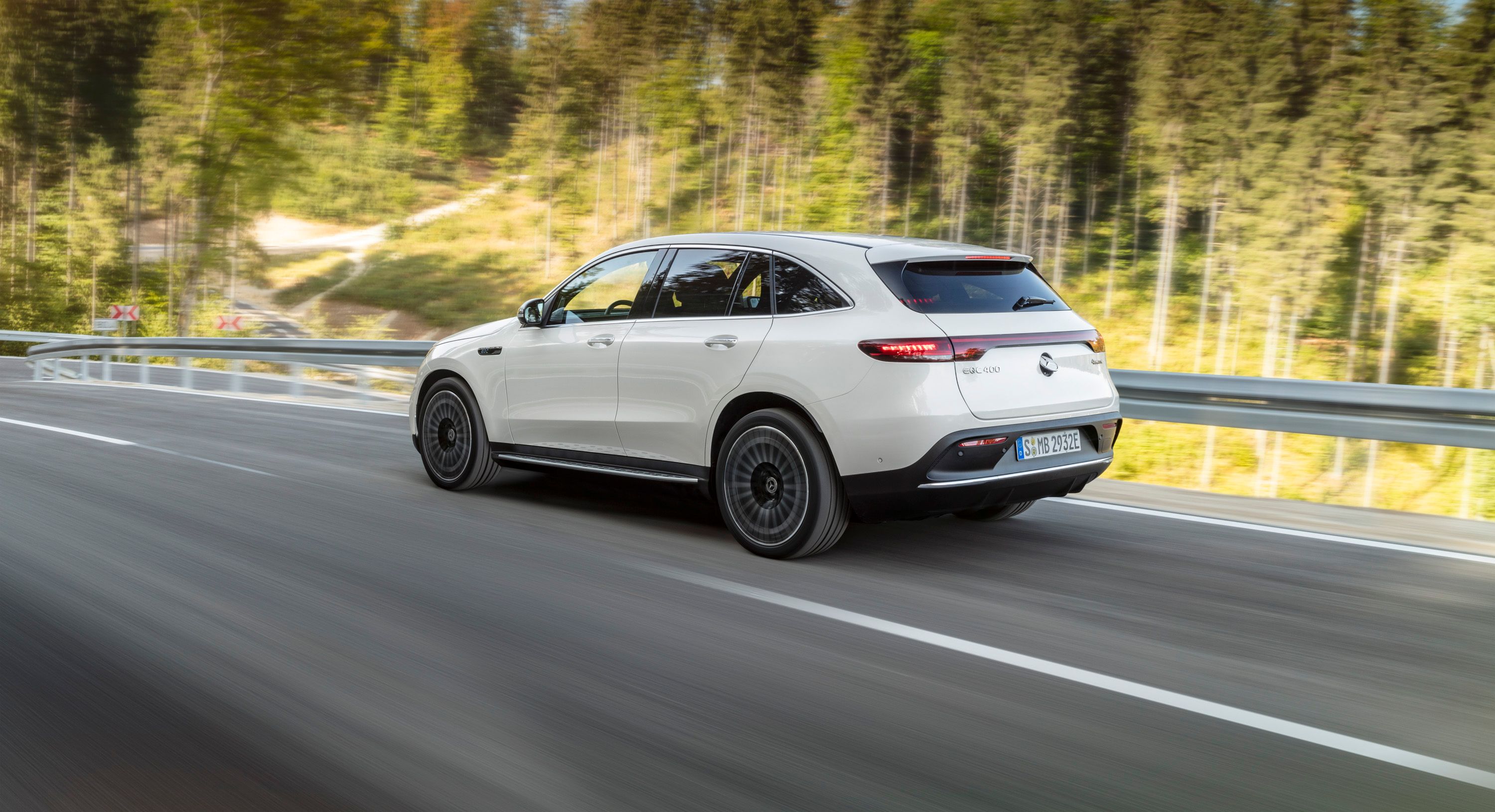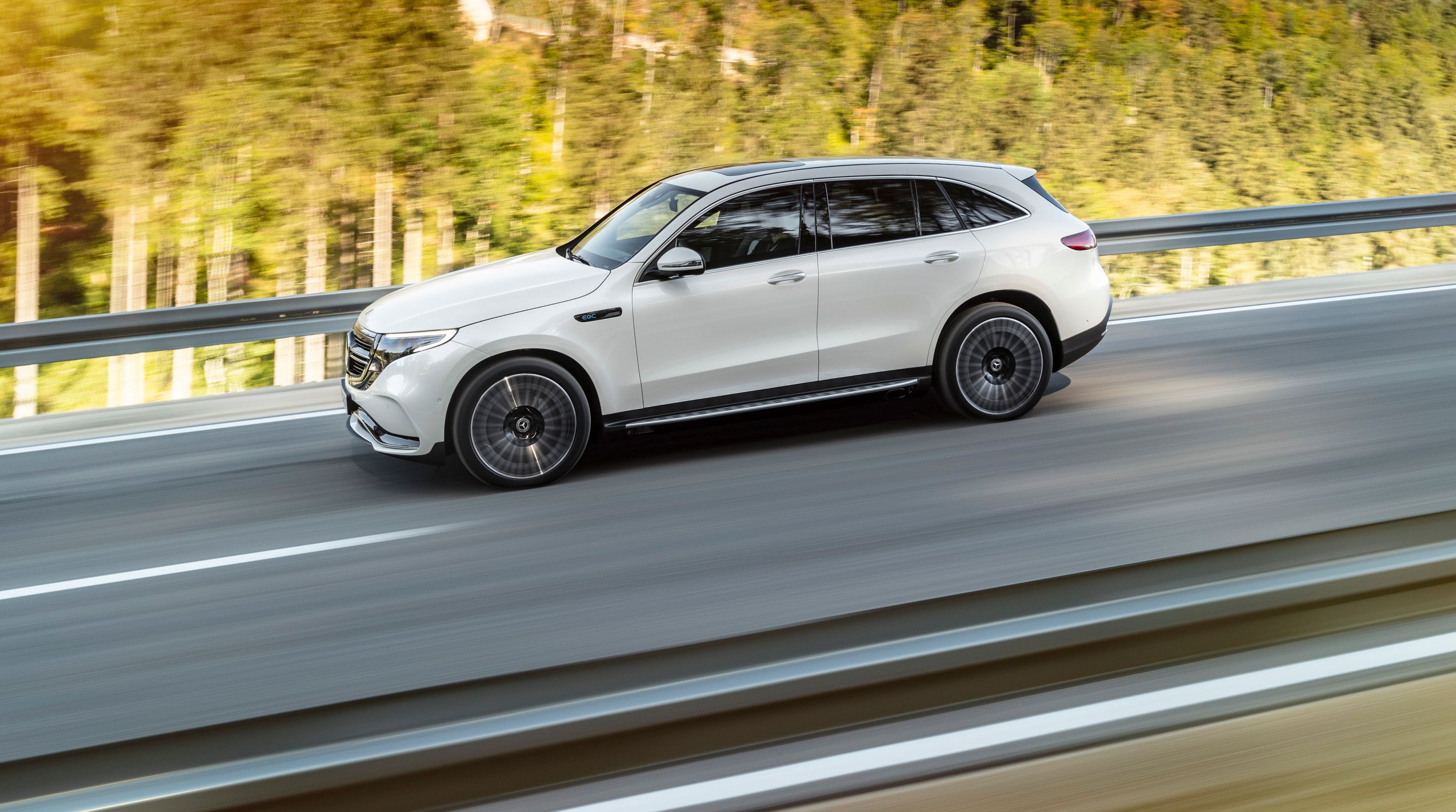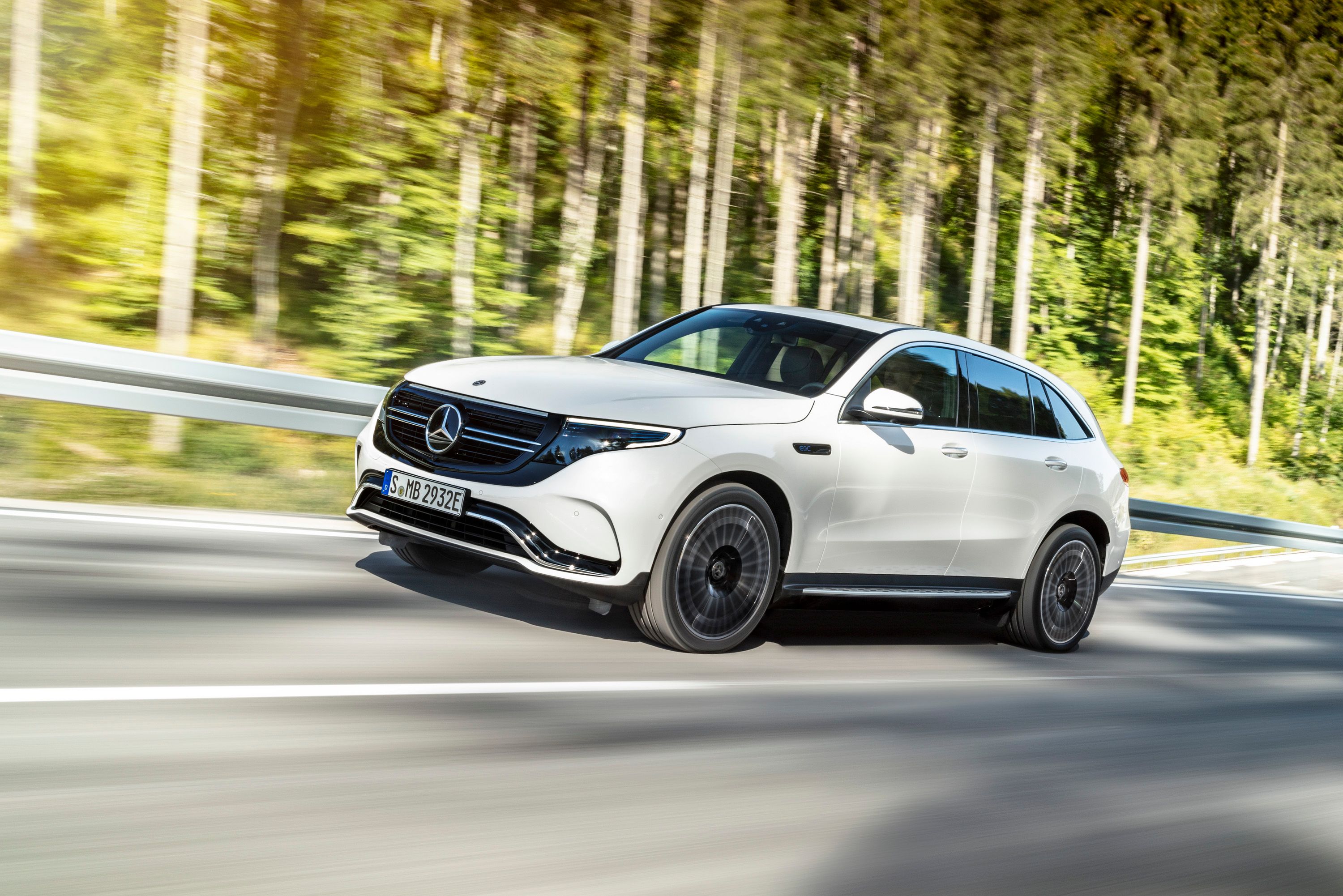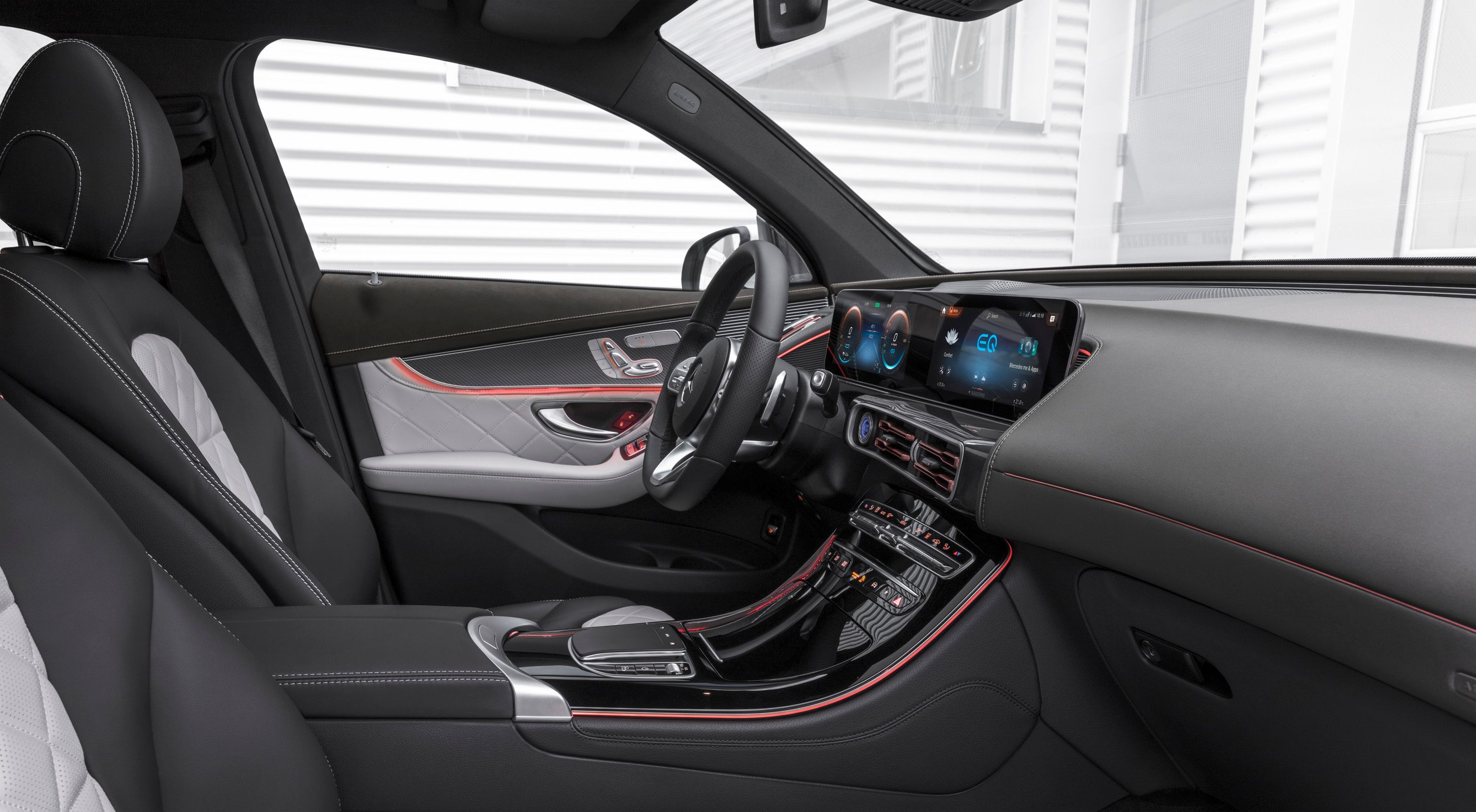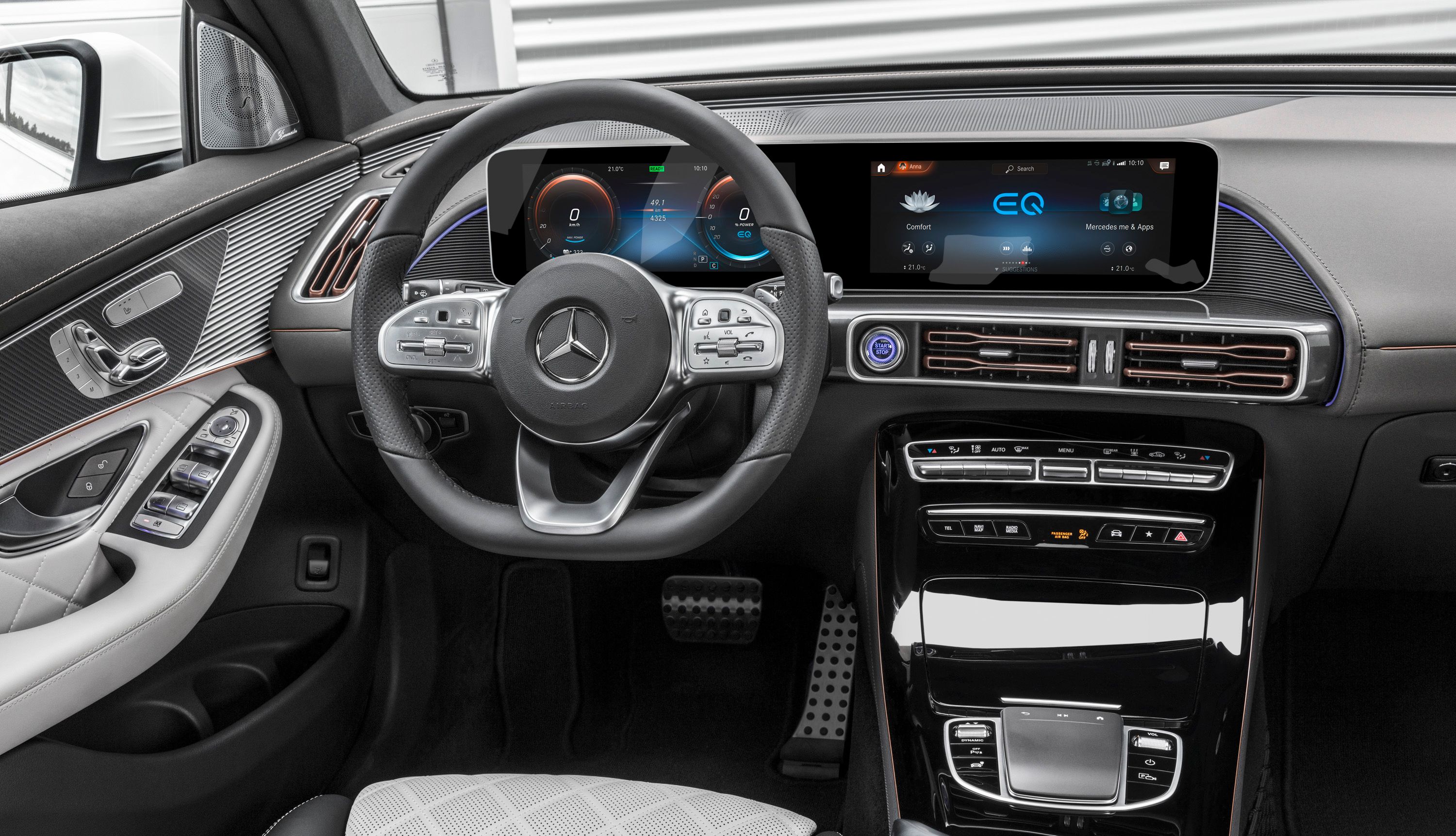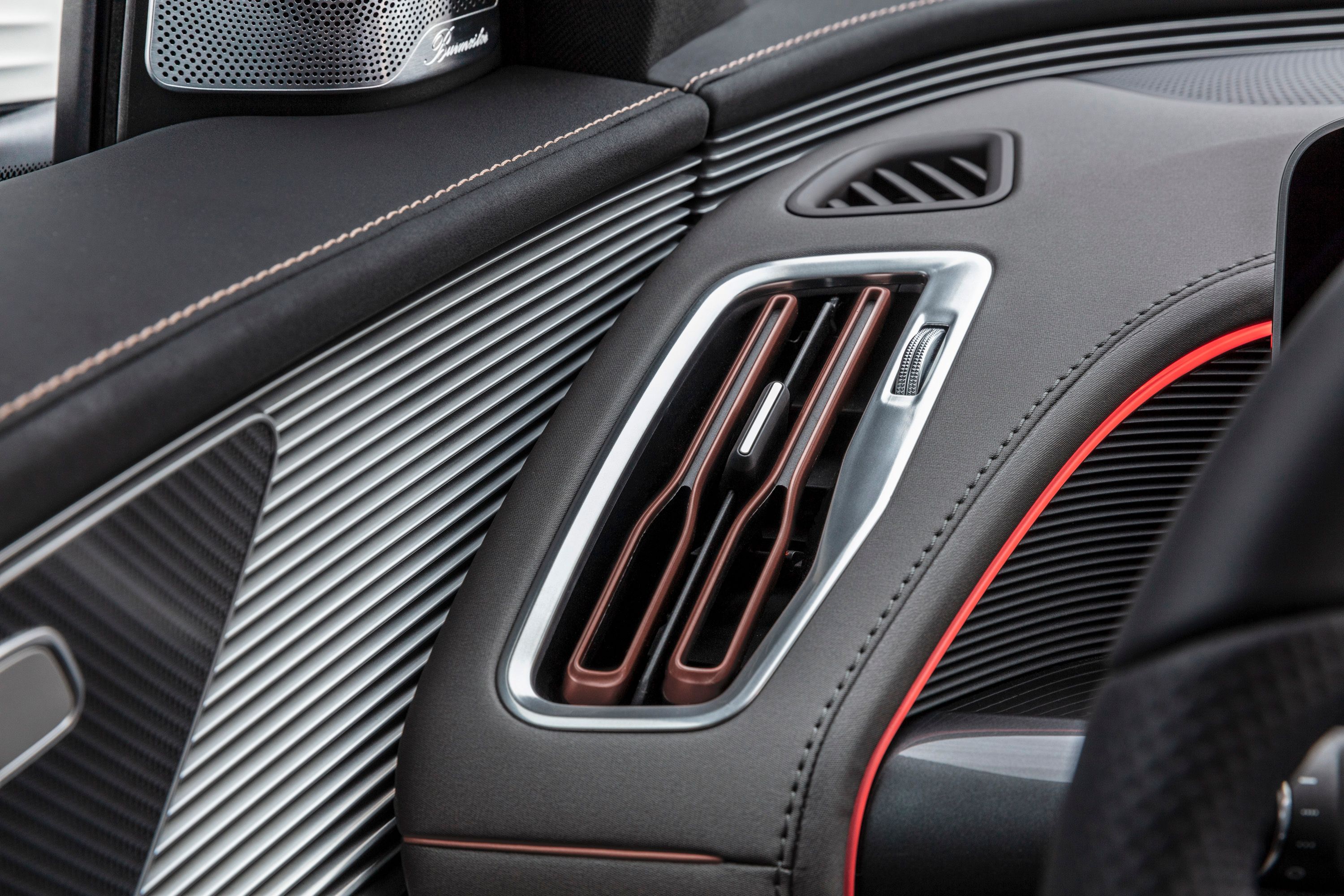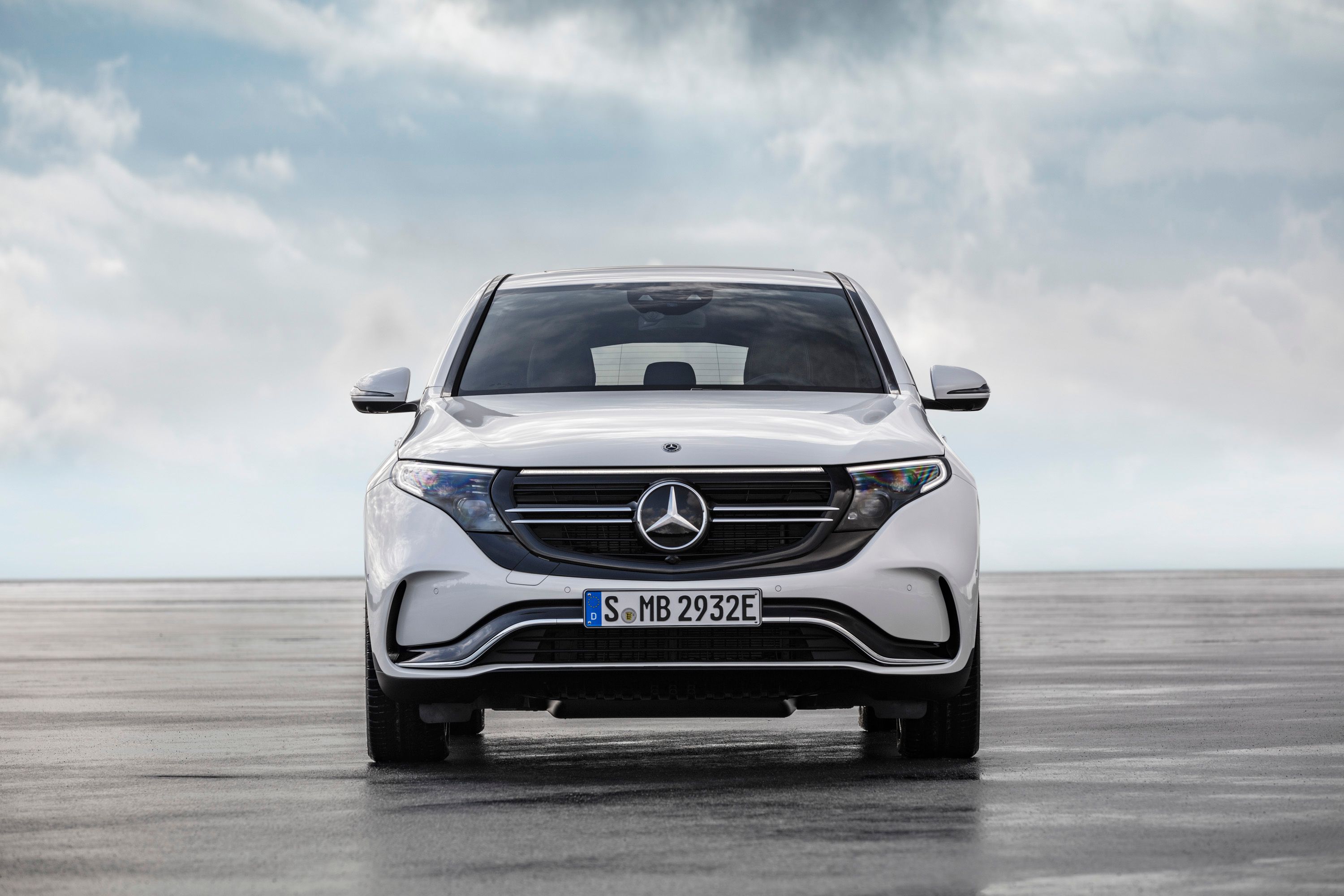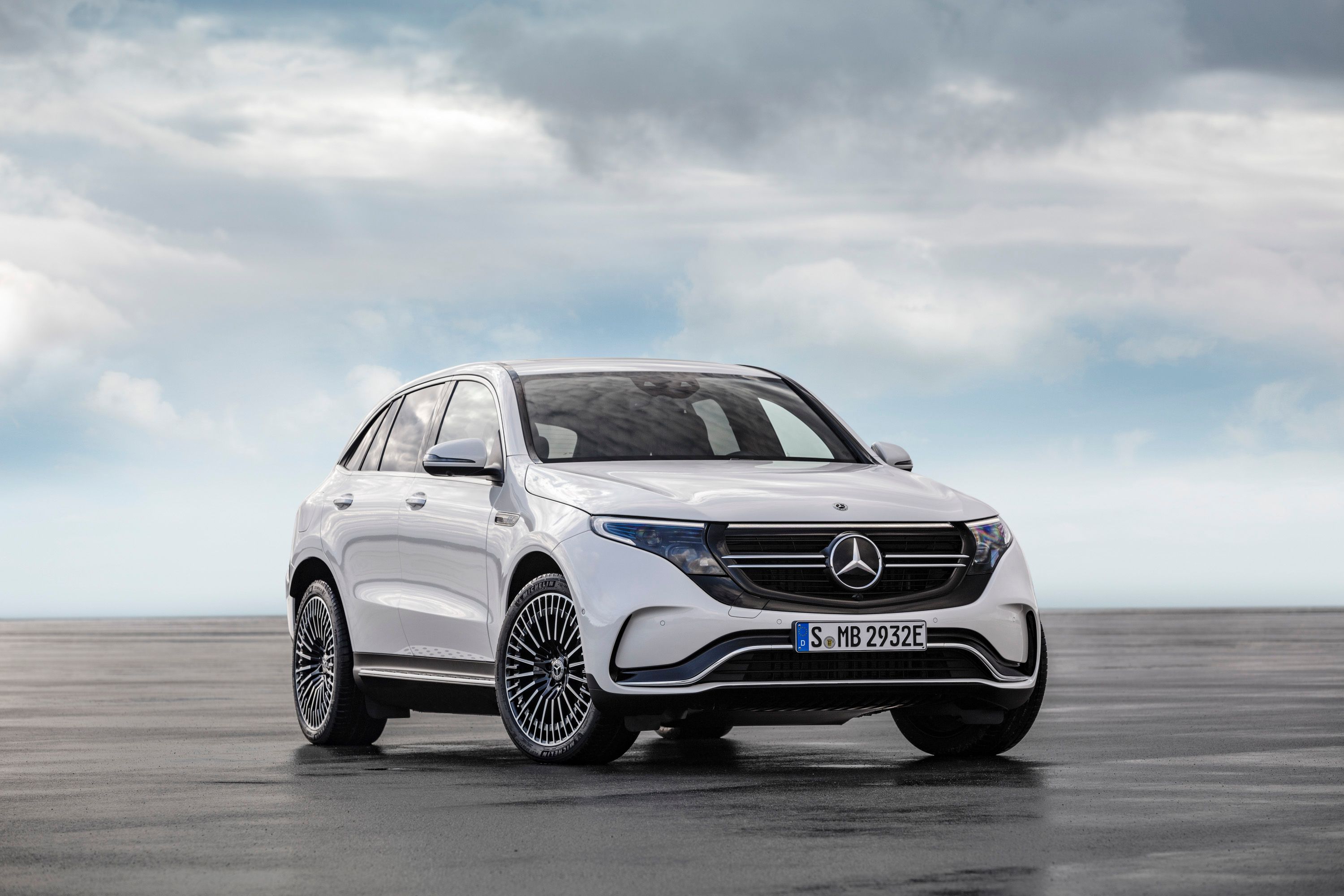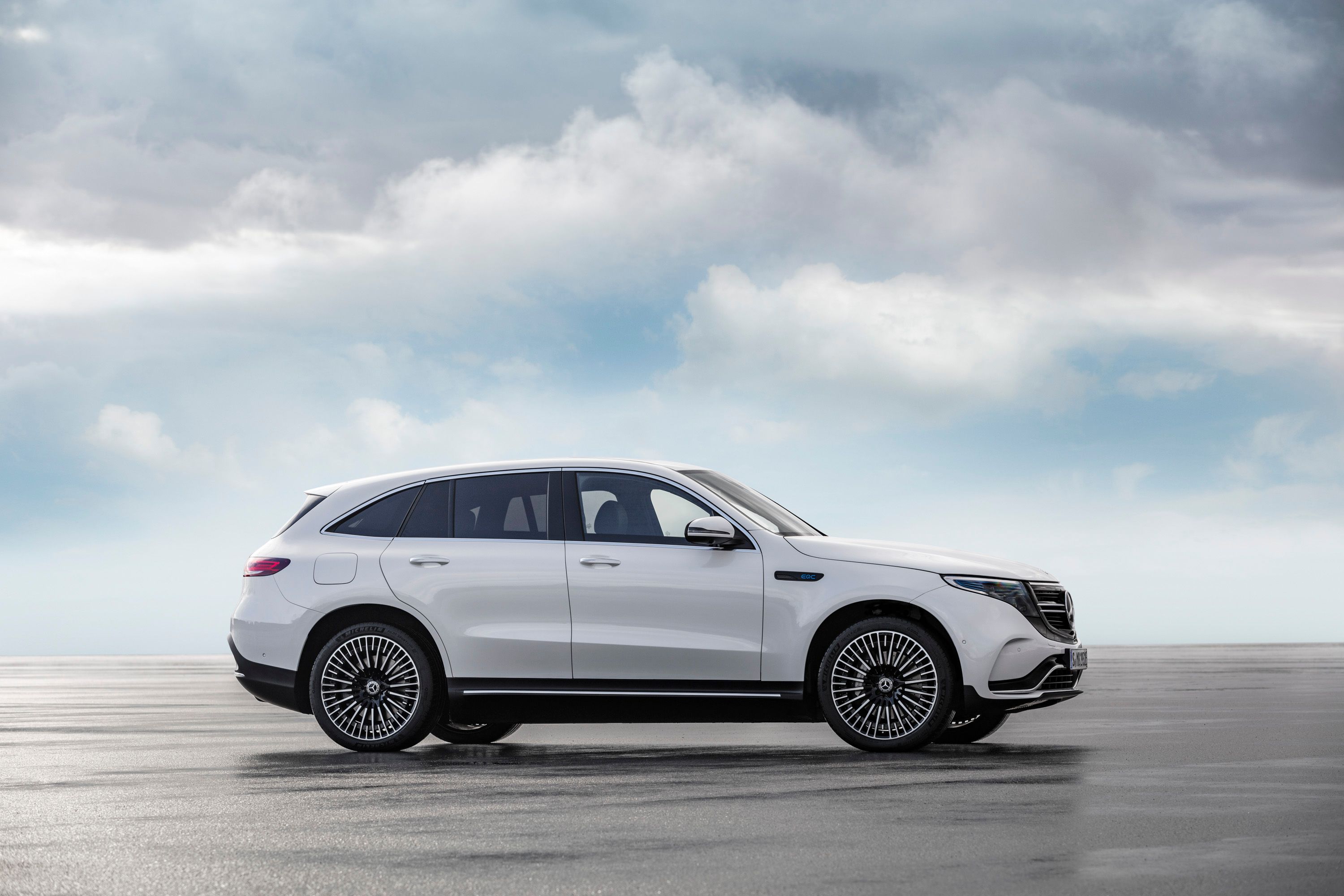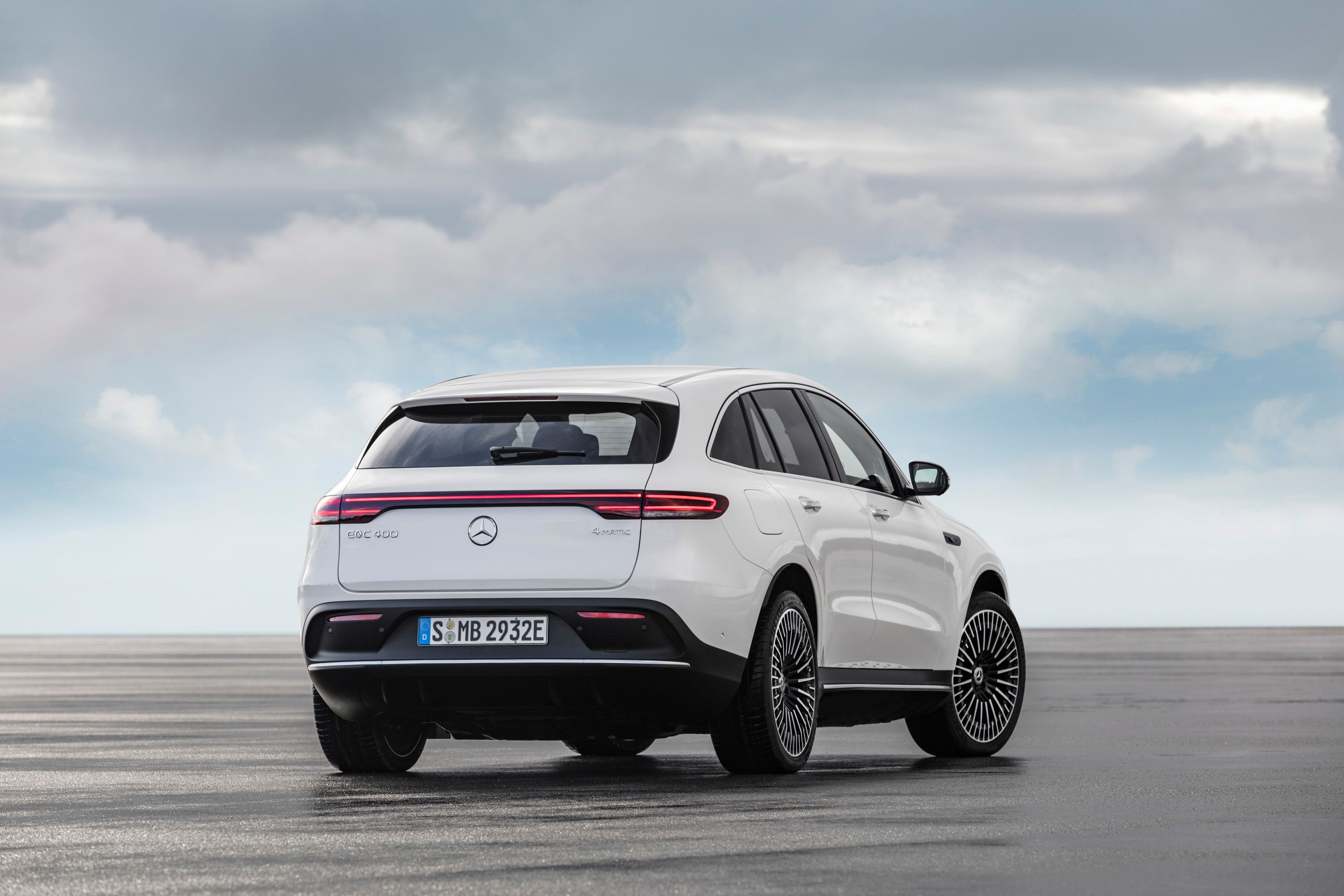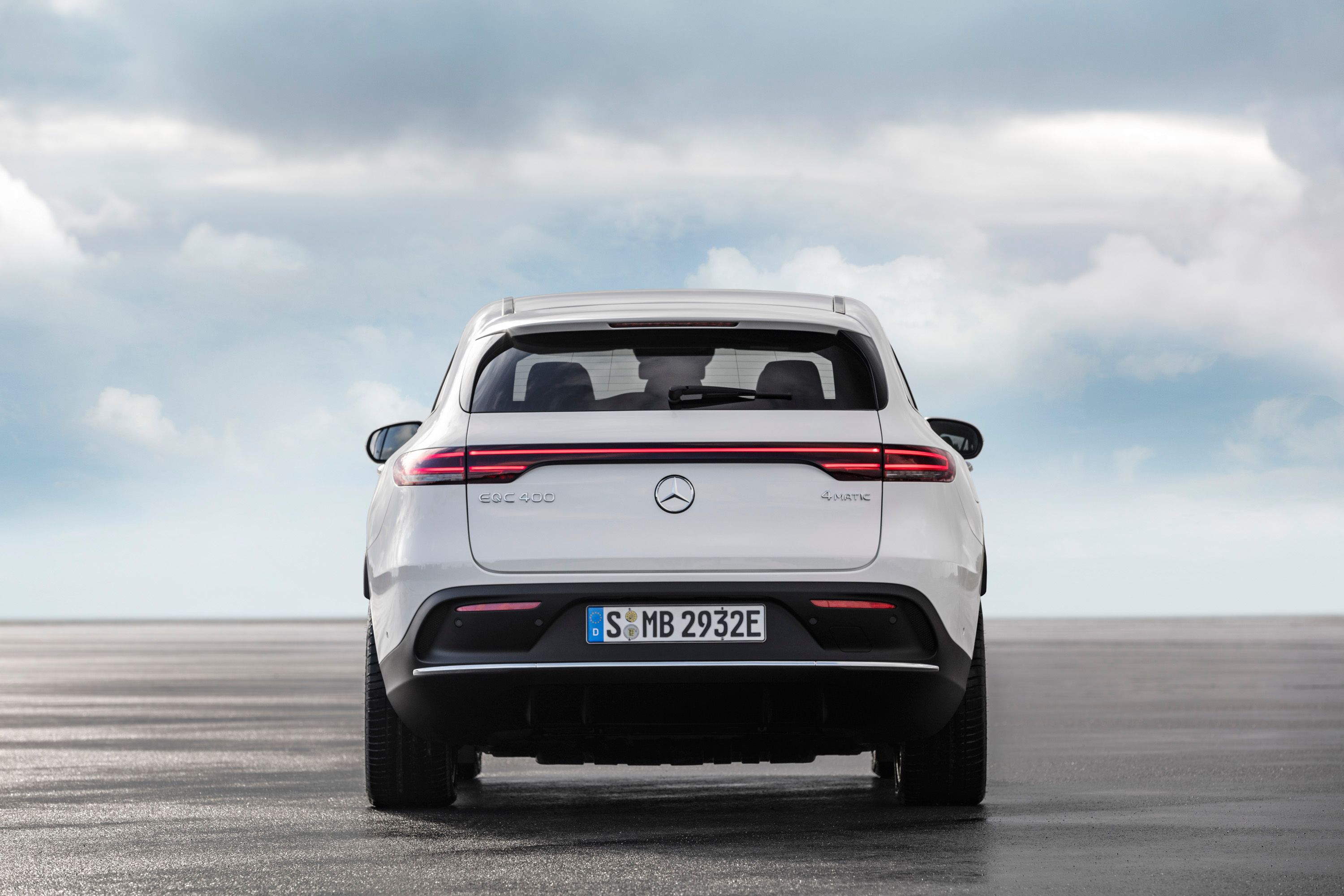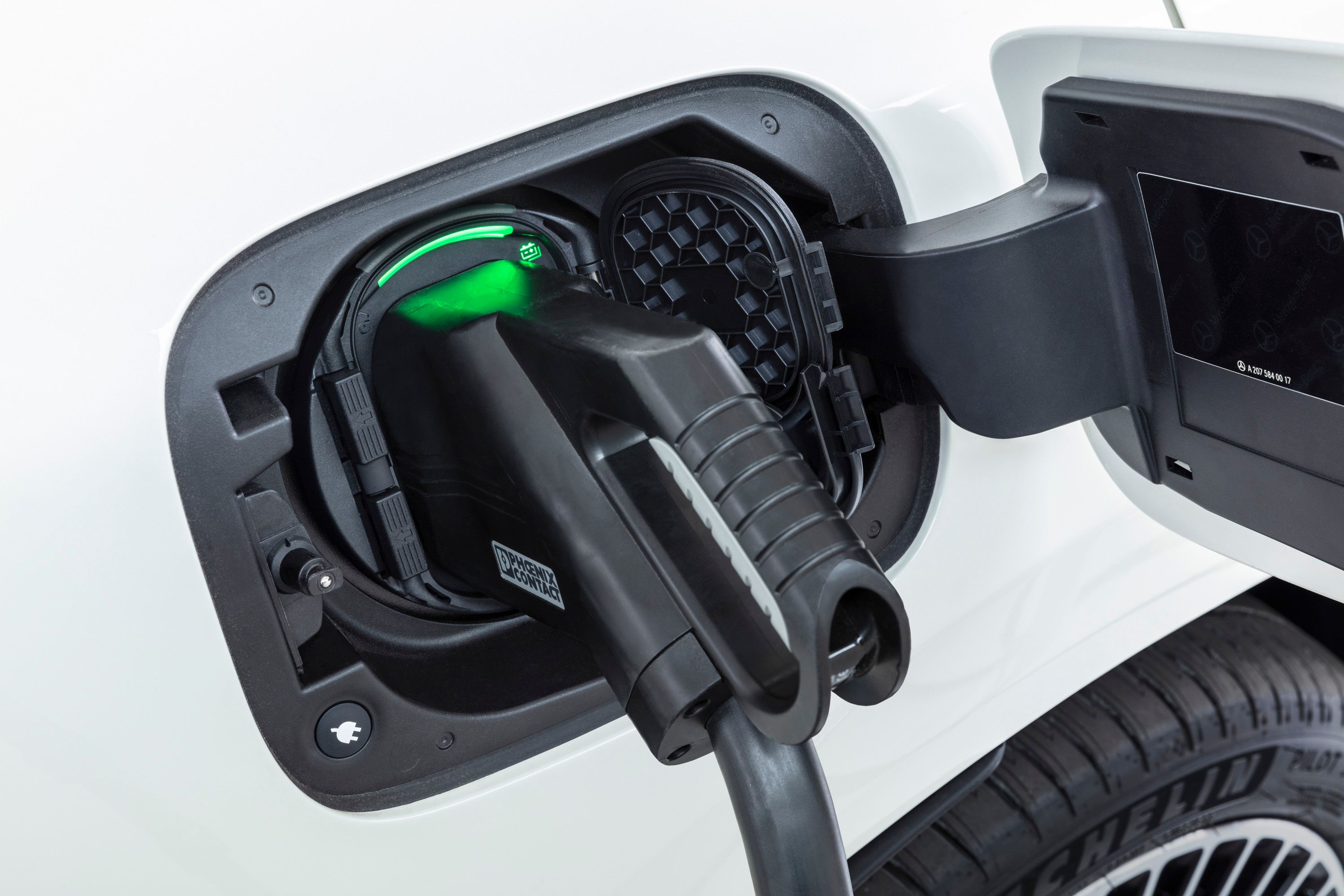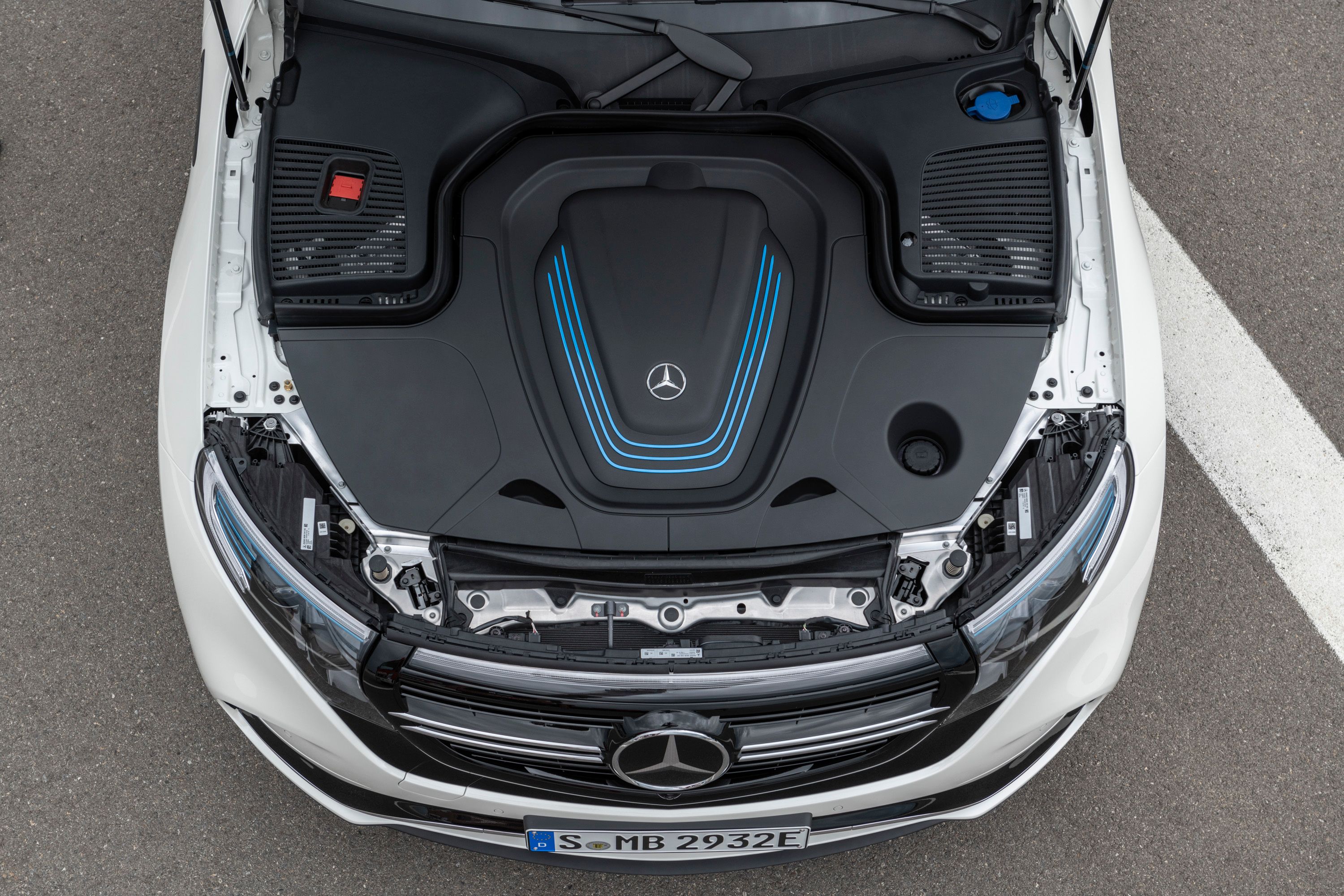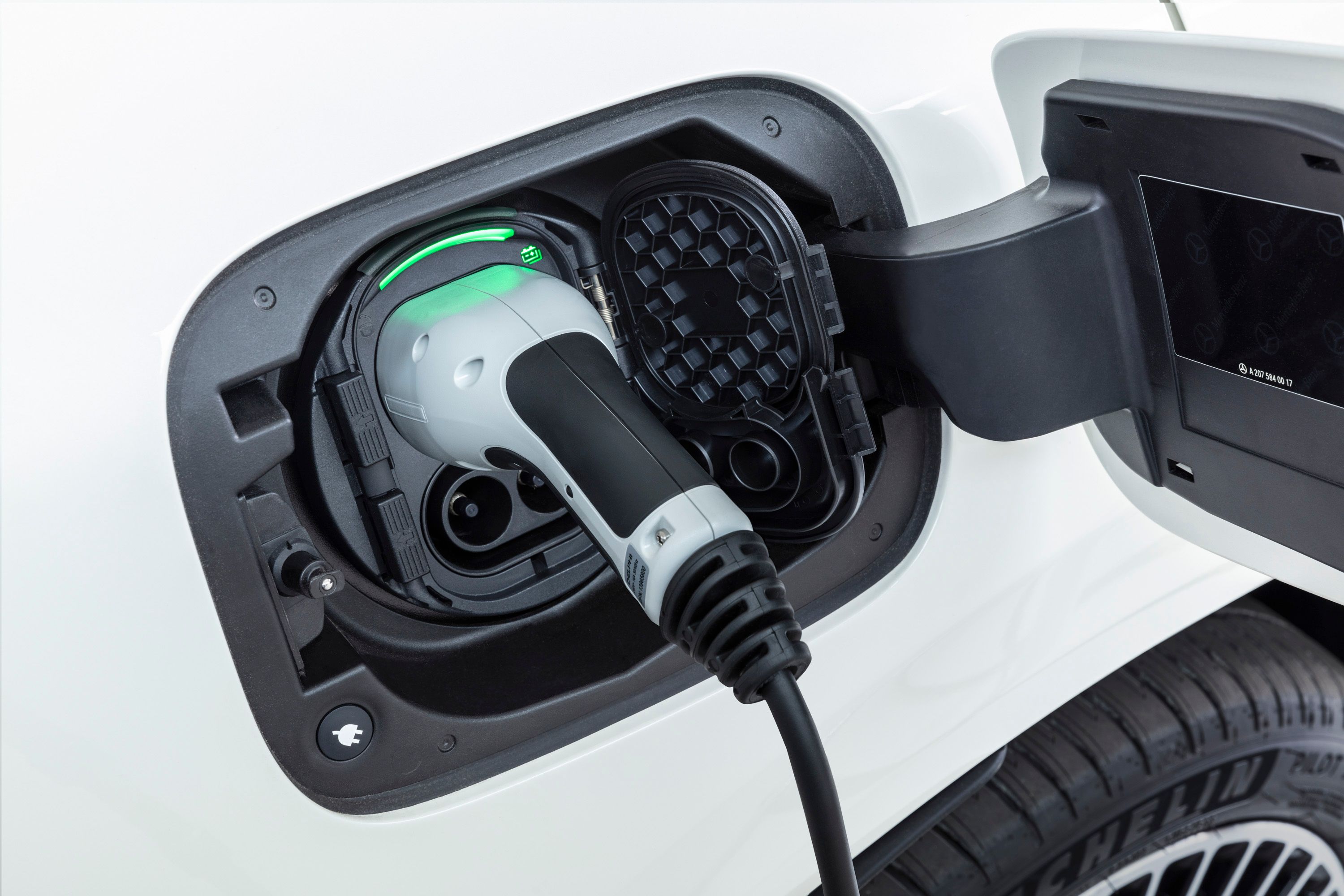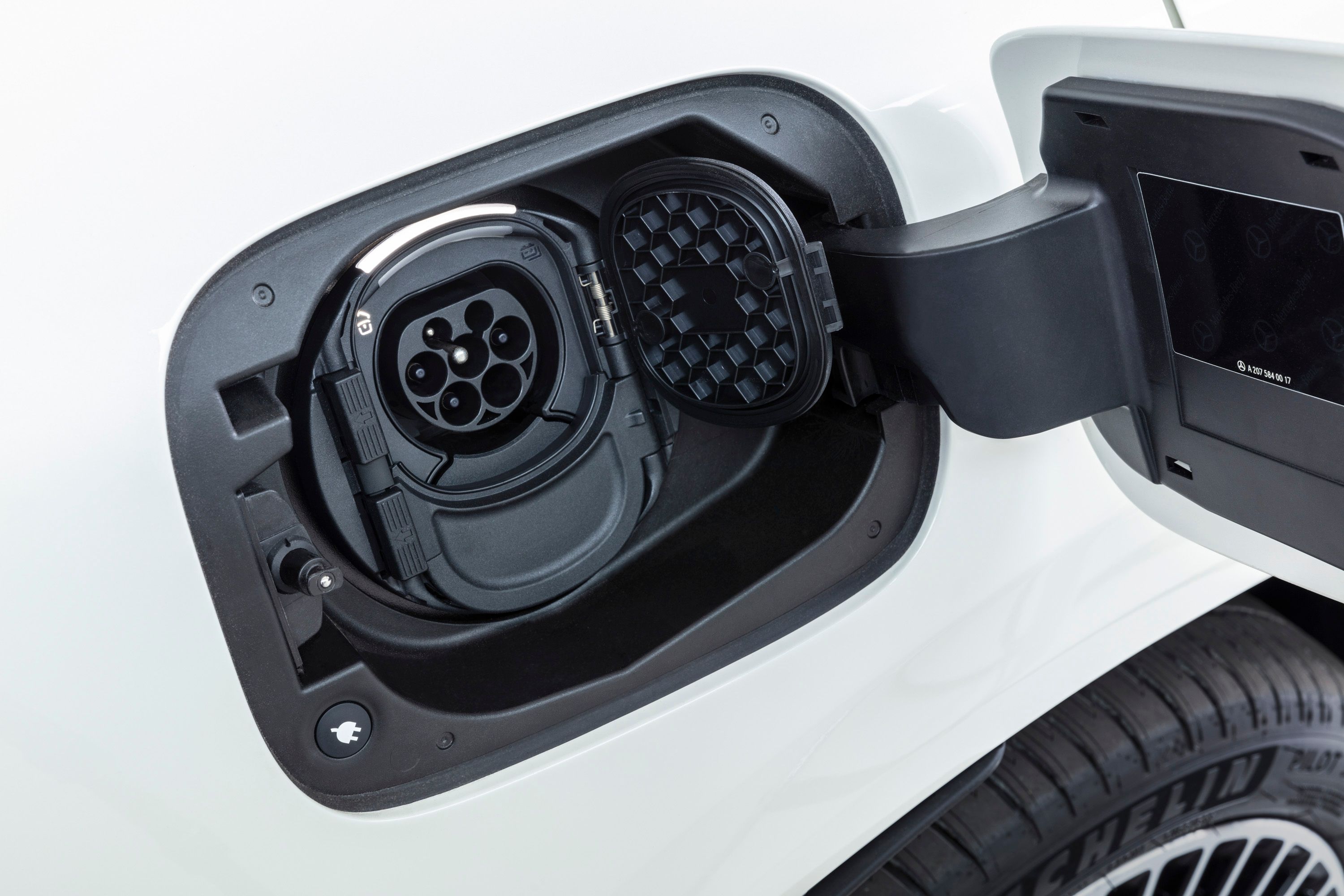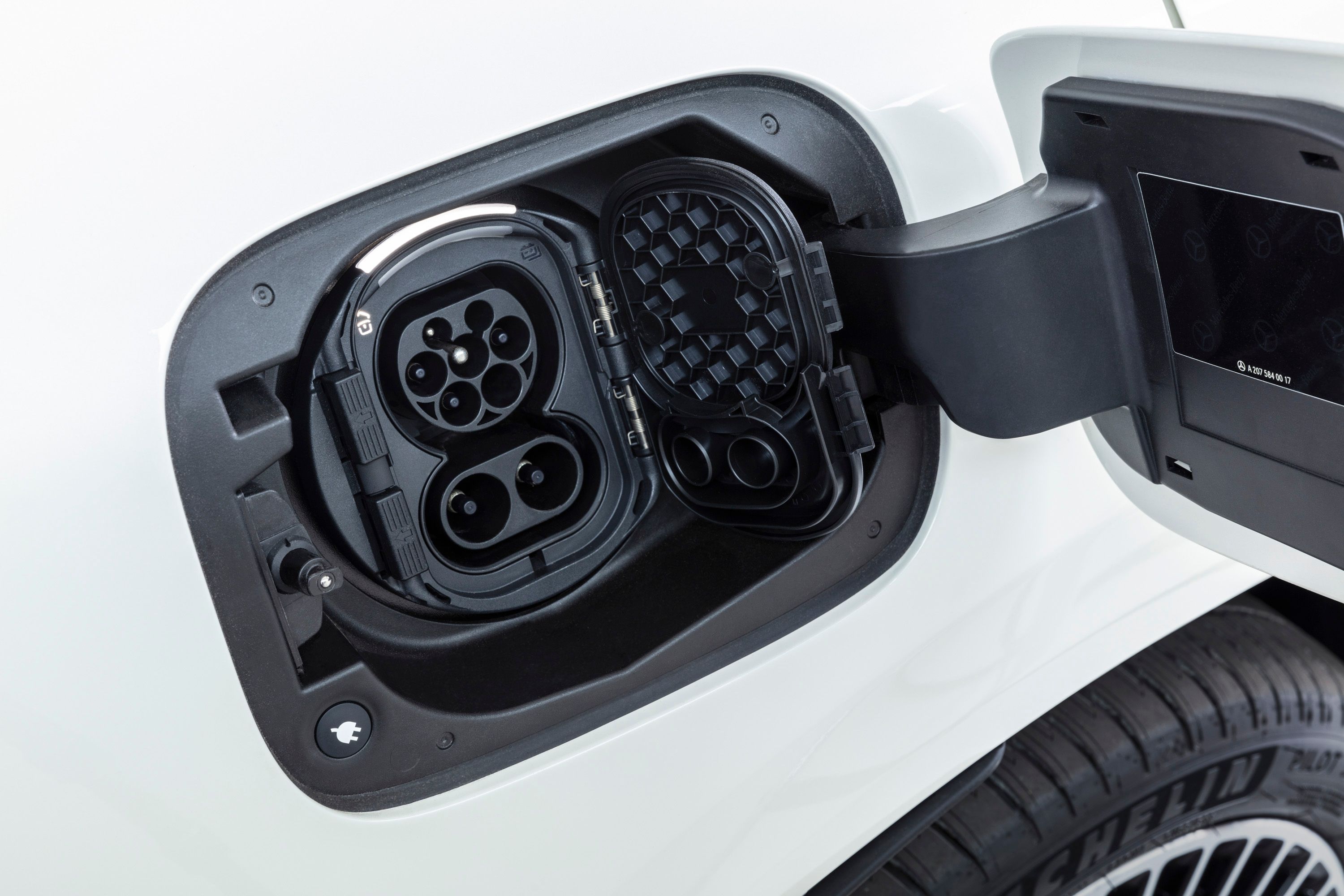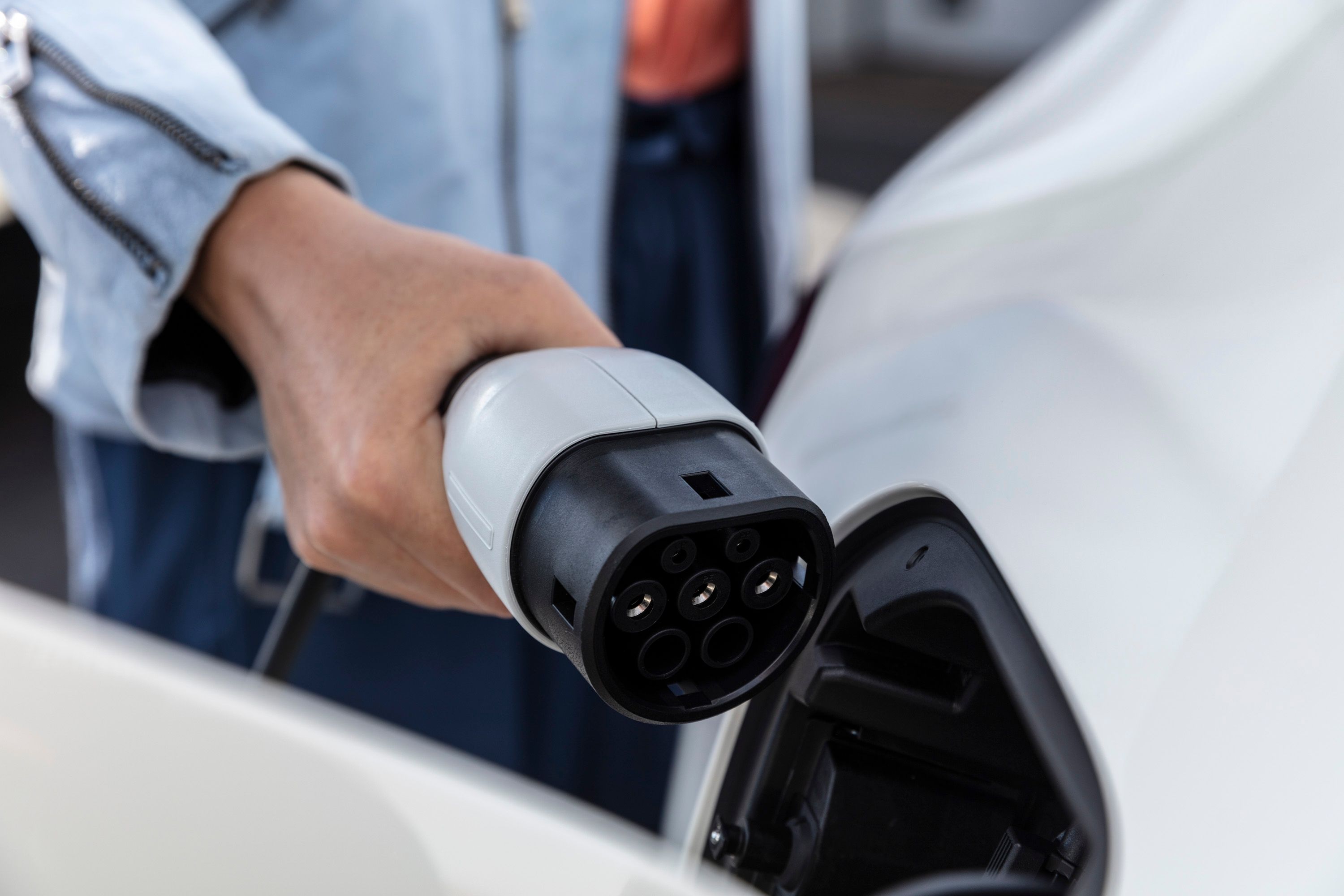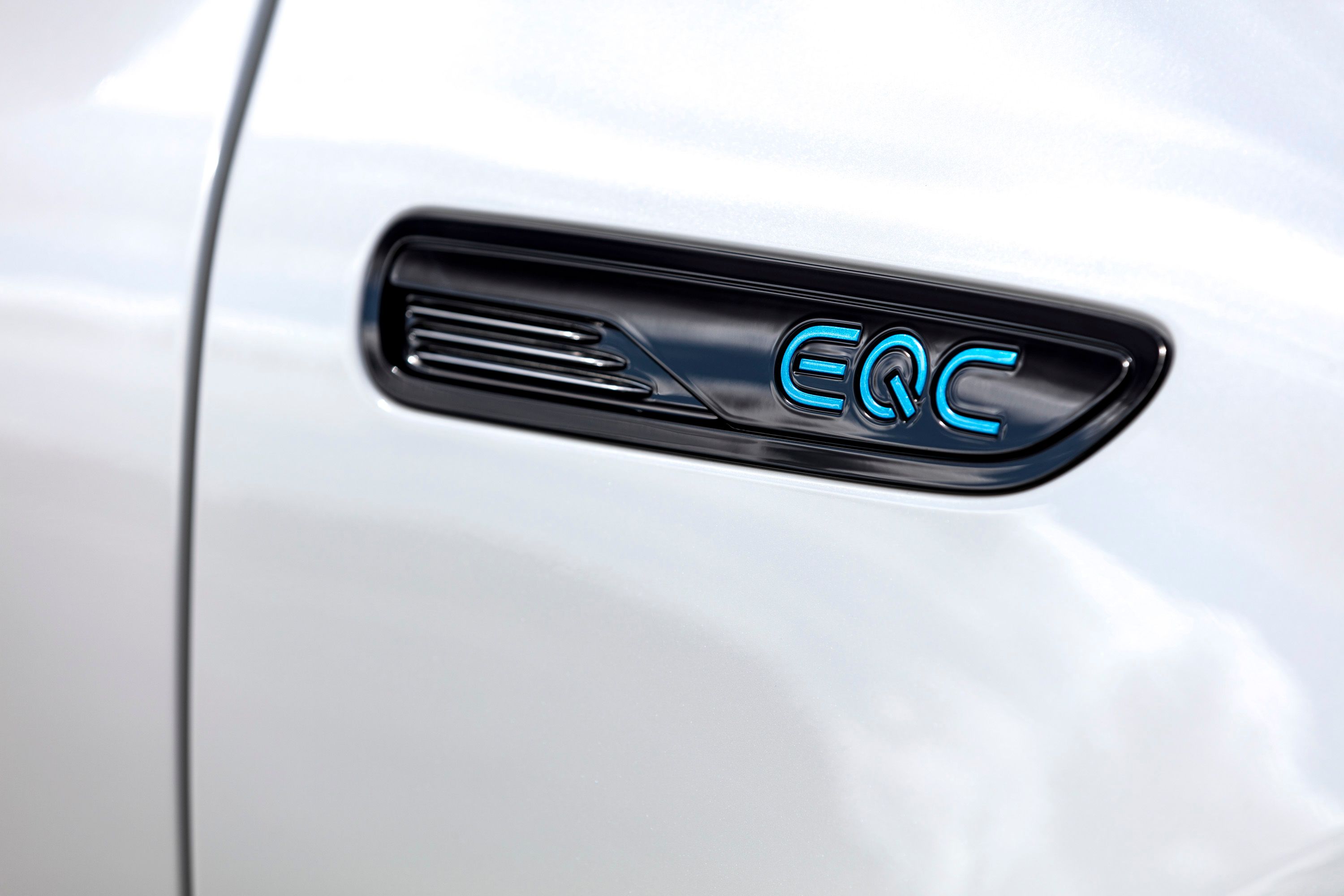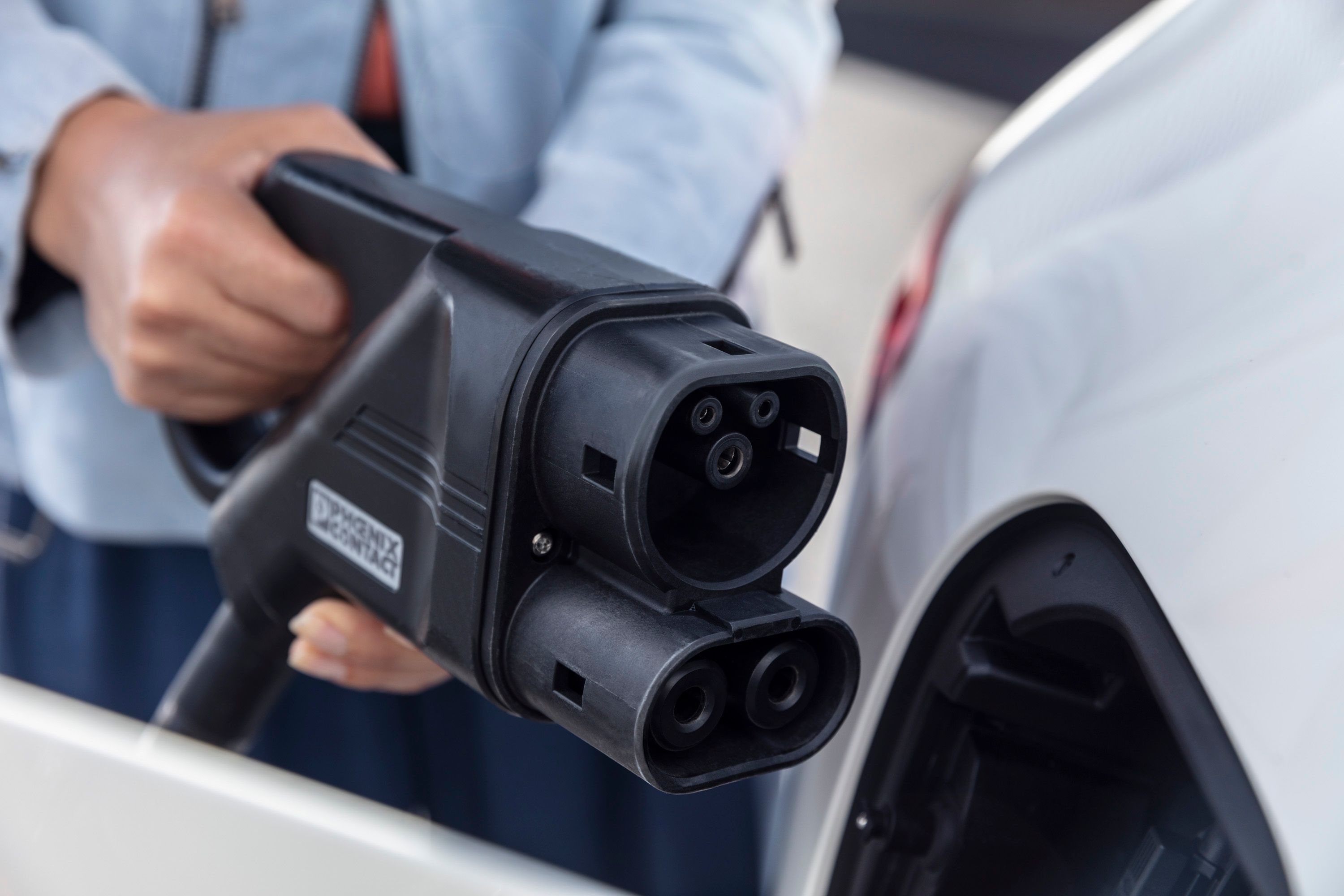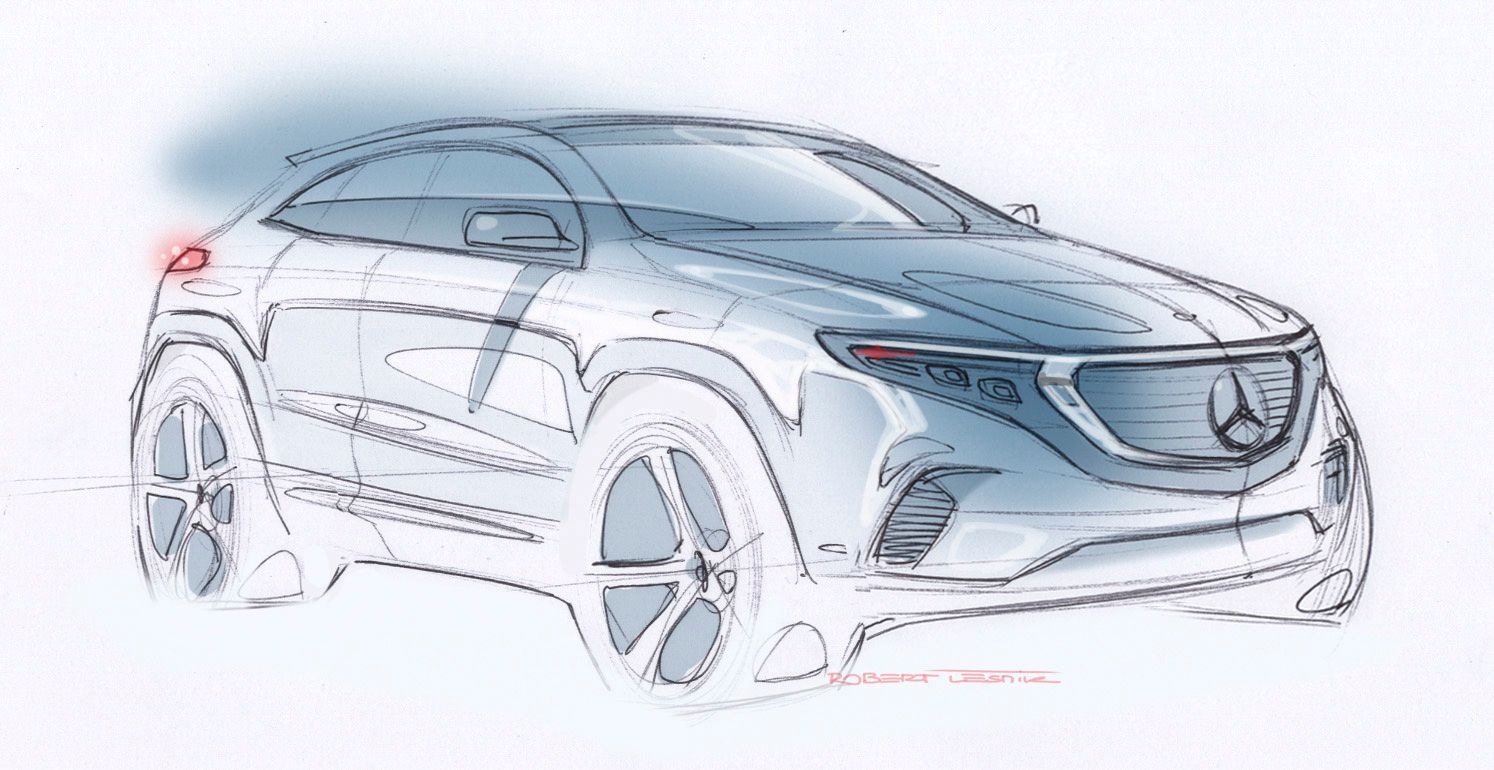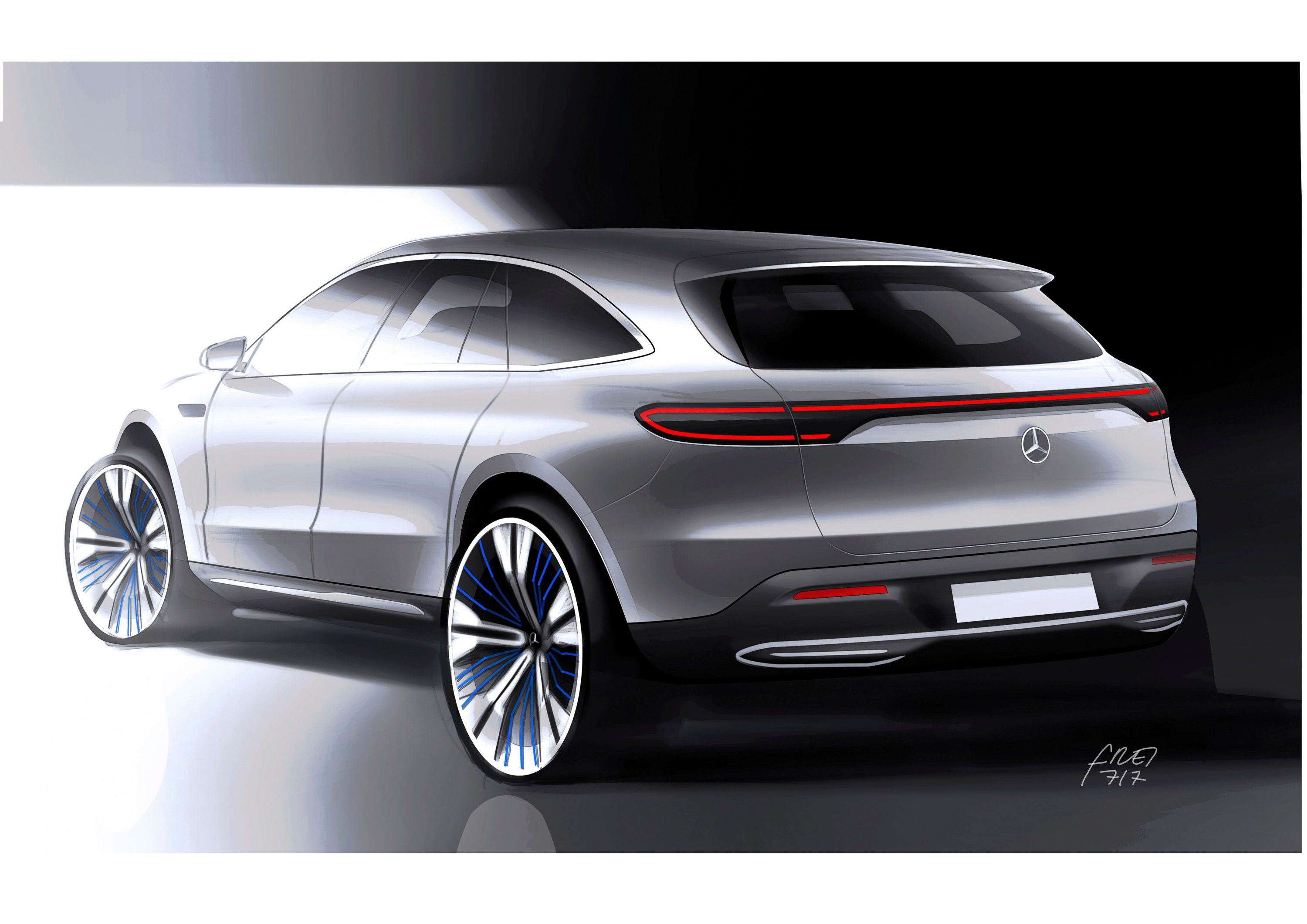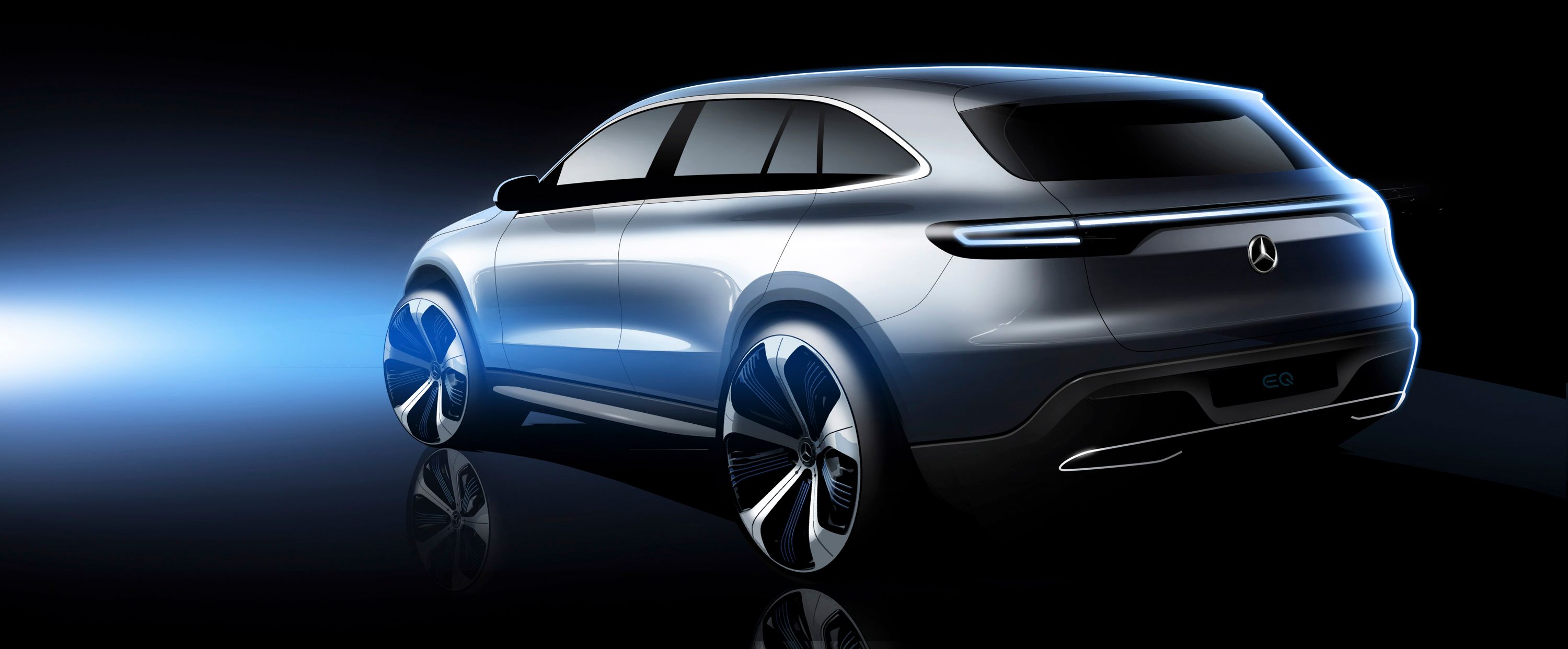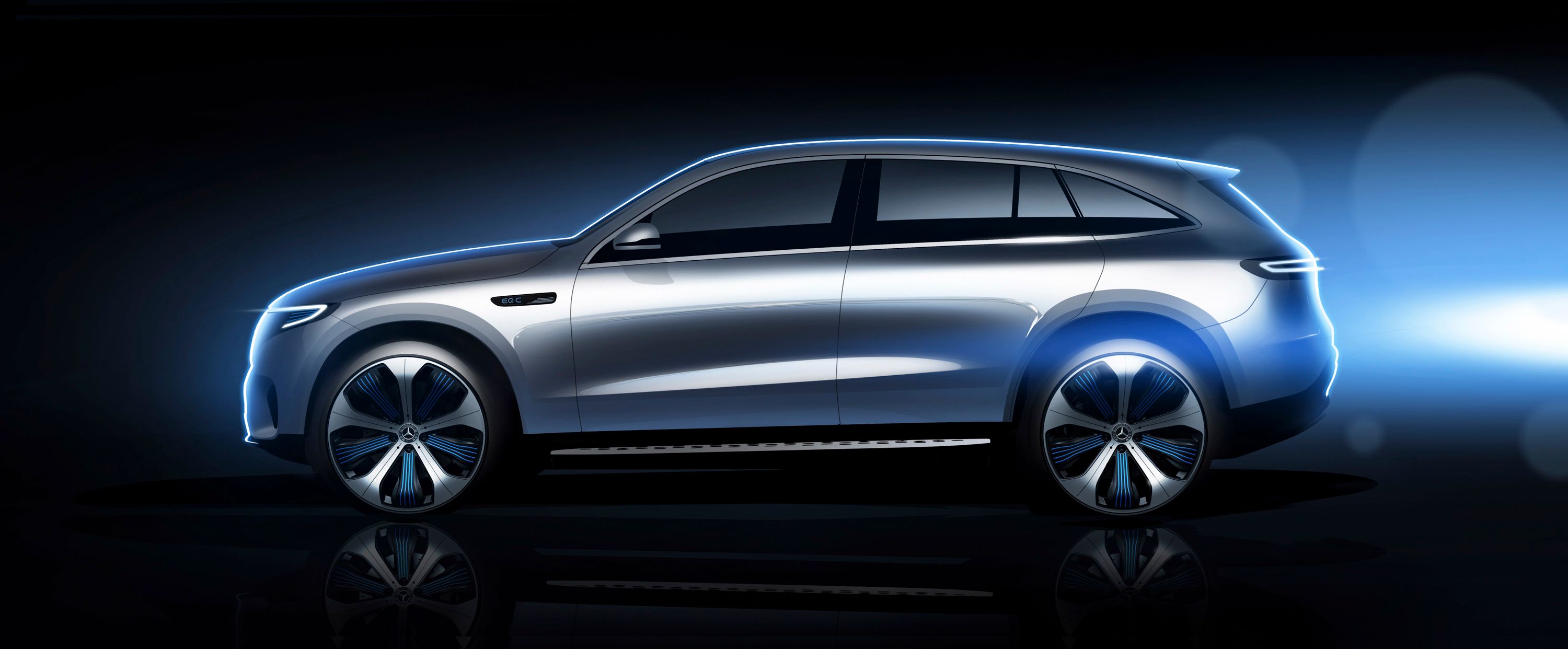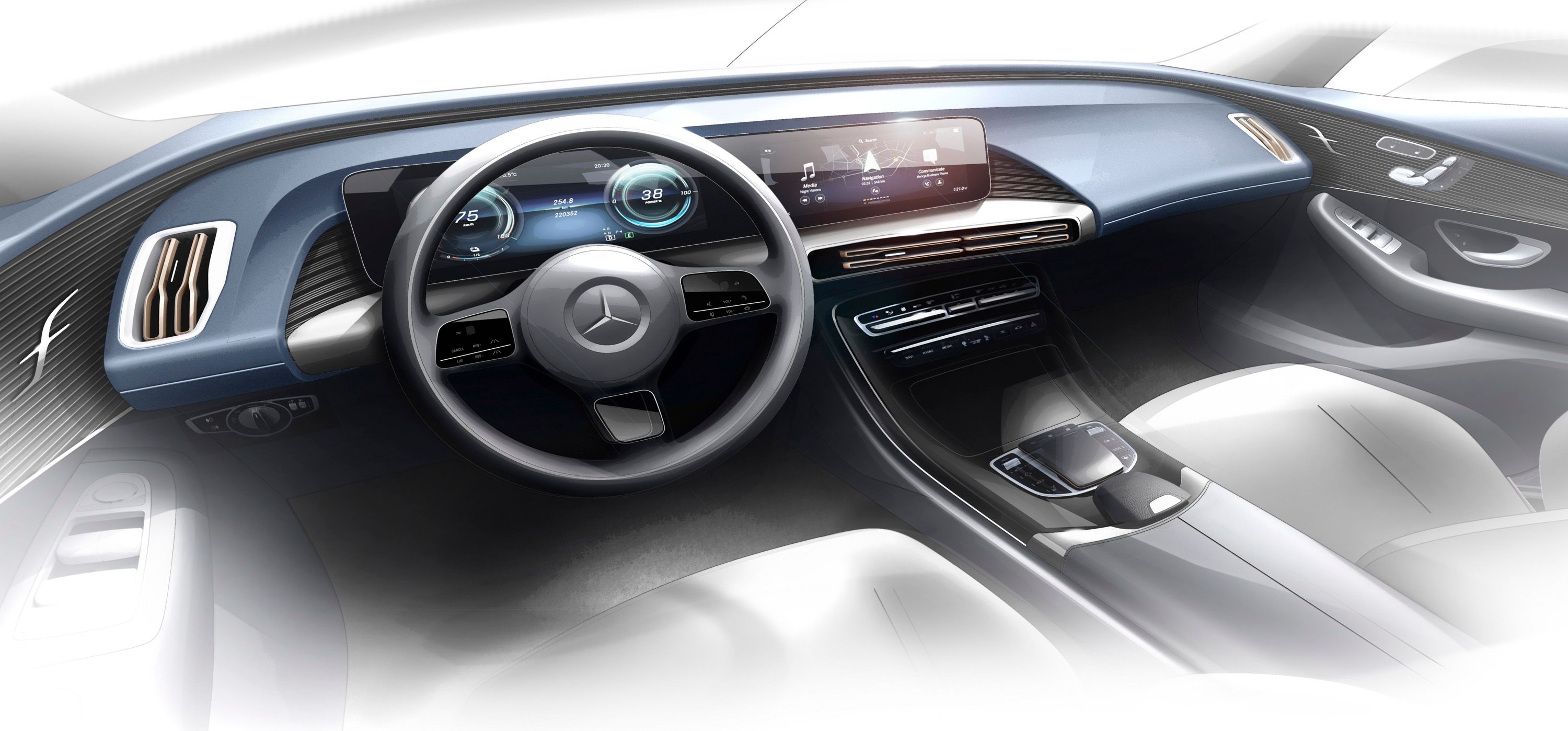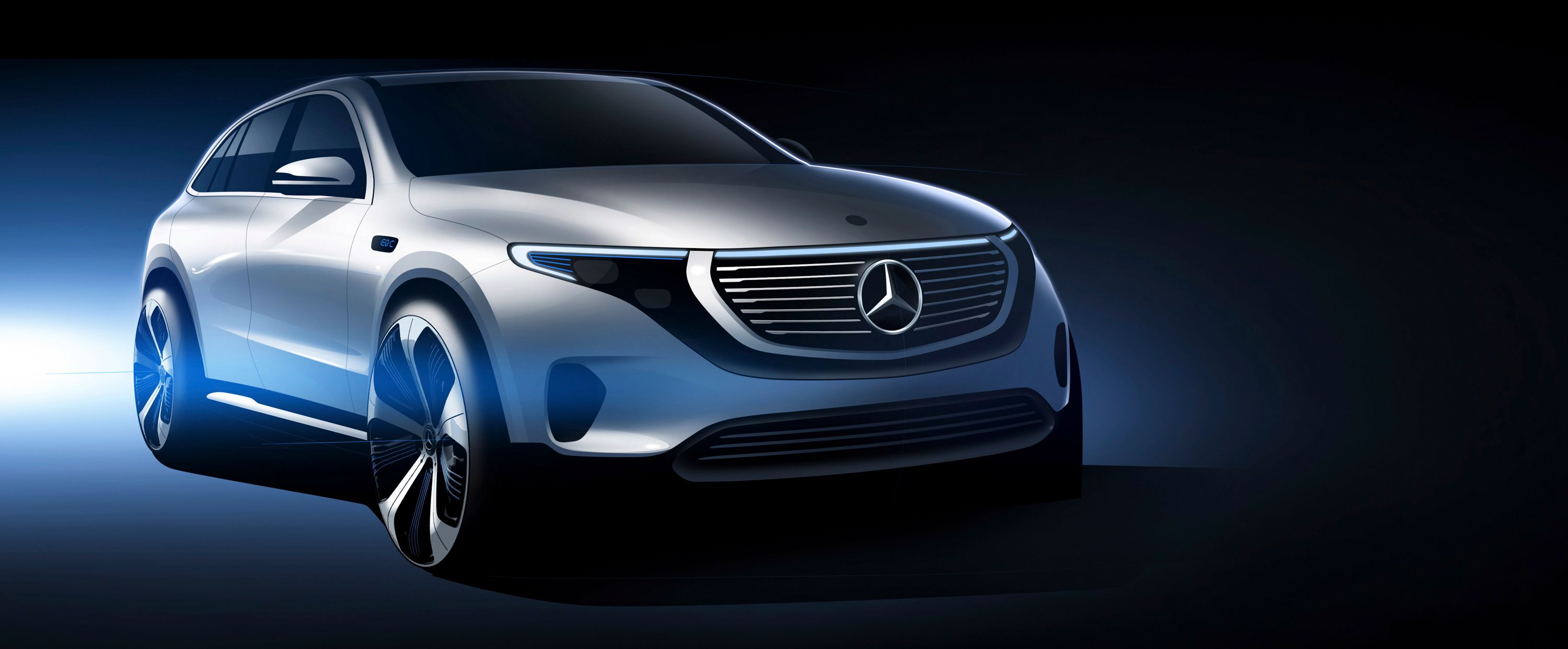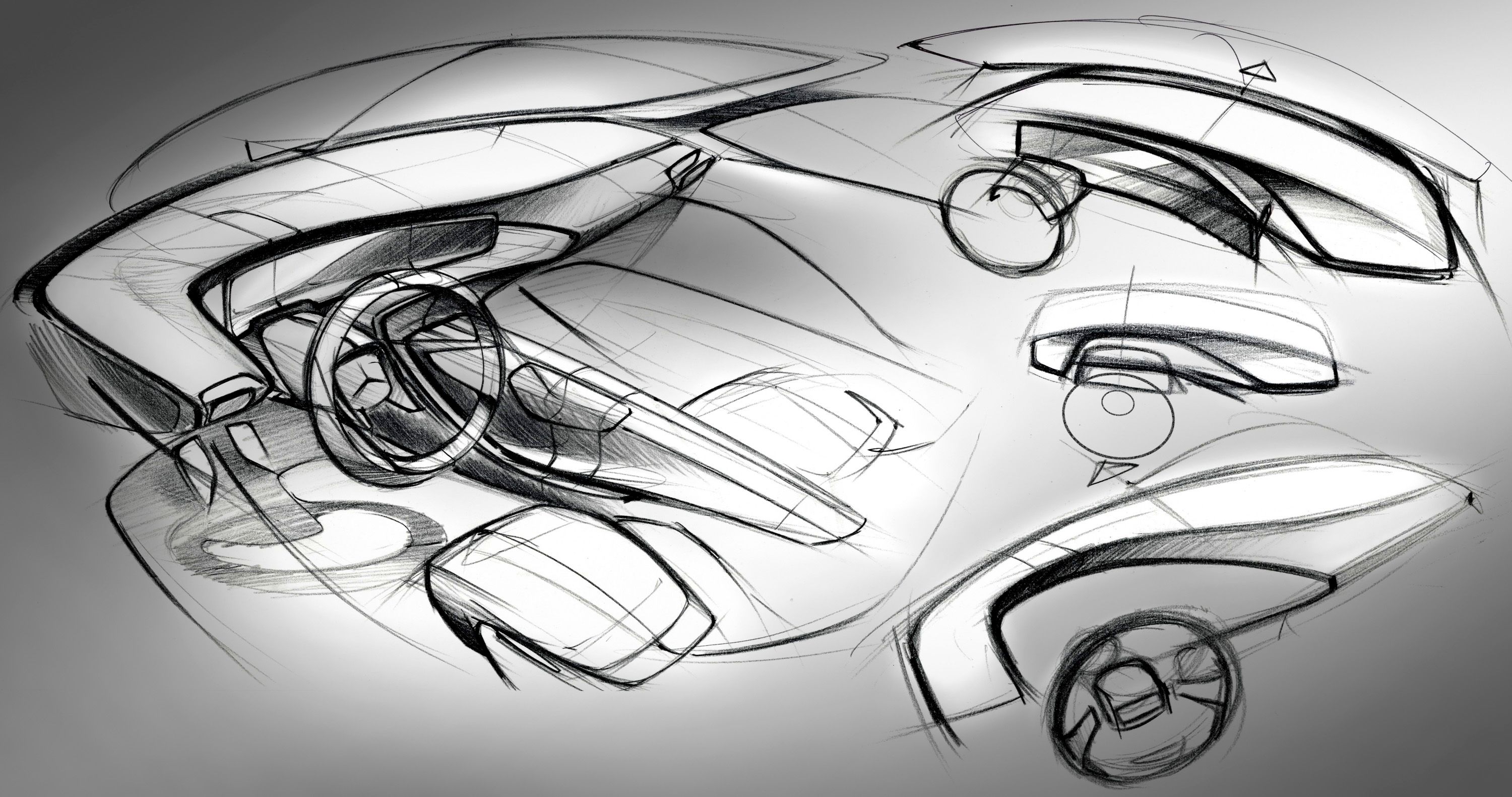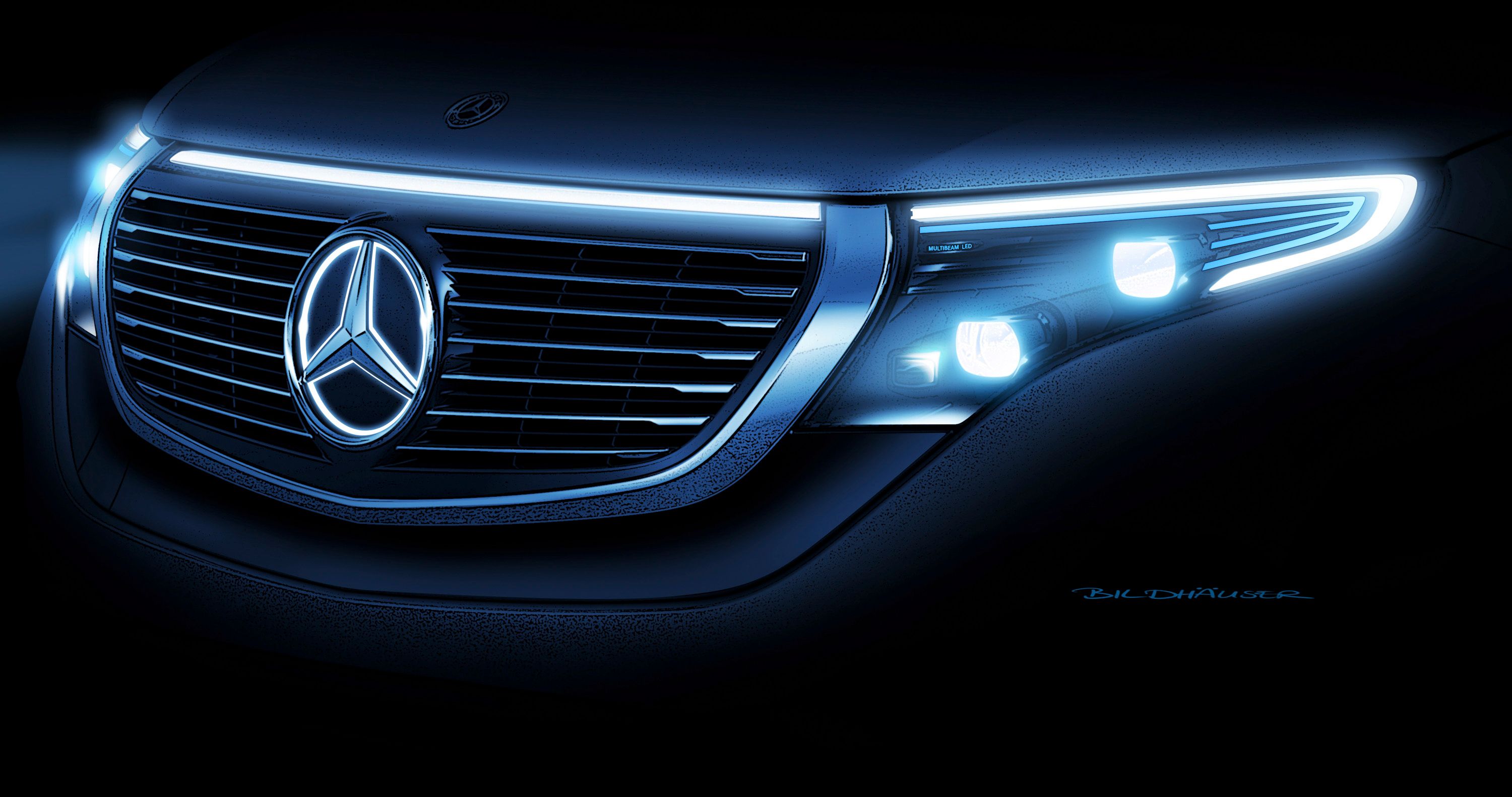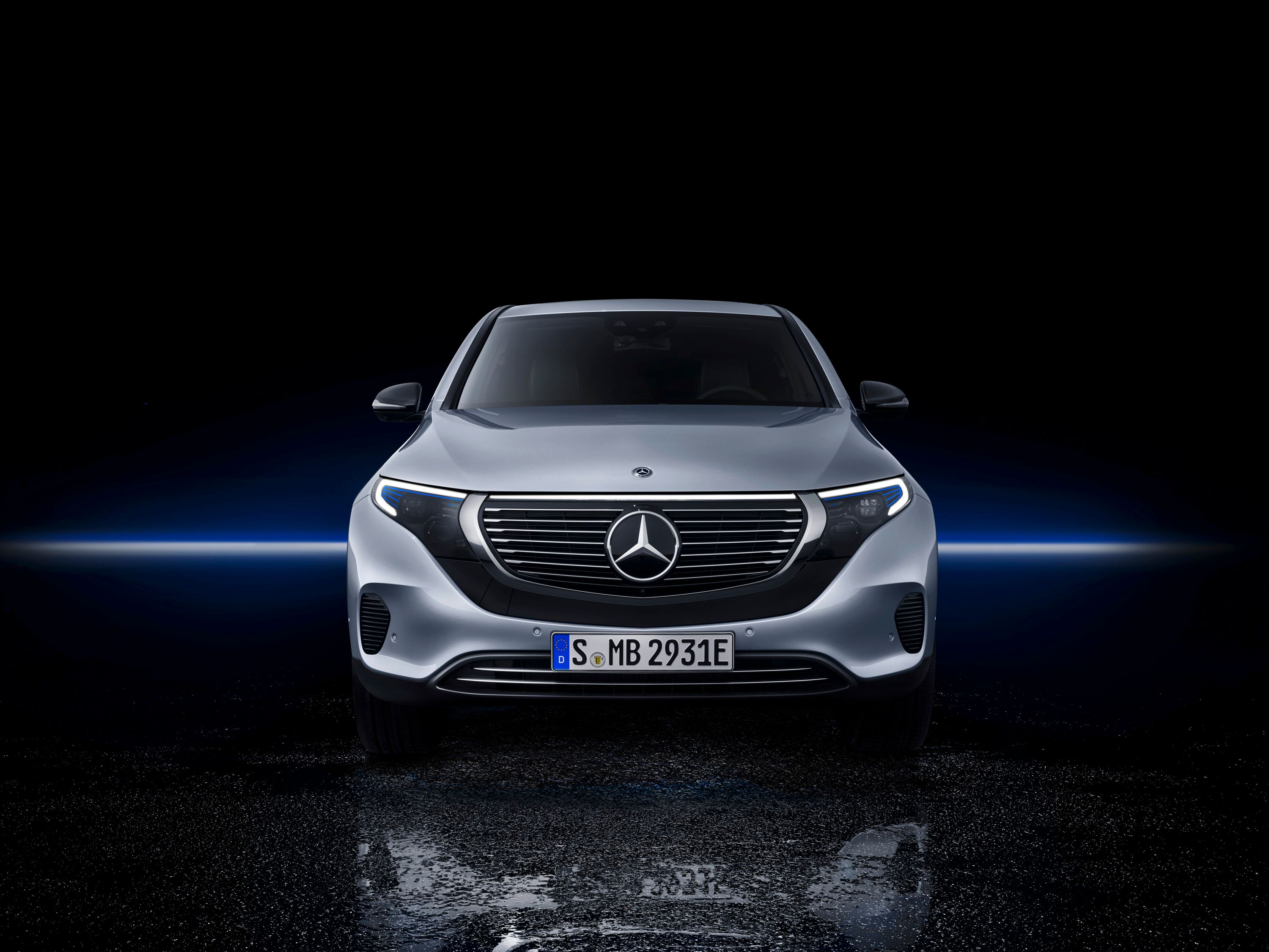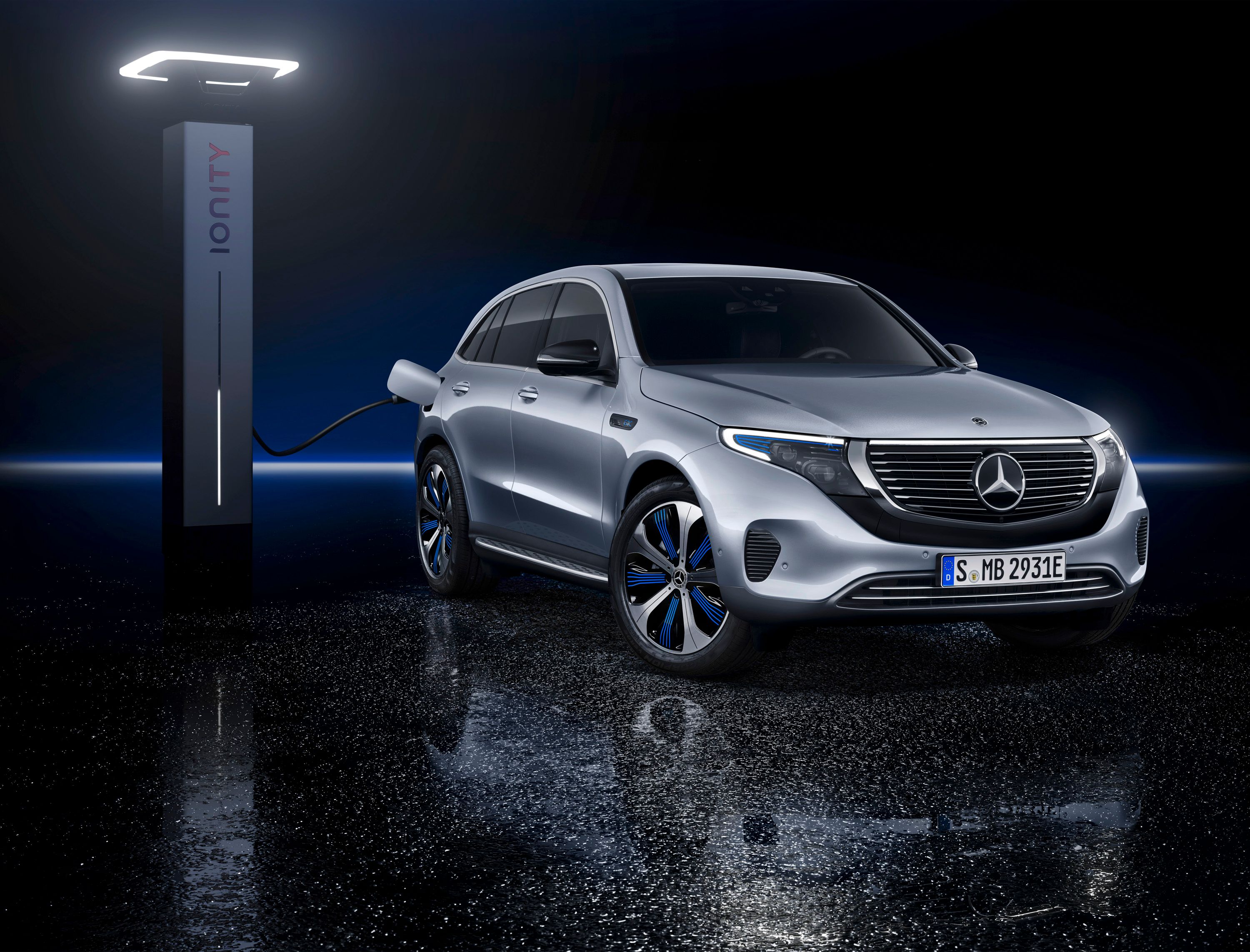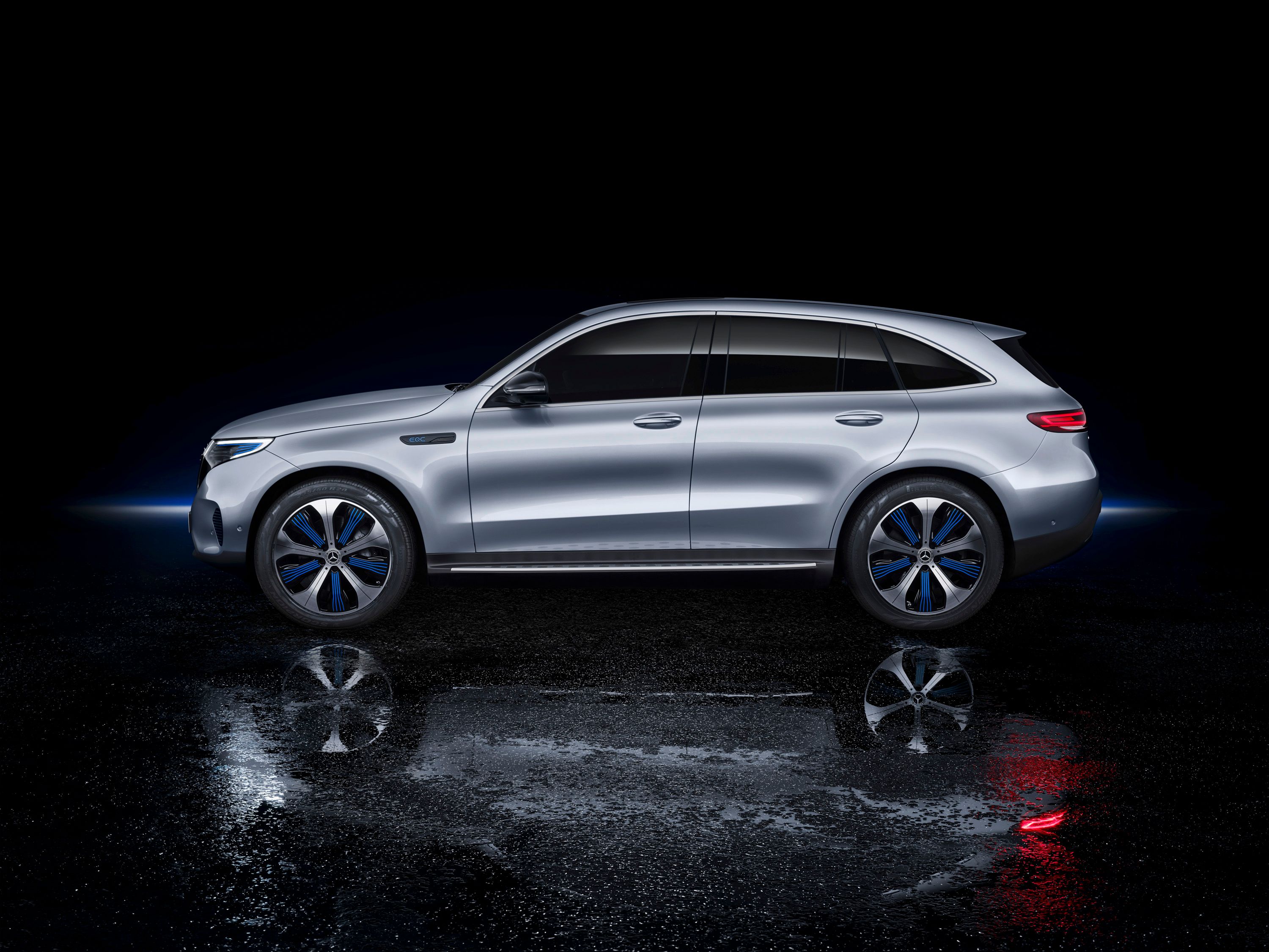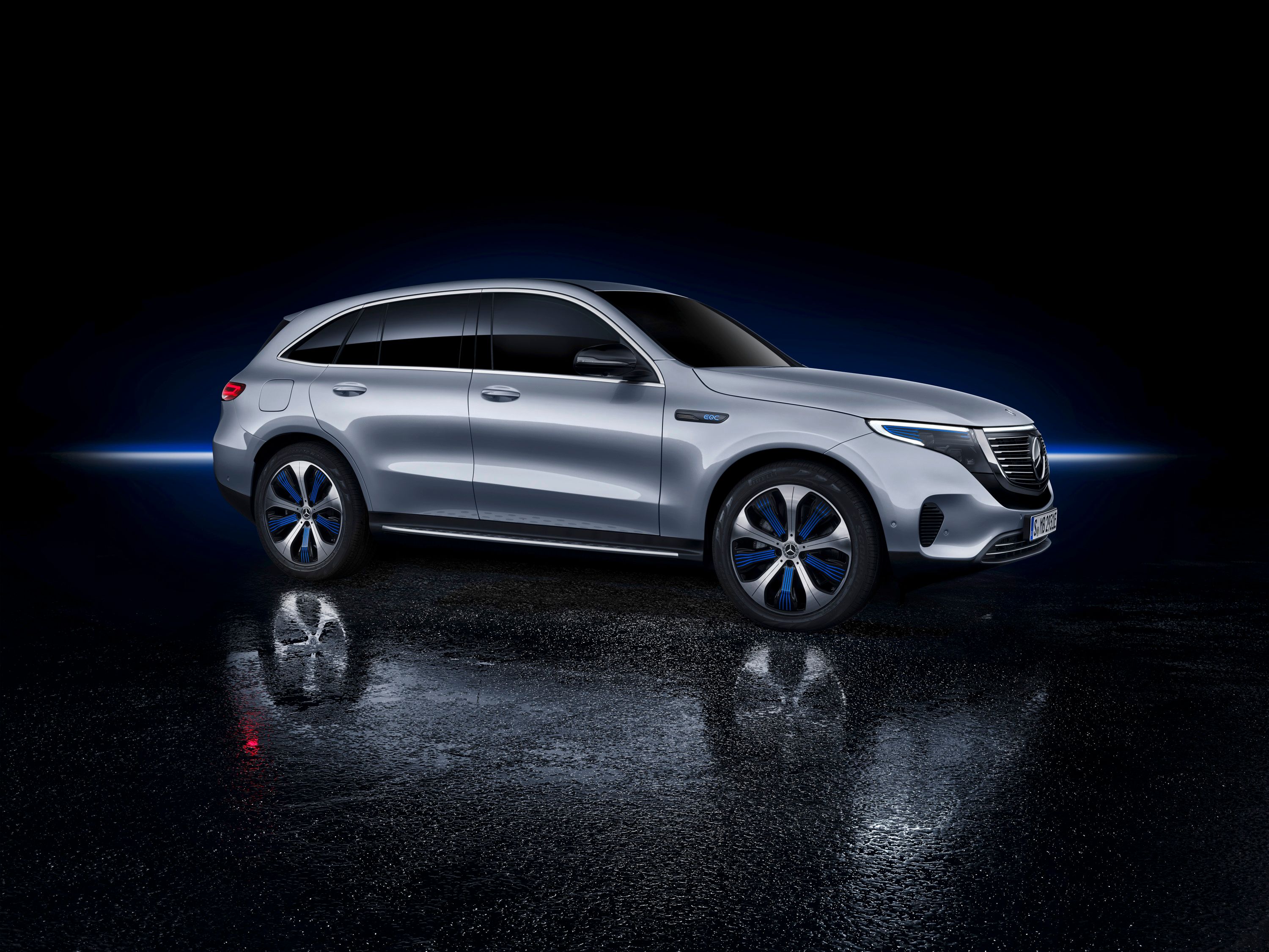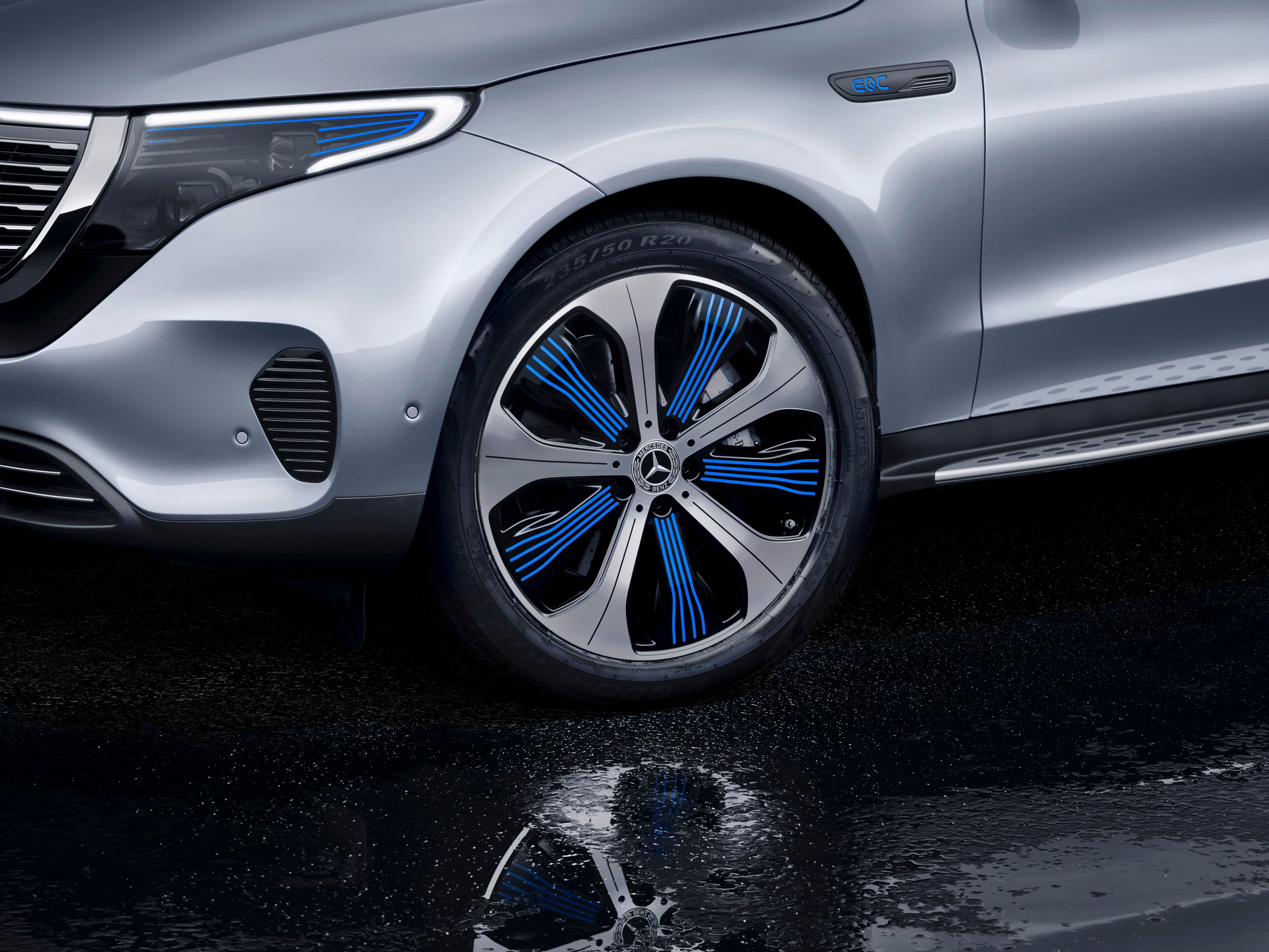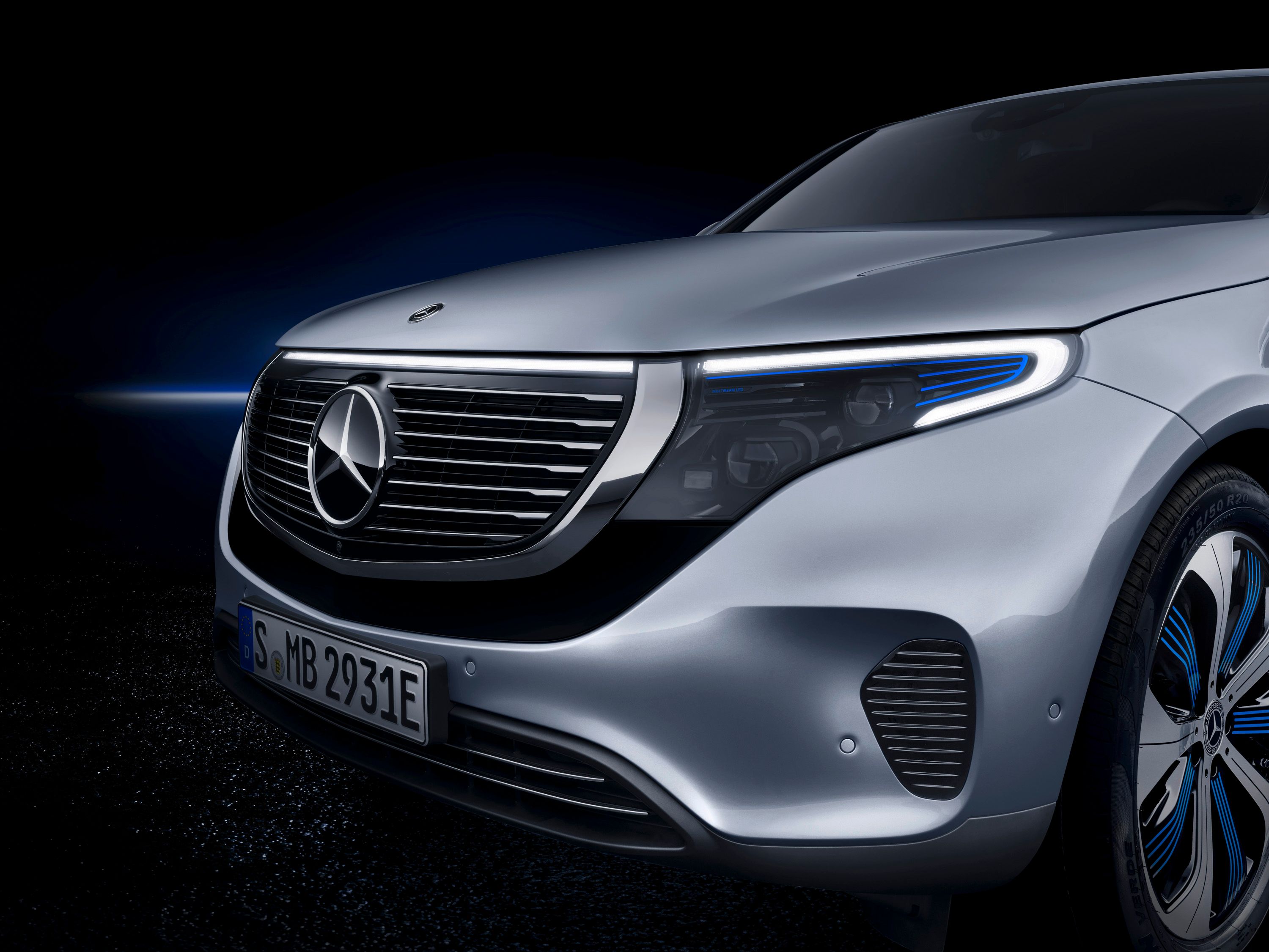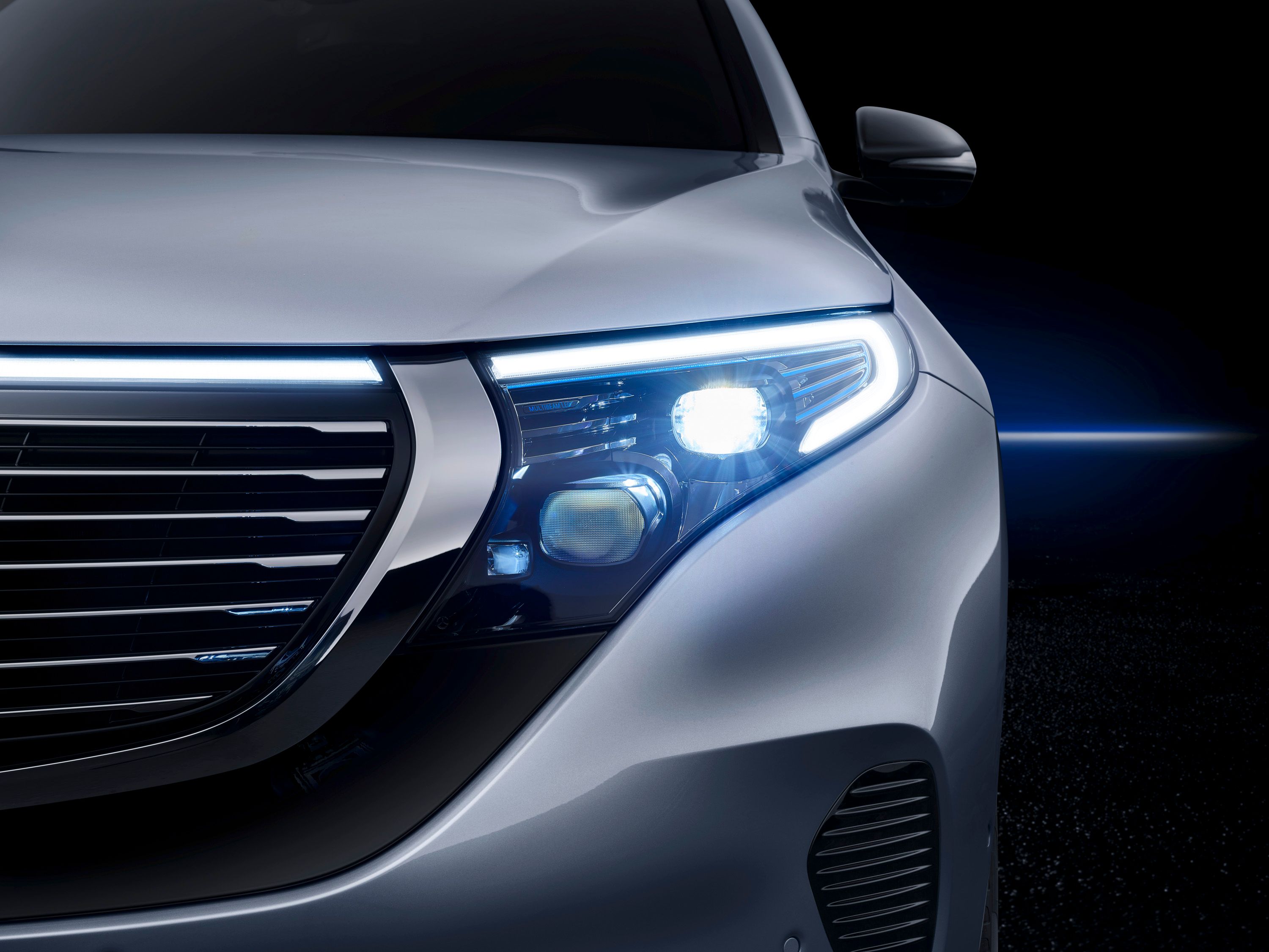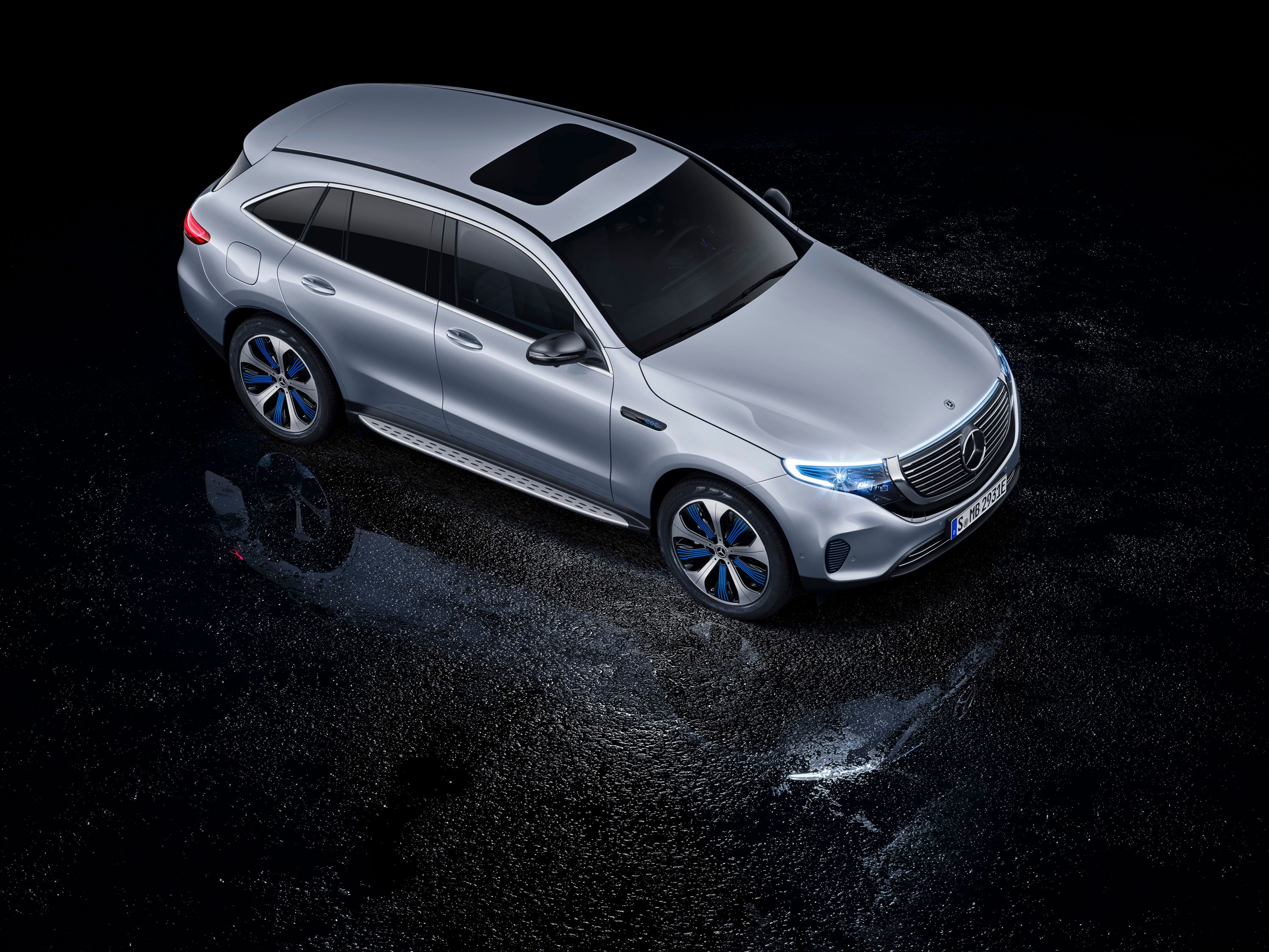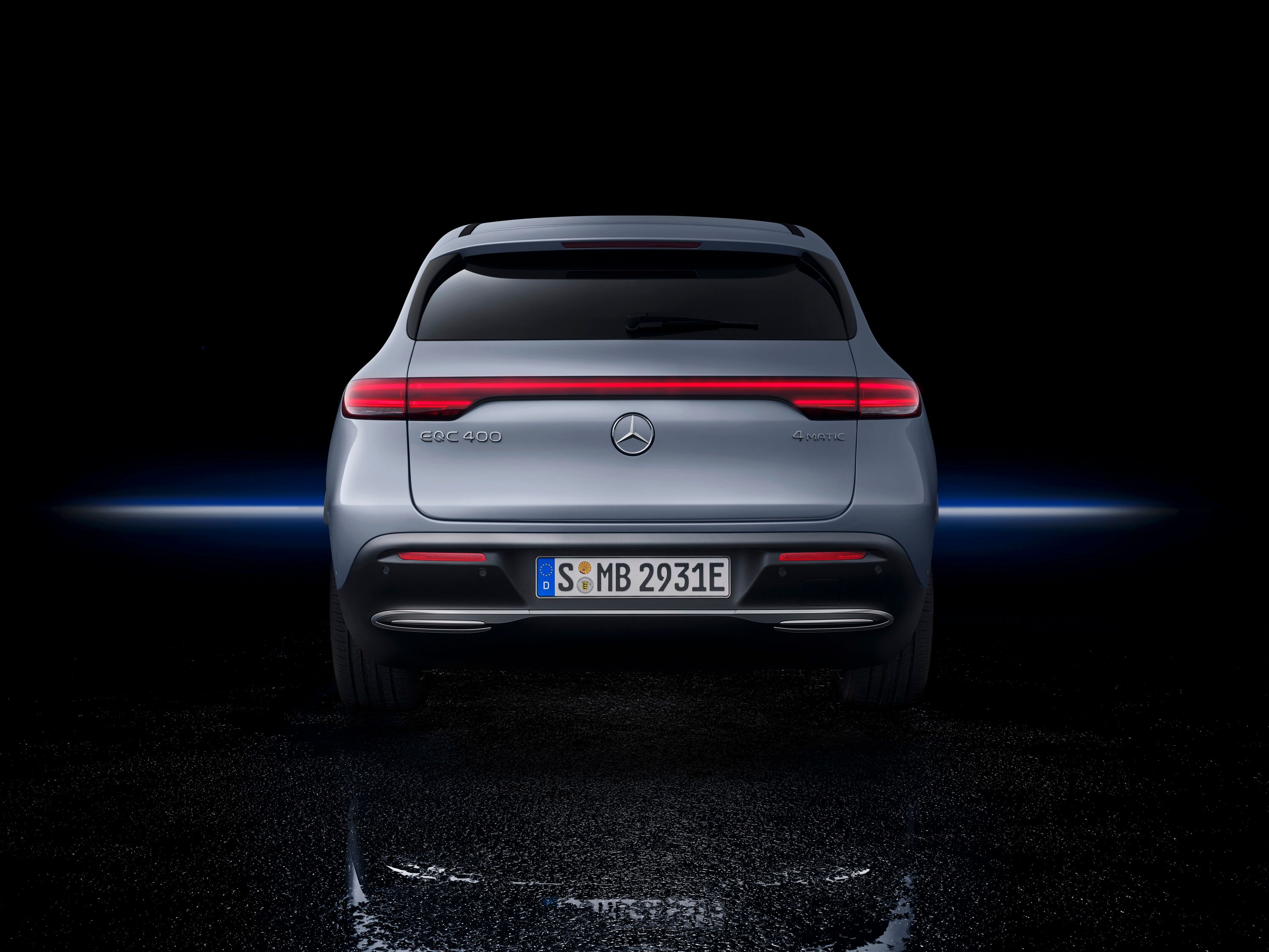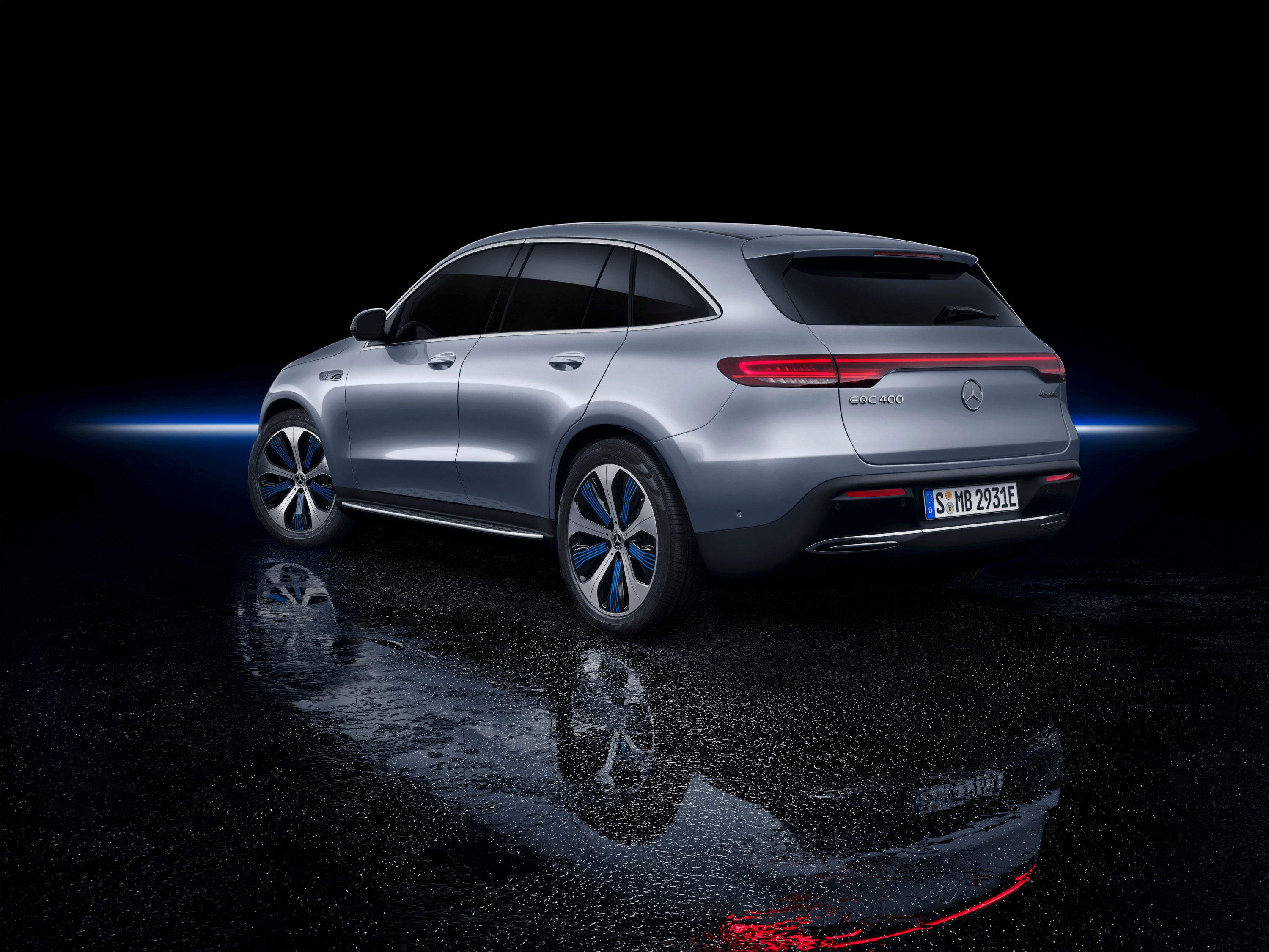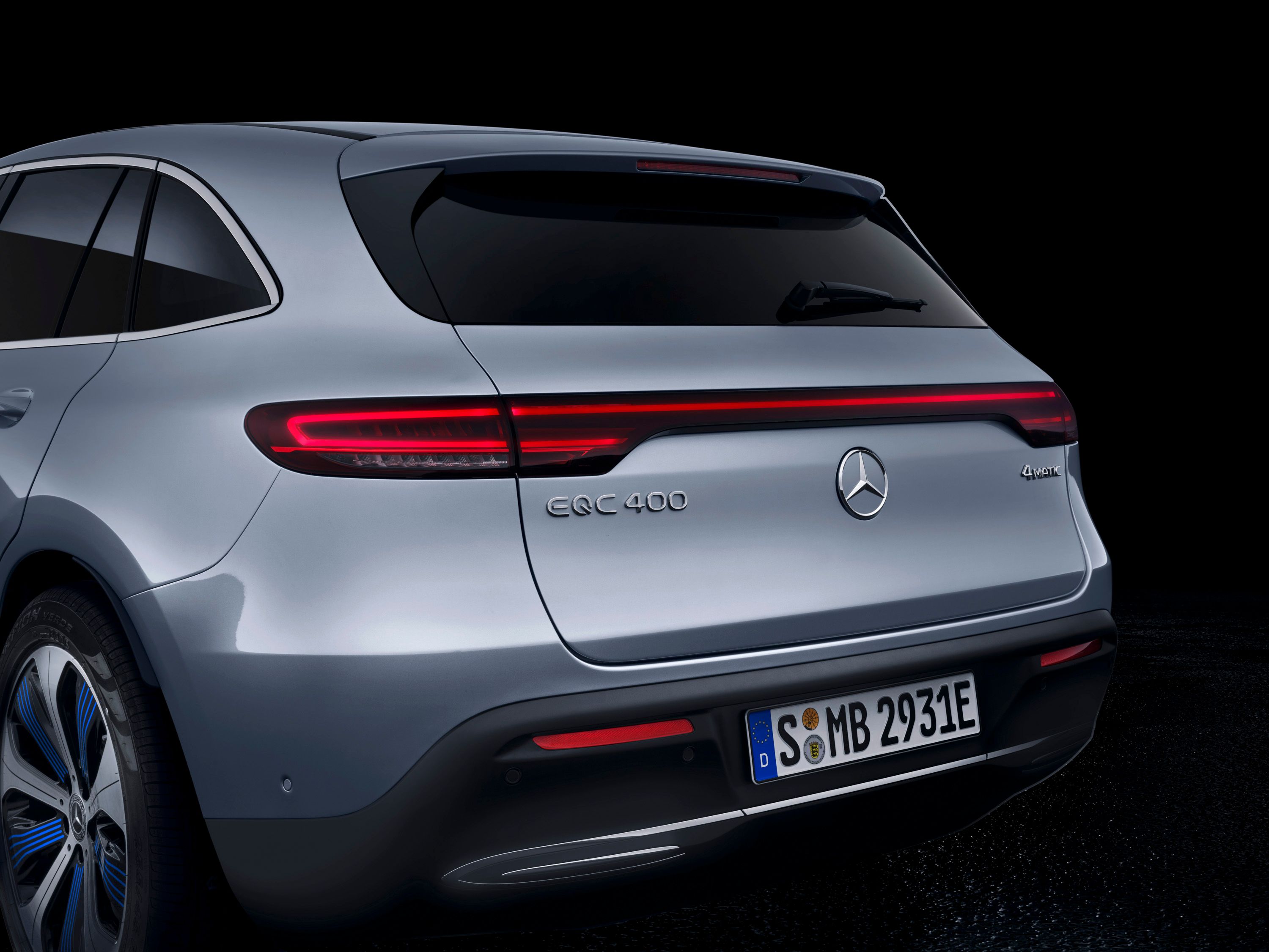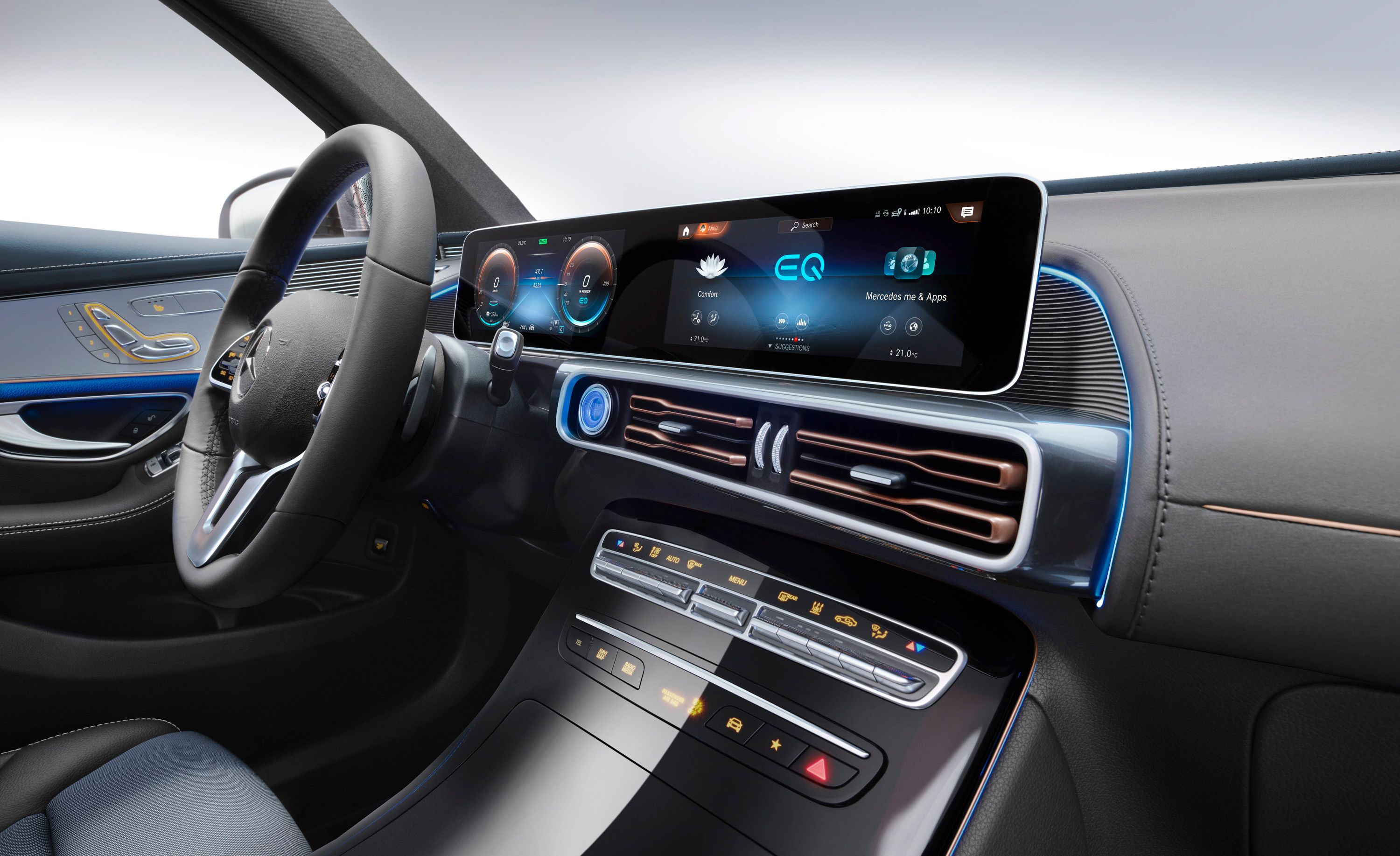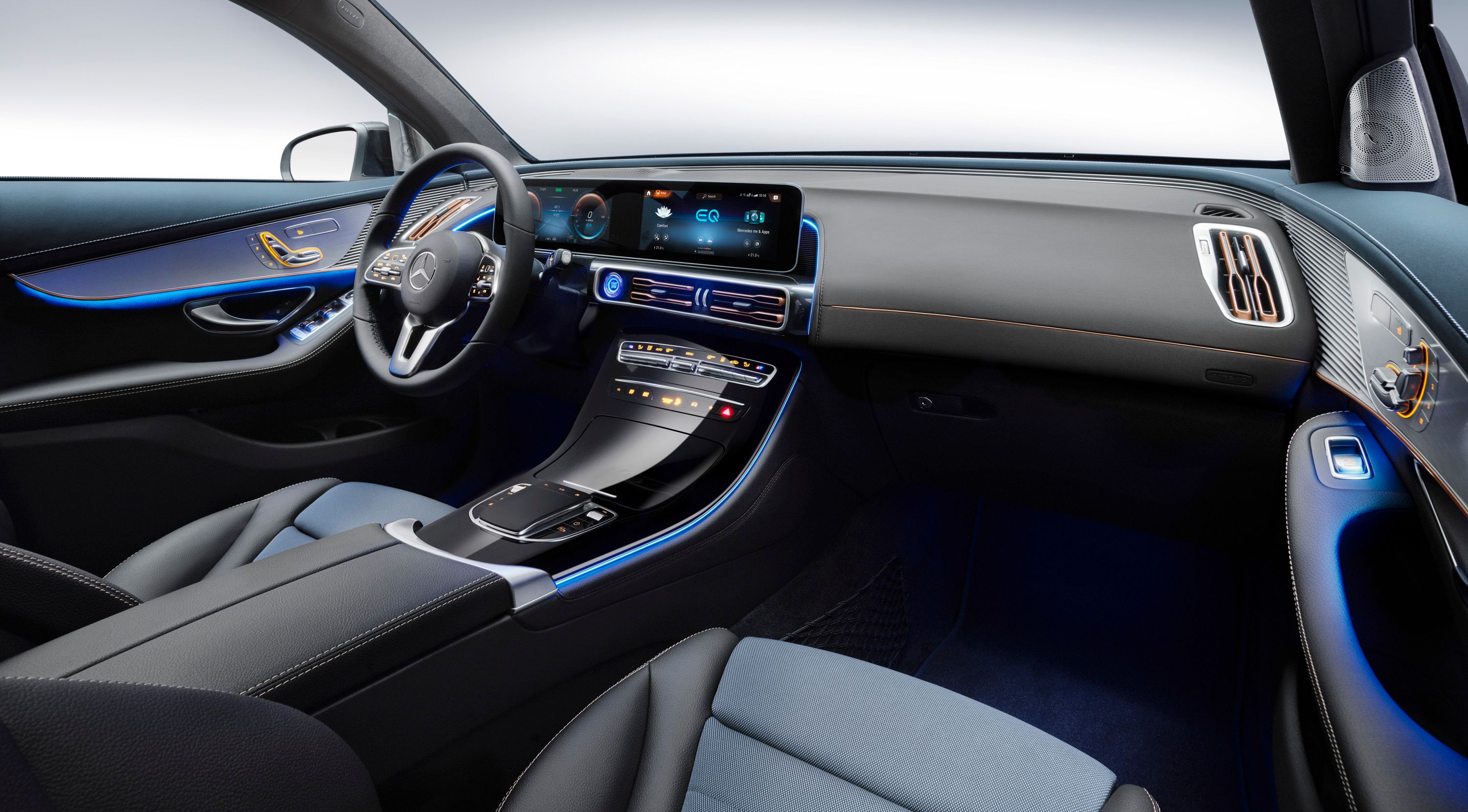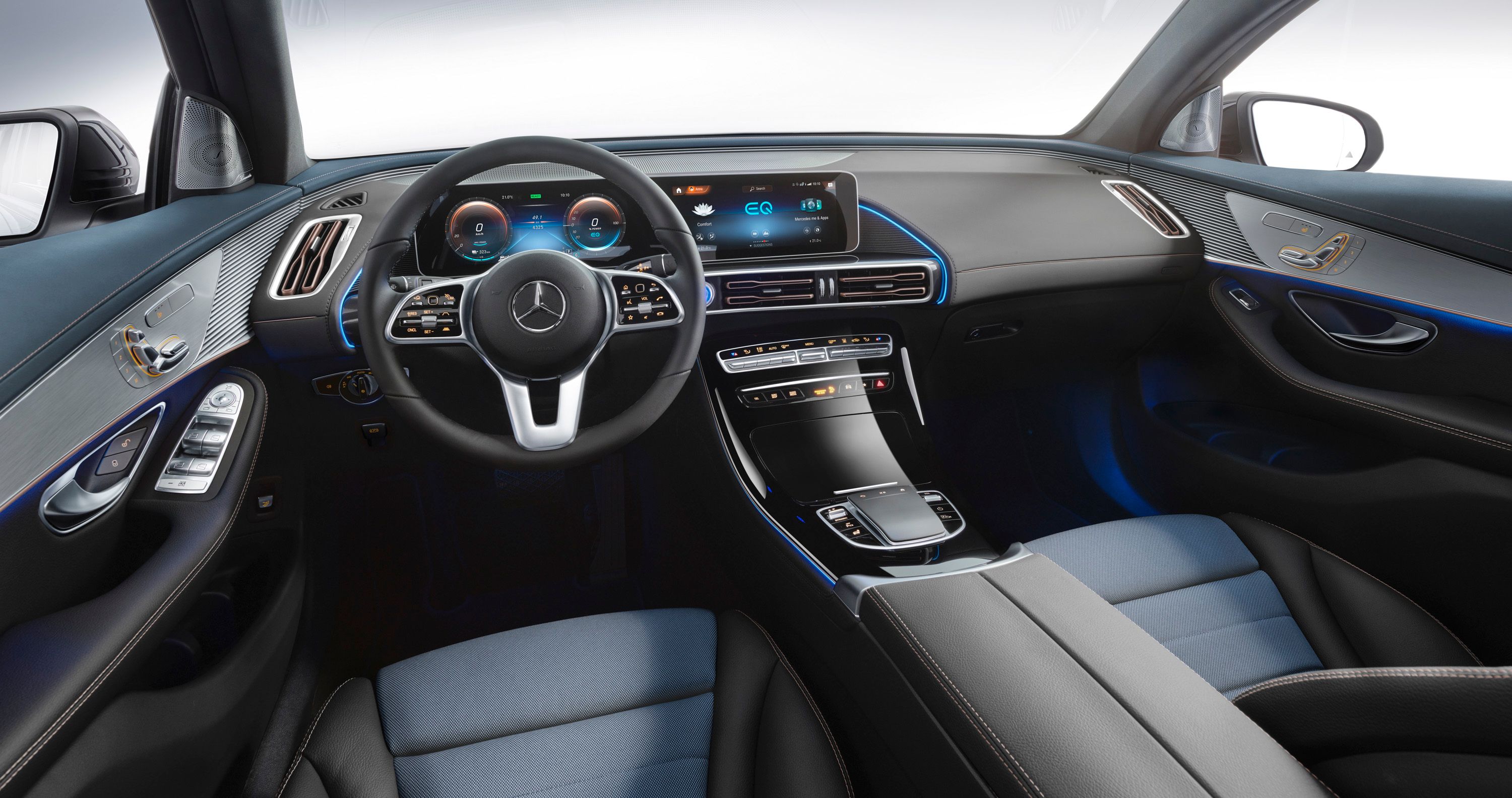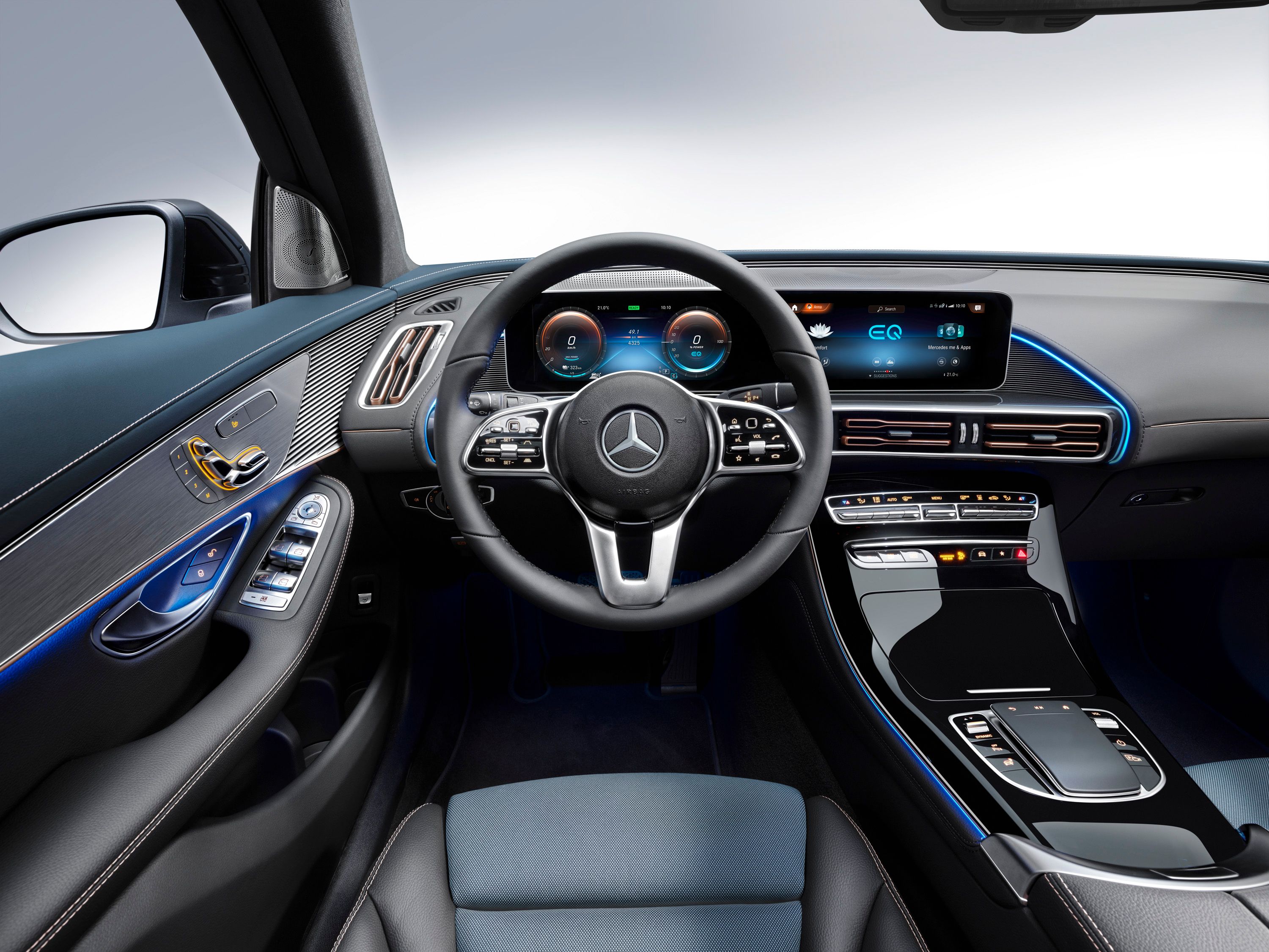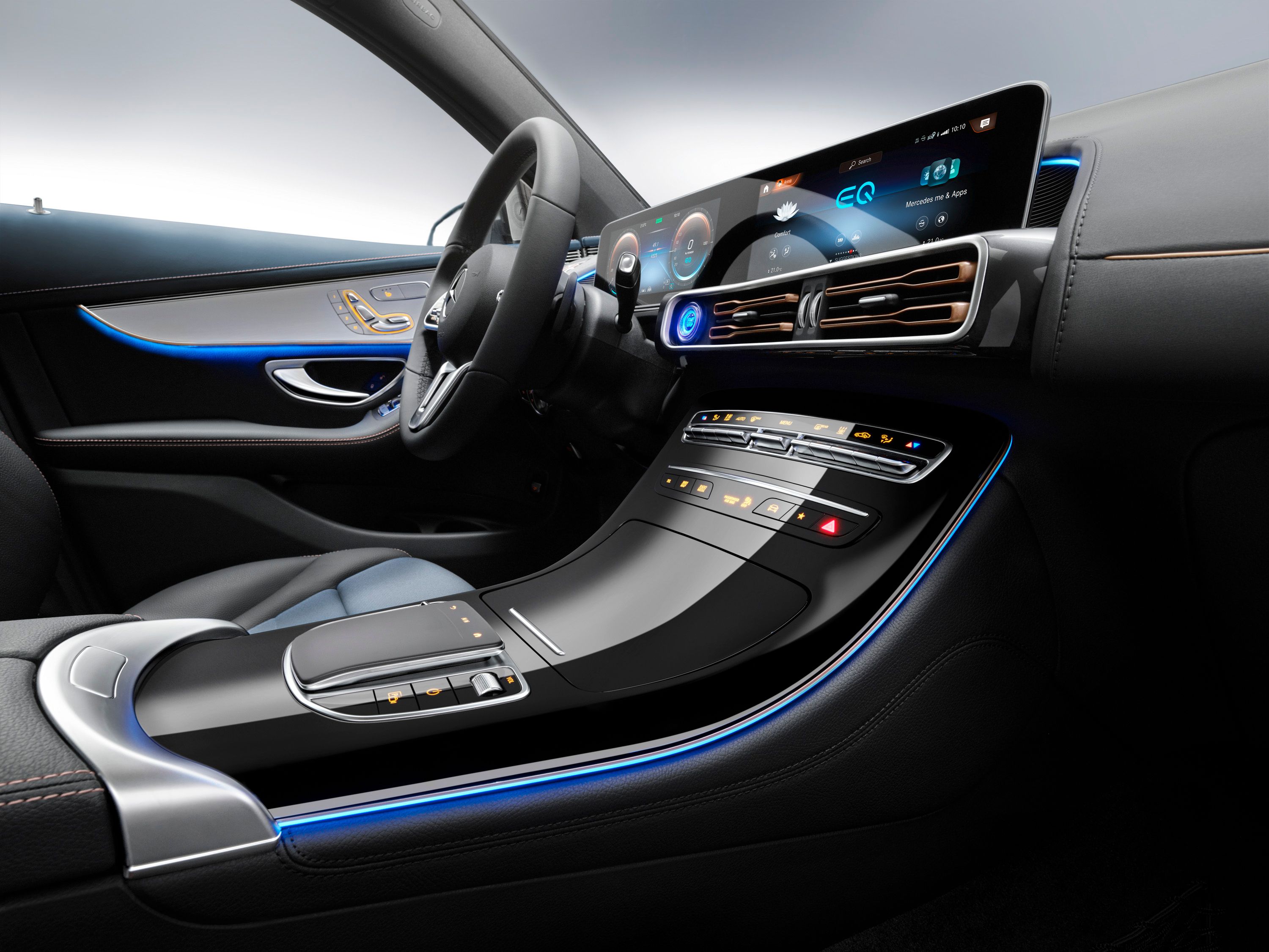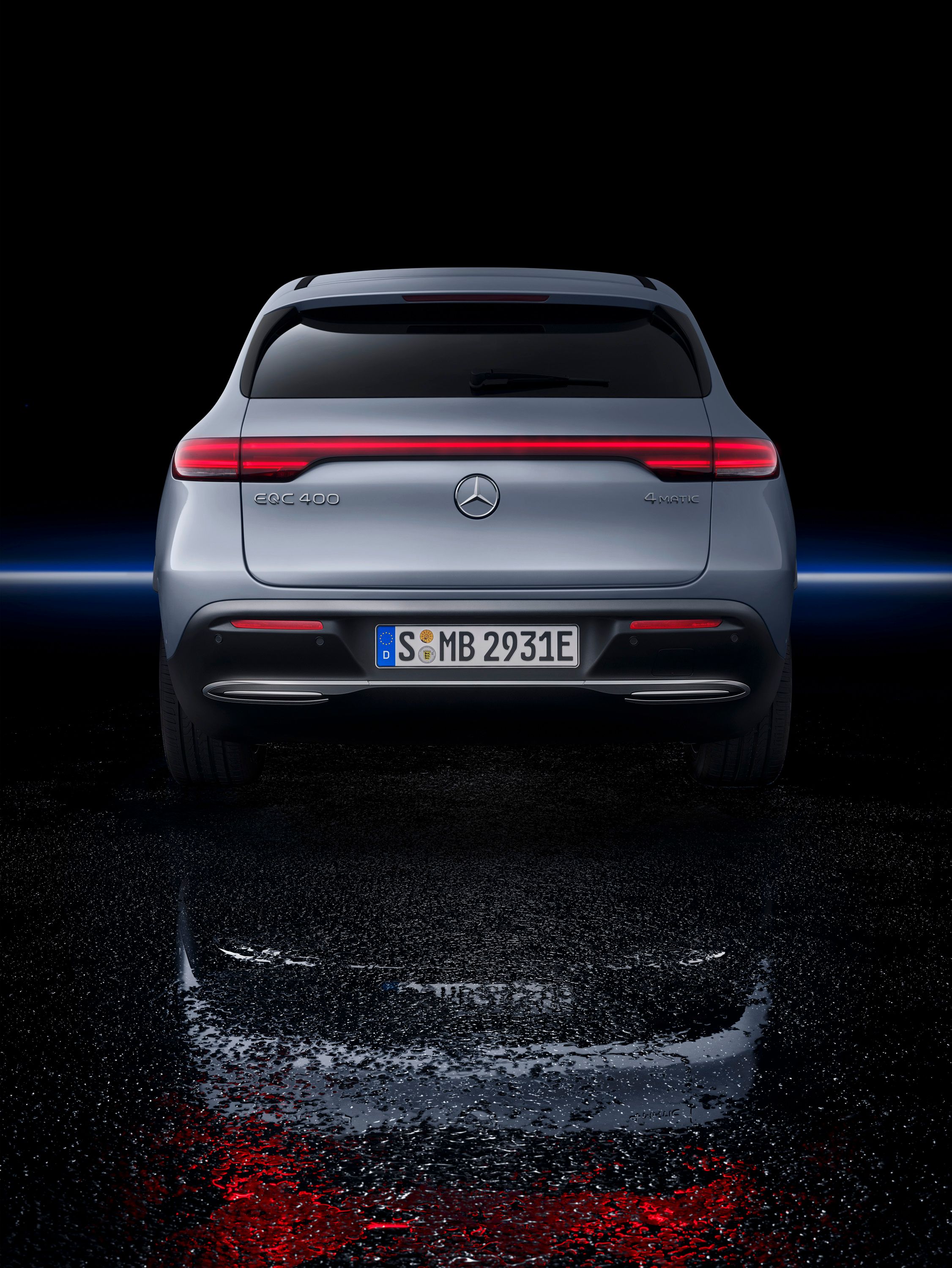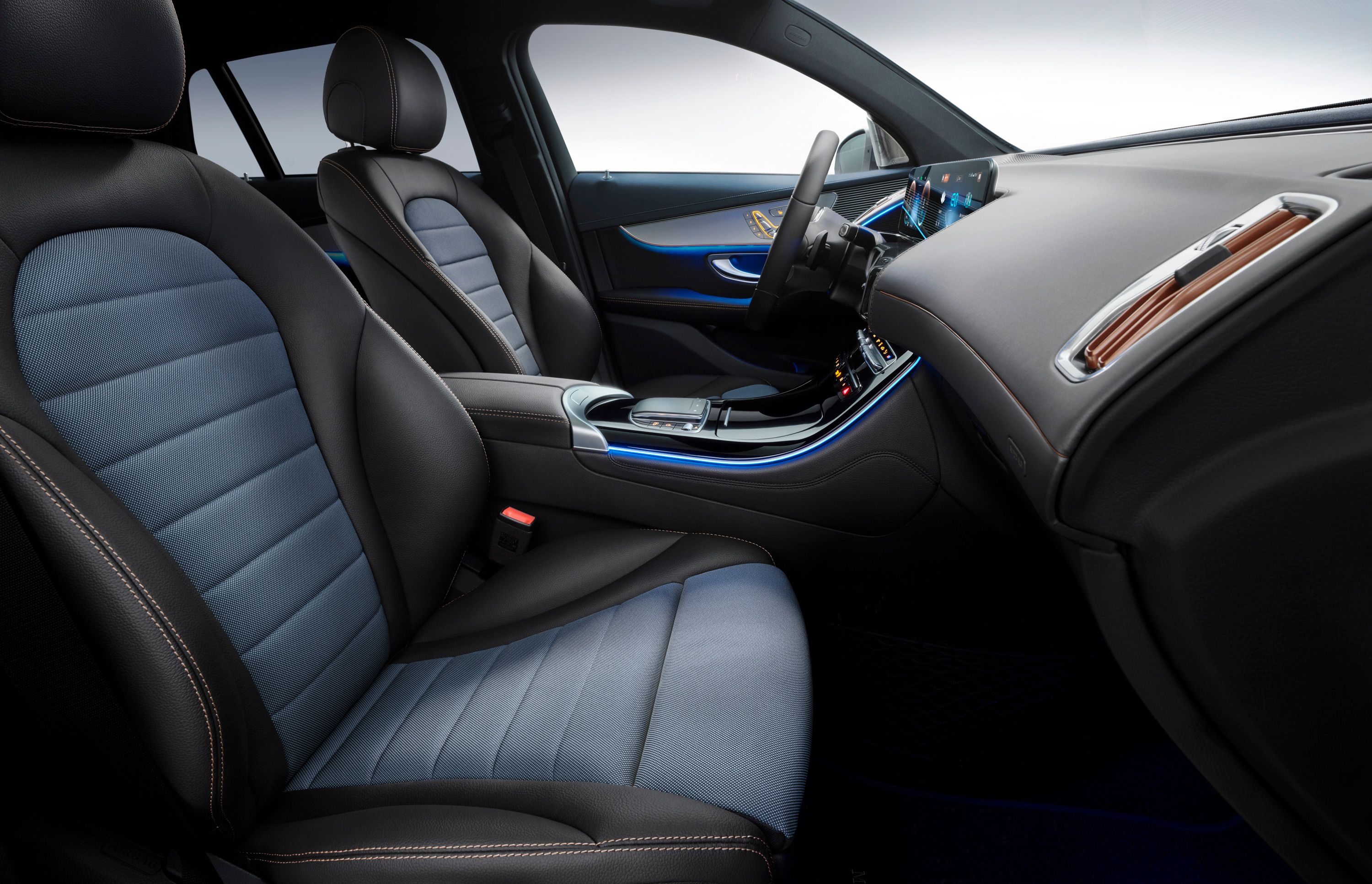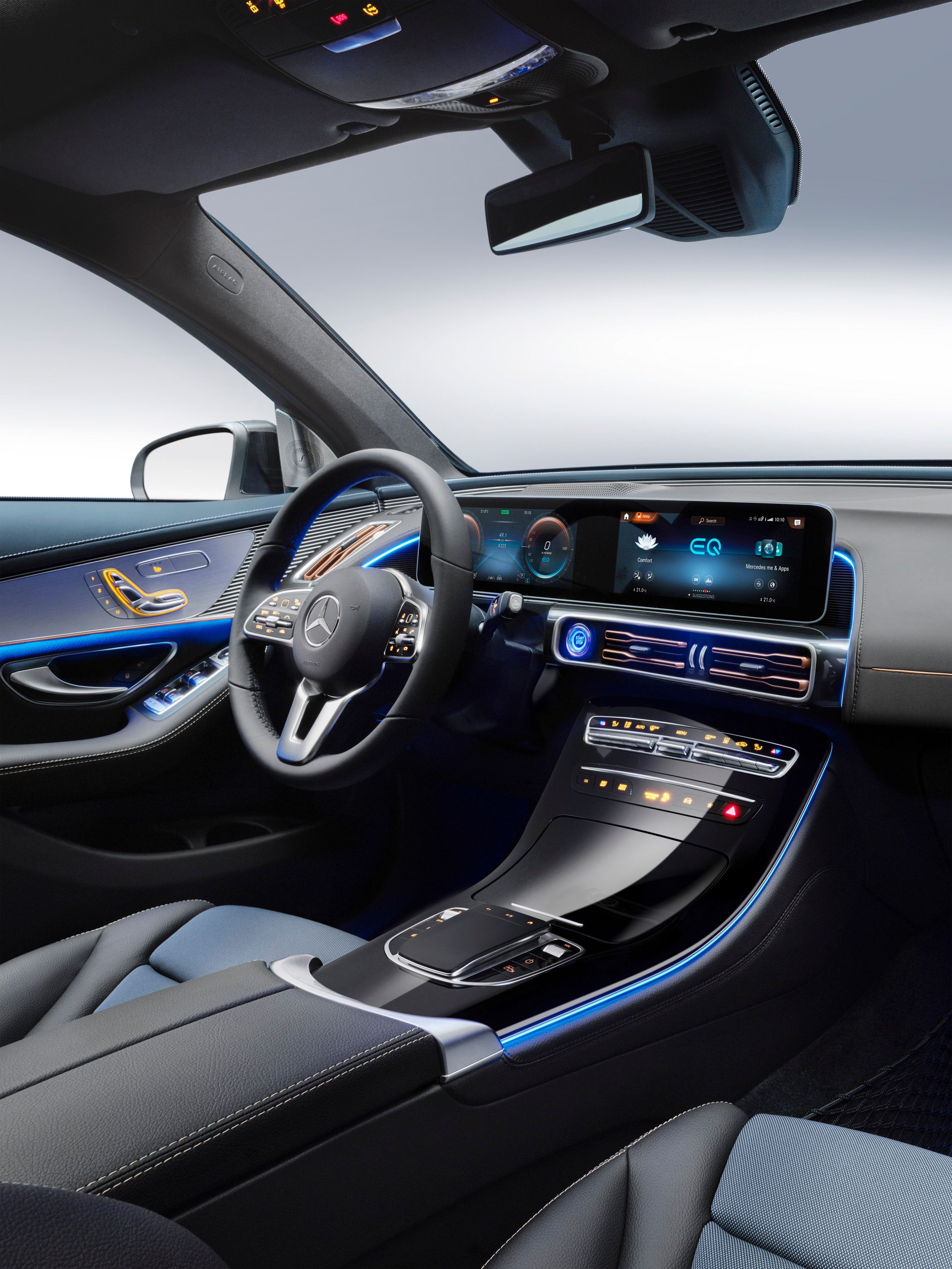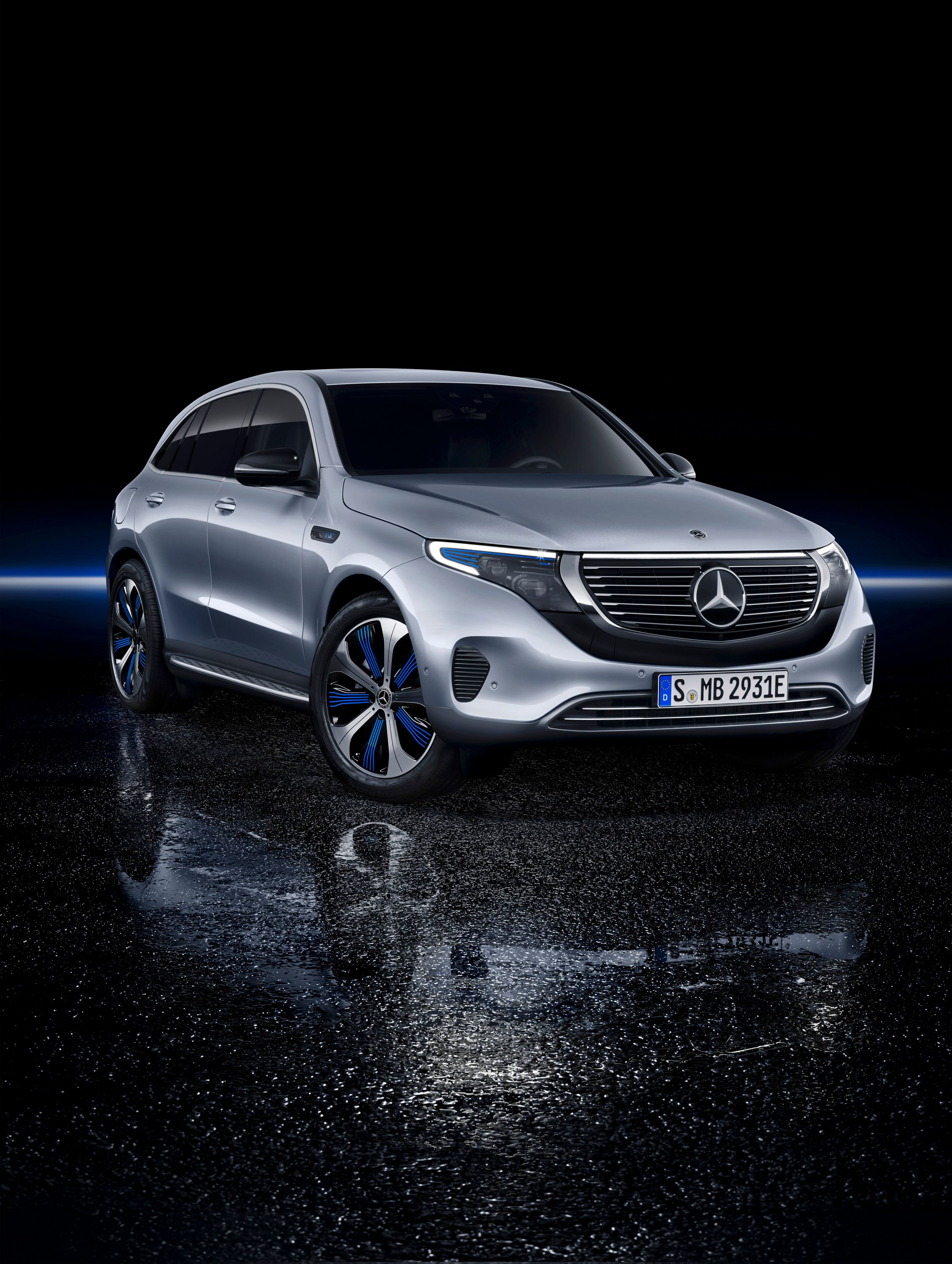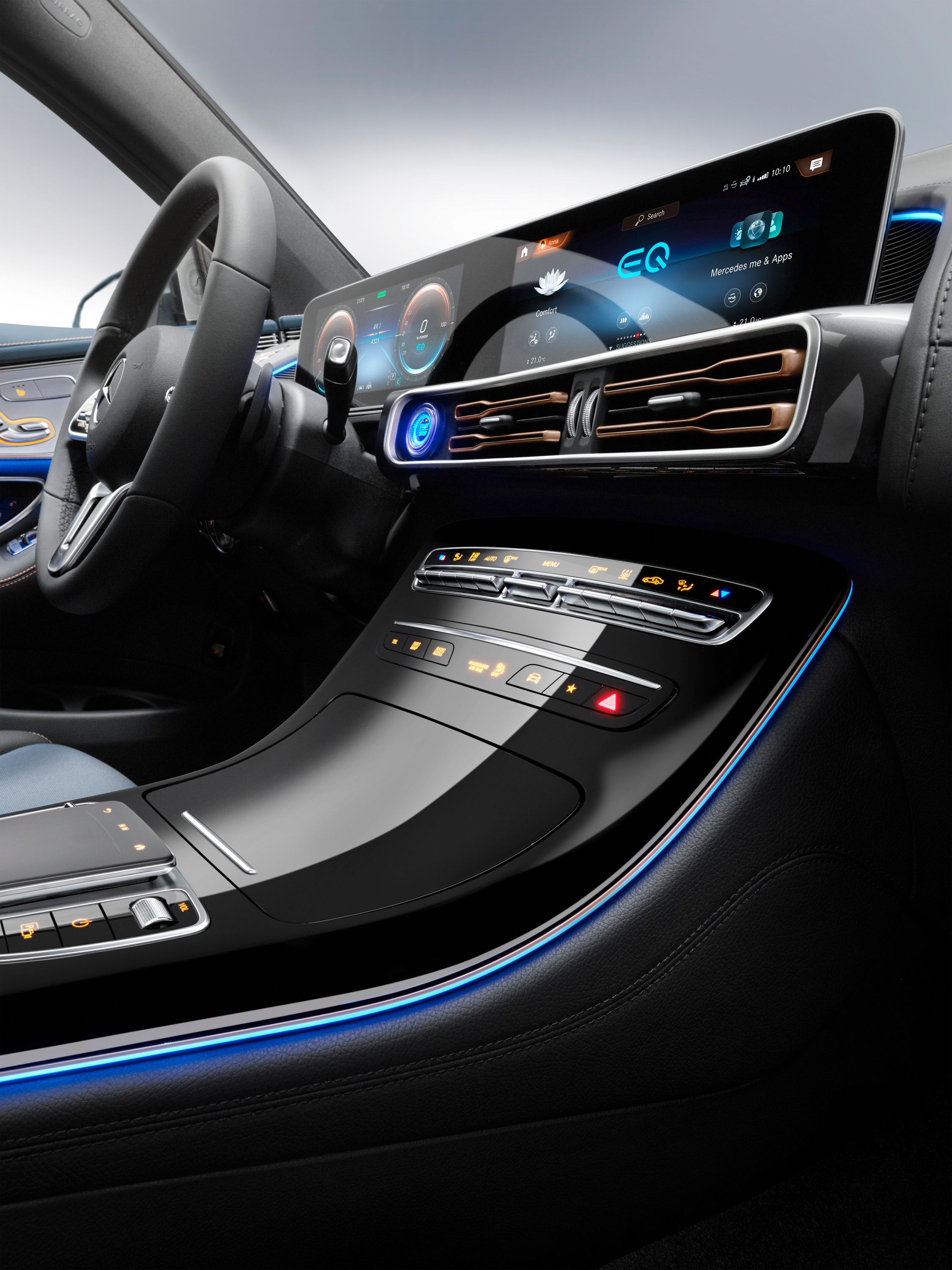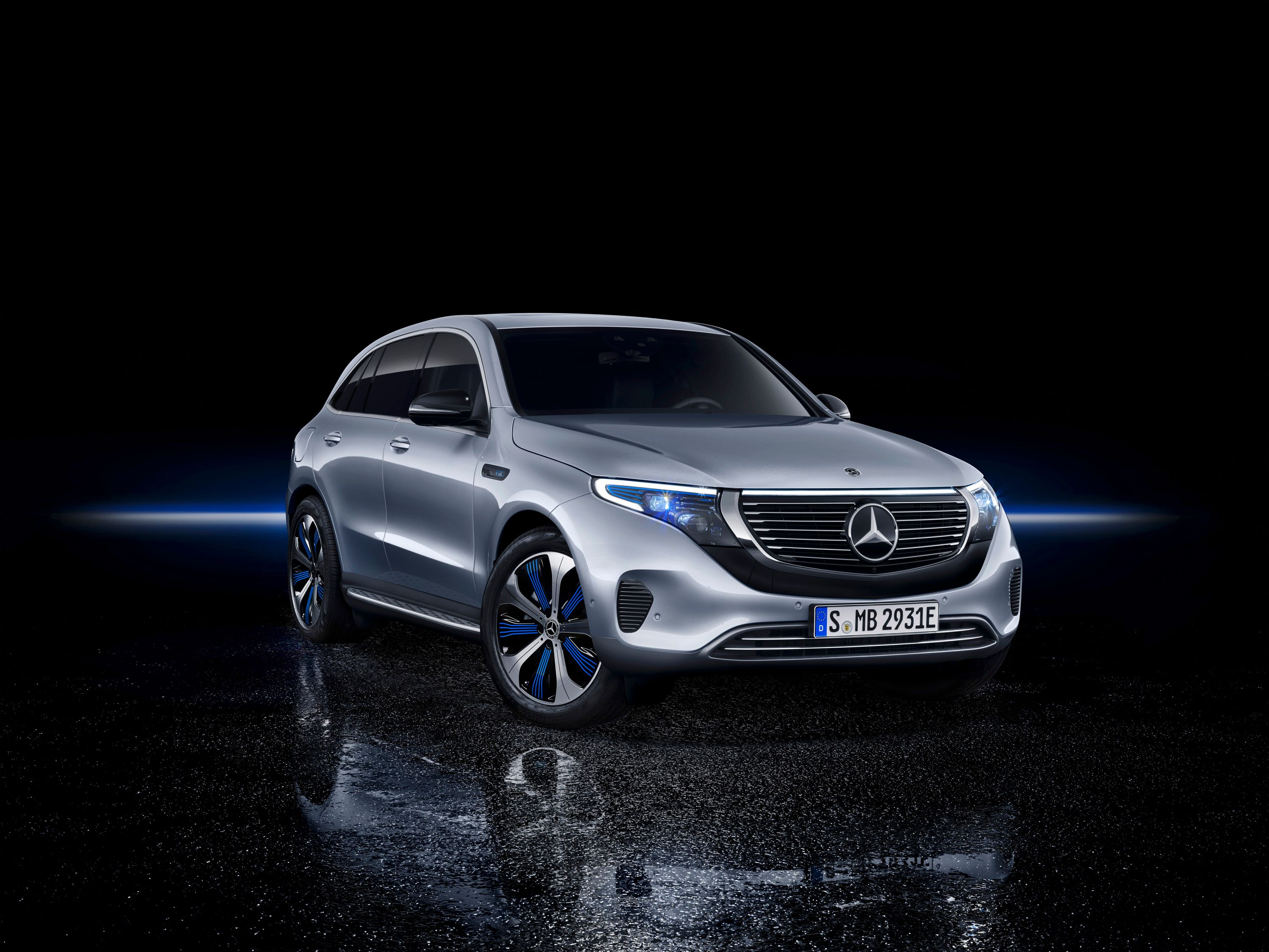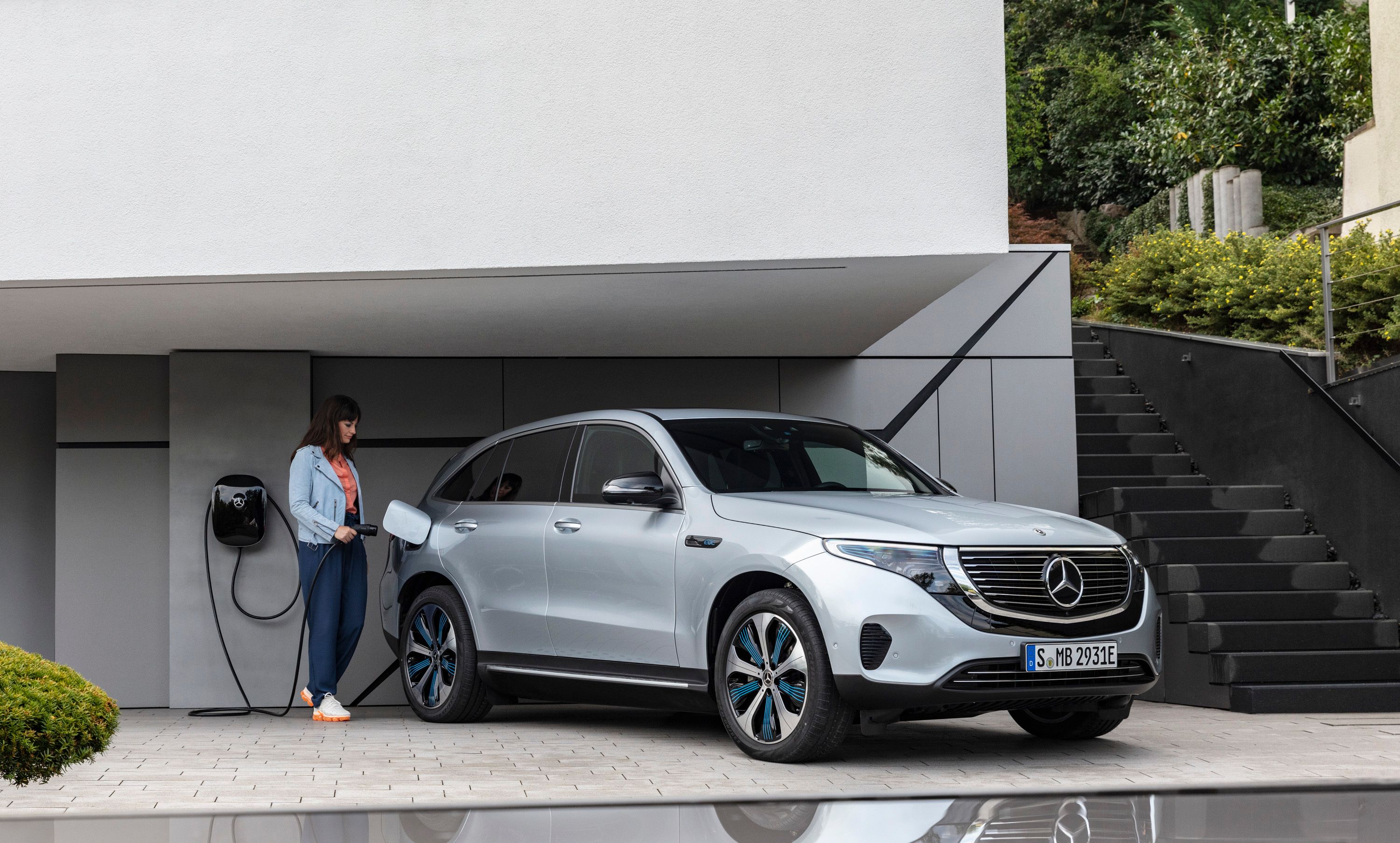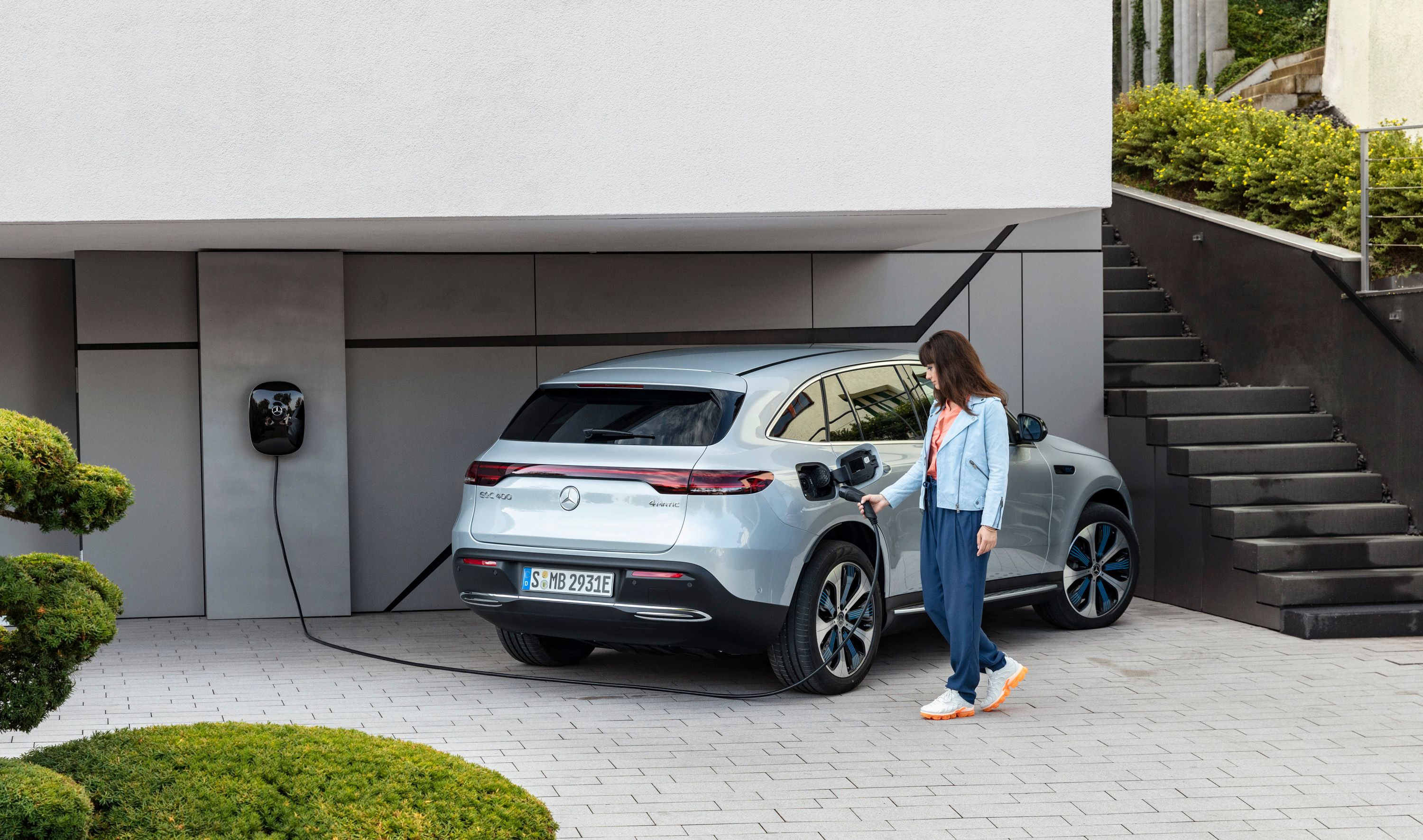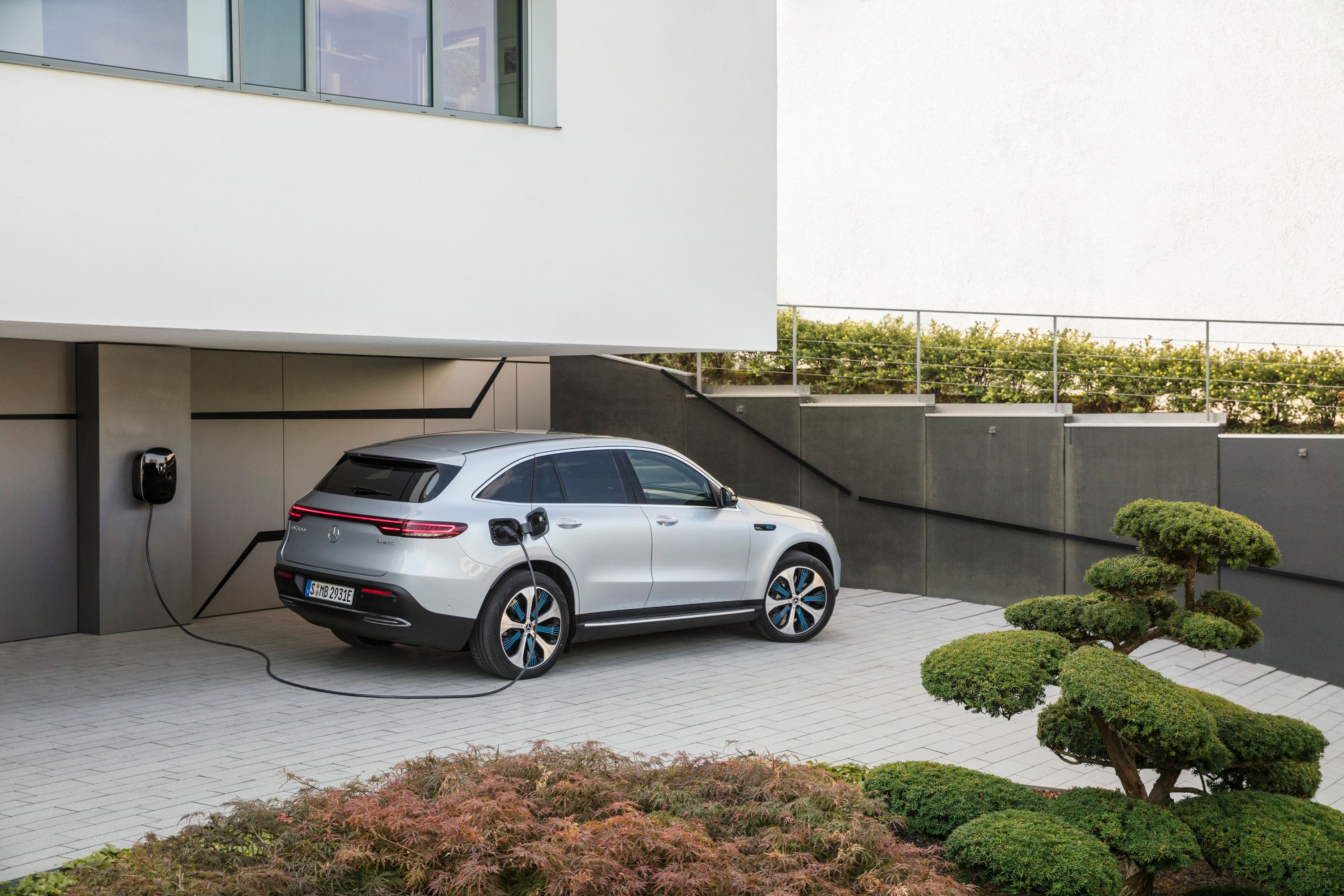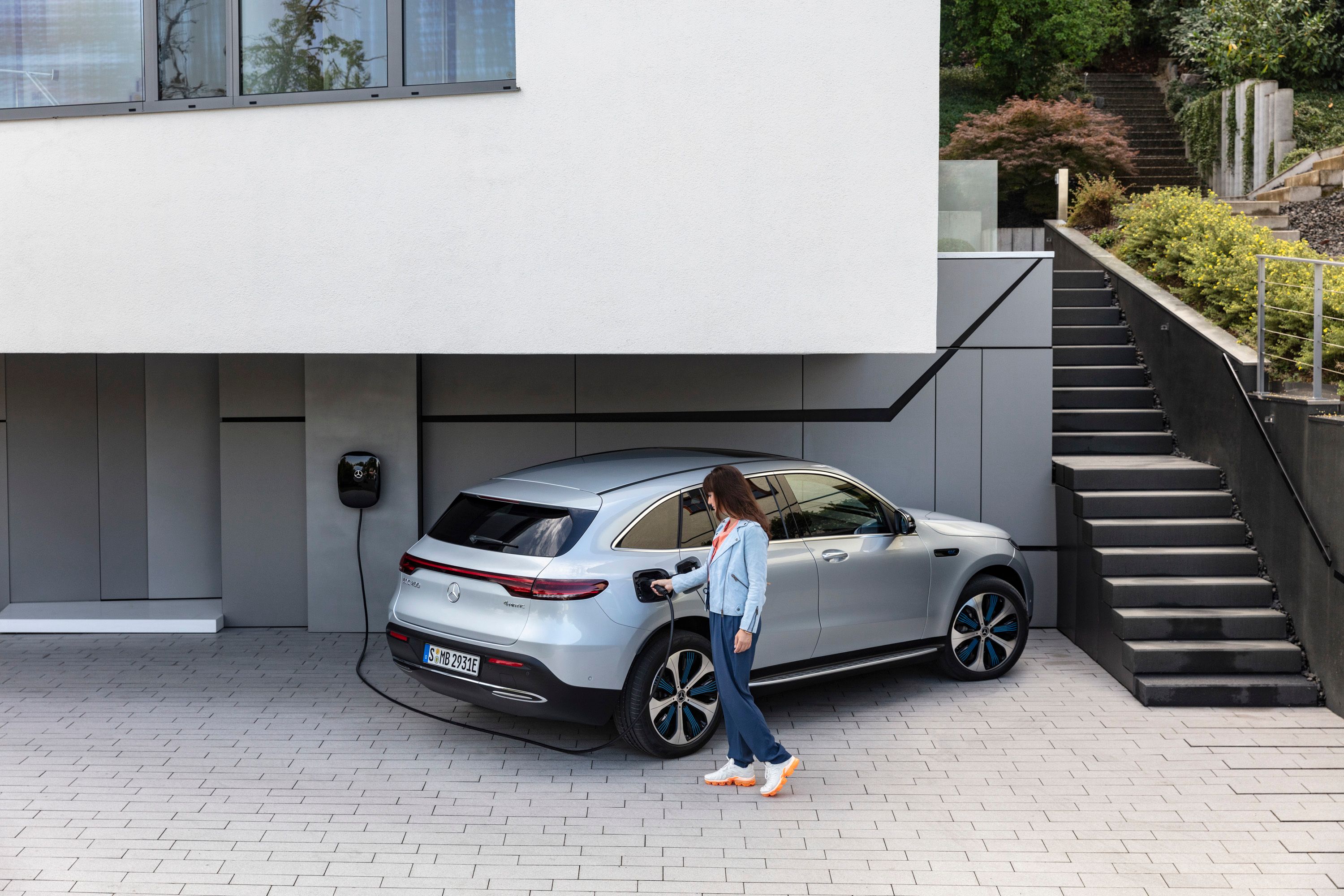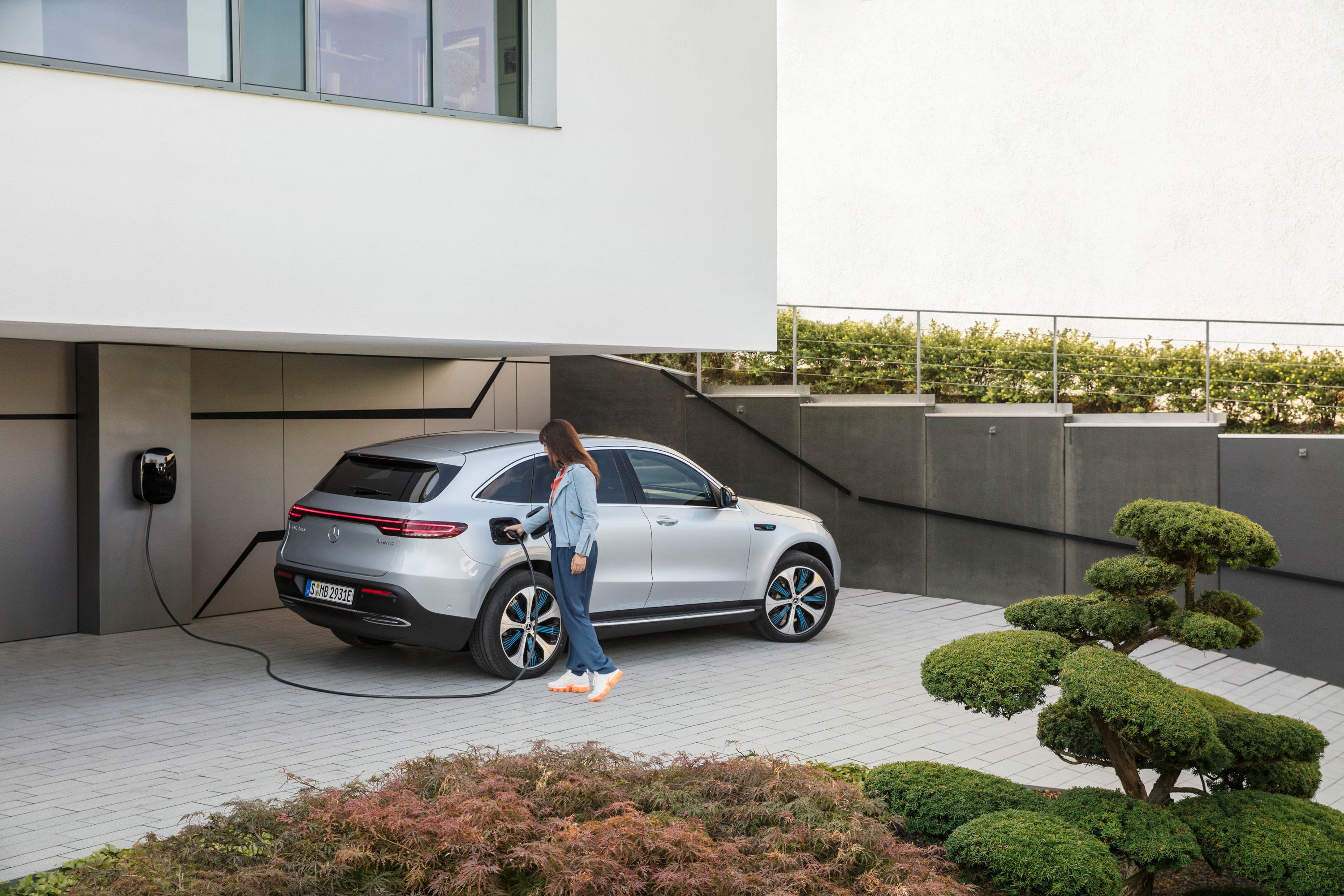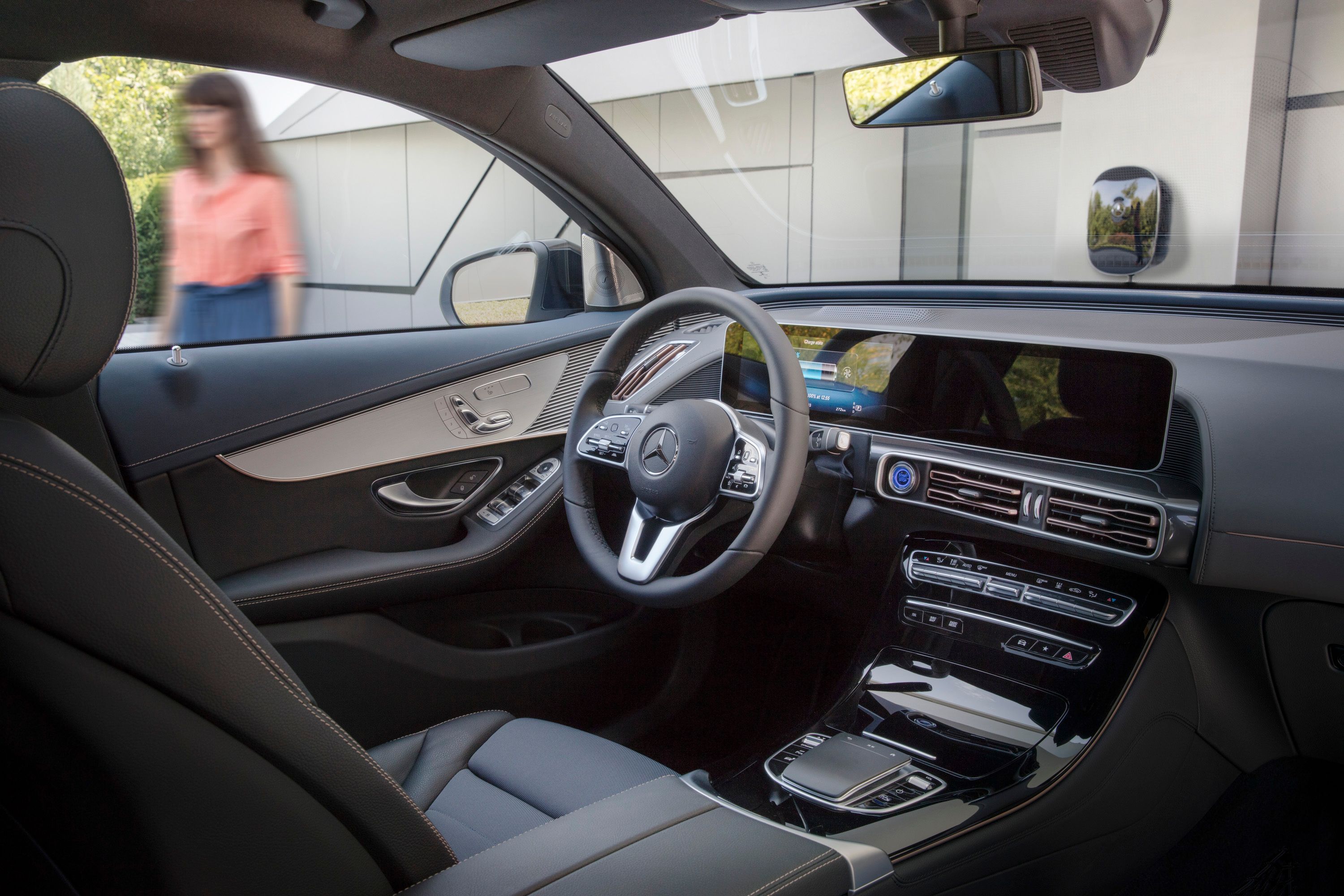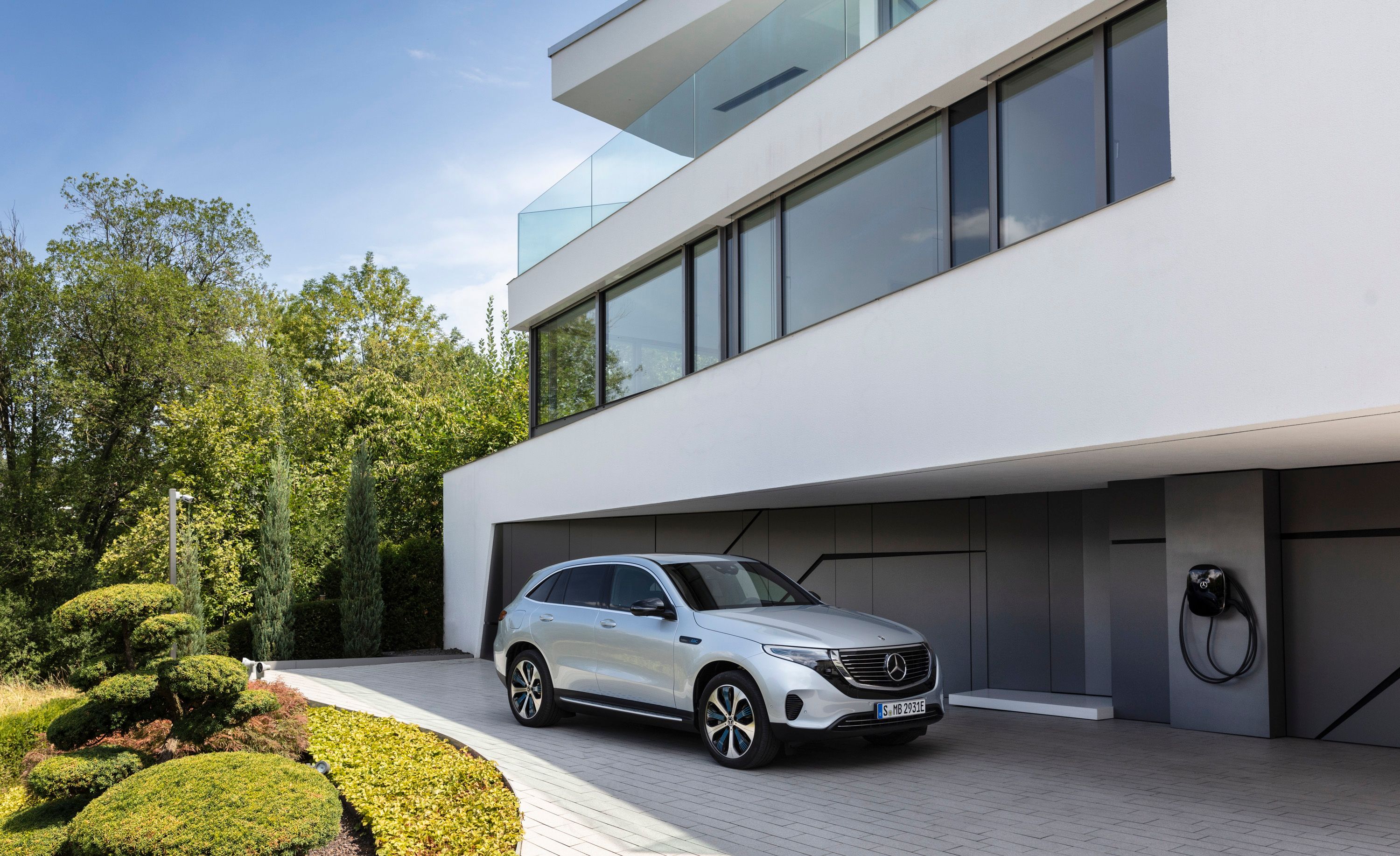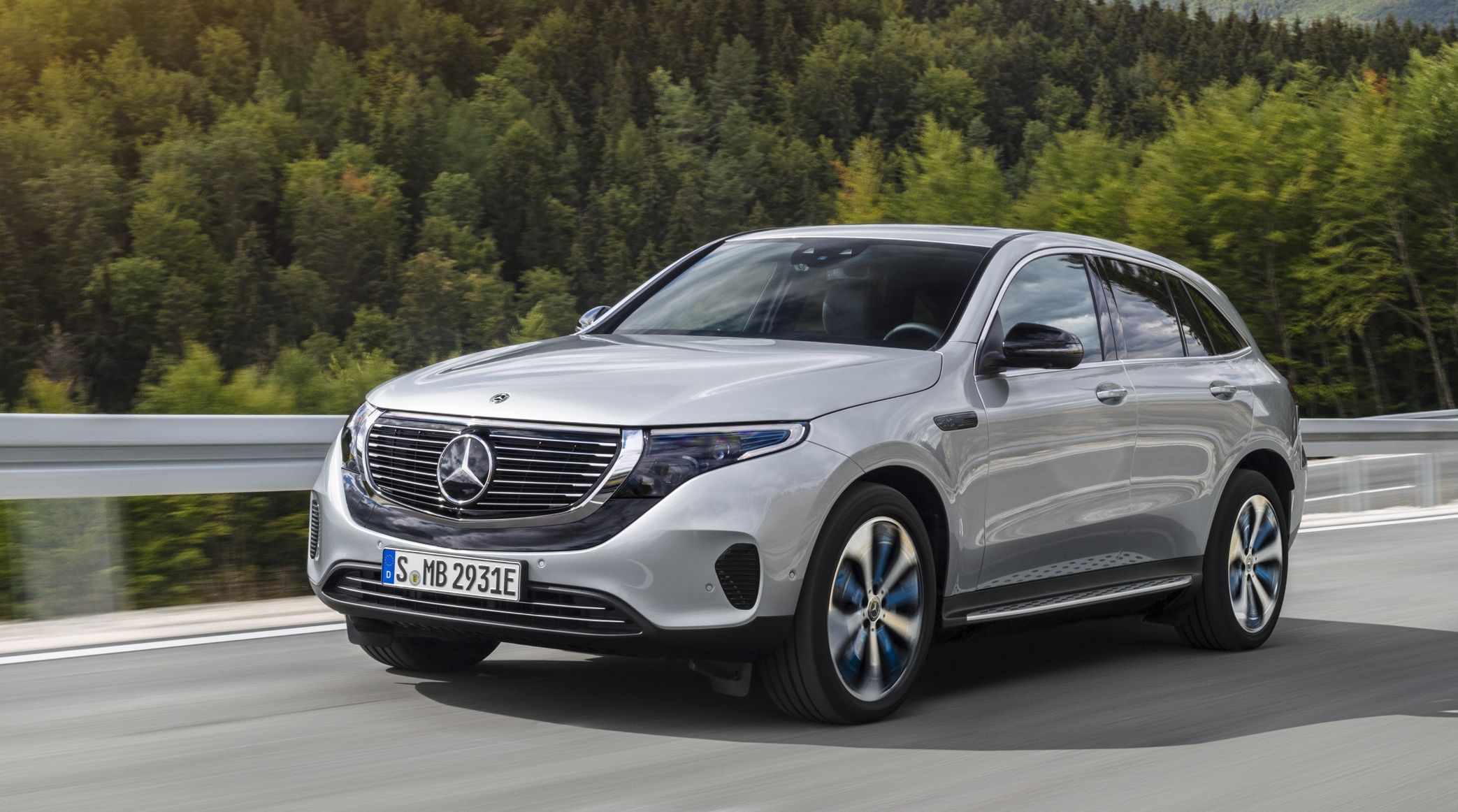The Mercedes-Benz EQC is the company's first all-electric crossover. Previewed by a concept car shown at the 2016 Paris Motor Show, the EQC made its debut two years later. Aimed at competitor like the Jaguar I-Pace, Tesla Model X, and the upcoming BMW iX3, the EQC is also Mercedes' first car under the EQ brand.
Unveiled in Stockholm, Sweden on September 4, the EQC will make its auto show debut in Paris in early October. Under development for many years, the EQC is the result of Mercedes' commitment to launch a full lineup of all-electric vehicles under the EQ brand, which stands for "electric intelligence." Although similar in size to the GLC, the EQC rides on a brand-new platform and sports a design of its own. It also debuts the company's new-generation battery and electric motor assembly. Let's find out more about it in the review below.
Update 3/11/2019: We stumbled across the Mercedes EQC at the 2019 Geneva Motor Show so we decided to take some fresh pictures. Check out all of our fresh images in the gallery at the bottom of this page!
2019 Mercedes-Benz EQC
- Make: Array
- Model: 2019 Mercedes-Benz EQC
- Horsepower: 402
- Torque: 564
- [do not use] Vehicle Model: Array
<
2019 Mercedes EQC Exterior
But while they're similar as far as dimensions go, the EQC looks decidedly more modern. The electric SUV is actually a bit futuristic and sports a unique front fascia. While it has a familiar design, the massive grille looks different compared to other Merc, particularly because it has no less than seven horizontal slats on each side of the star emblem. The chrome trim around it is also thicker than usual.
The EQC's rear end isn't as spectacular as the front fascia, but the very thin taillights make the vehicle stand out. Thinner than usual, the two-piece light units include a slimmer light bar that stretches across the width of the tailgate. It obviously reminds me of the Porsche Panamera. The bumper has a spartan design and integrates two reflectors and the license plate recess. Instead of exhaust pipes, which aren't needed on an electric vehicle, the lower bumper features chrome trim that mimics the shape of oval tailpipes at the corners.
2019 Mercedes EQC Interior
Mercedes says that the EQC's interior is inspired by the world of consumer electronics and that it "pioneers an avant-garde electro-look." This is, of course, the kind of PR talk you expect from a big automaker, but I won't deny that the cabin boasts many unique features compared to other Mercs. While the instrument cluster and infotainment display has the familiar layout with two 10.25-inch displays housed behind a shared, continuous screen, the dashboard has little in common with GLC or other production models.
The touchpad in the center console was also redesigned. It's bigger, flatter, and flanked by new controls on the sides. Everything is illuminated by the 64-color ambient system, but this feature is optional.
SUVs under the EQ brand are supposed to be as luxurious as regular Mercs, and the EQC proves just that.
Just like any Merc out there, the EQC is also available with the sporty AMG Line package. The bundle adds a three-spoke AMG multifunction steering wheel with flattened lower section, AMG sport pedal cluster in brushed stainless steel, leather seats, AMG floor mats, and carbon-fiber looking trim.
On the tech front, the EQC features the company's recently introduced MBUX infotainment system. The software was revised specifically for this model and now includes numerous EQ-specific functions. It displays the range, charge status, and energy flow and enables the driver to set up the EQ-optimized navigation system, driving modes, and charging current. The MBUX touchscreen display also has a special EQ menu where numerous EV-related features are grouped.
Mercedes claims that the EQC has the quietest cabin of all EVs out there thanks to enhanced noise-deadening measures. These include rubber mounts where the motors connect to the subframe and where the subframe connects to the body, which further reduce the amount of drivetrain noise that enters the cabin.
Other comfort-enhancing features include Pre-Entry climate control, which enables the driver to set the temperature before entering the car via the MBUX system or the Mercedes ME Connect app.
Unfortunately, Mercedes has yet to release information on rear legroom and shoulder room or trunk capacity. We will update this section as soon as the Germans spill the beans.
2019 Mercedes EQC Drivetrain and Performance
Mercedes-Benz designed an all-new drive system for the EQC.
The motors draw juice from Mercedes' latest-generation lithium-ion battery consisting of 384 cells. A modular design, the battery groups together two modules with 48 cells each and four clusters with 72 cells each. The battery is located in the floor, between the two axles, a design that helps save room inside the cabin.
The vehicle starts in Comfort as a default setting. In this mode, the accelerator pedal supports a comfortable driving style that can become a bit more dynamic when needed. As the name suggests, the Eco mode is focused on higher efficiency. However, it's Max Range that helps the driver achieve the maximum possible range. No modern EV is complete without a Sport mode, and the EQC is no exception. When used in this setup, you benefit from the best acceleration response and a more dynamic behavior of the drivetrain. Finally, Individual allows you to customize each individual setting separately for a bespoke experience.
The EQC also features an Eco Assist system that notifies you when it's appropriate to lift off the accelerator pedal. This happens when the vehicle is approaching a change in speed limit or an area where coasting can be enabled to save battery. The system works in conjunction with data from navigation, traffic sign recognition, and info from the intelligent safety assistants.
But what about performance? Figures are still preliminary according to Mercedes, but the EQC should hit 60 mph in 4.9 seconds. While it might not be as quick as the range-topping Tesla Model X, it's pretty quick for a crossover. Top speed is limited to 112 mph, a common figure for an electric car.
Still, range anxiety is an issue on the EV market, and Mercedes needs to act quickly to eliminate this problem. Hopefully, the Germans will roll out some sort of update soon as "around 200 miles" is a bit disappointing for a premium EV.
Charging duties are handled by a water-cooled onboard charger with a capacity of 7.4 kW. The charger is suitable for fast AC charging at home or at public charging stations. Charging at a home wall box is up to three times faster than at a domestic power socket. Final specs aren't yet available, but Mercedes says that "the battery can be charged from 10 to 80 percent in around 40 minutes. Not bad. For reference, the Tesla Supercharger charges the company's cars with enough energy for 170 miles in about 30 minutes, while a full battery charge takes around 75 minutes.
2019 Mercedes EQC Drivetrain Specifications
|
Estimated Range |
Up to 200 miles |
|
Drive system |
2 asynchronous motors, all-wheel drive |
|
Rated output |
402 hp |
|
Peak torque |
564 lb-ft |
|
Top speed (mph) |
112 mph (electronically limited) |
|
Acceleration 0-60 mph |
4.9 s (est.) |
|
Battery |
Lithium-ion |
|
Battery capacity |
80 kWh |
|
Length / width (width with mirrors) / height |
187.4 / 74.2 (82.5) / 63.9 in |
|
Track width (F/R) |
64.0/63.6 in |
|
Wheelbase |
113.1 in |
Mercedes-Benz EQC Safety
Like any Merc out there, the EQC is equipped with the company's latest active and passive features. Mercedes vehicles are known to be among the safest and the EQC is definitely not an exception from this rule.
When it comes to passive safety, the vehicle's structure has been adapted to suit the requirements of the electrical components and battery and includes a new subframe that surrounds the drive components located in the front section. The EQC also offers mechanical protection for the battery. The energy storage unit is surrounded by a stable frame that can absorb energy and deformation elements are installed between the frame and the battery. A guard placed in the front area of the battery prevents the power source from being pierced by road debris. What's more, the high-voltage system automatically shuts down in the event of a crash.
2019 Mercedes EQC Pricing
Electric cars aren't as affordable as we'd want them to be right now and the fact that the EQC will compete in the premium segment means more bad news for the wallet. It's difficult to predict how much it will cost in comparison to the regular GLC, but I wouldn't expect Mercedes to ask less than $55,000 for the base model, while the range-topping version could fetch at least $75,000.
2019 Mercedes EQC Competition
BMW iX3
2}As usual, where there's a Mercedes-Benz on offer, there must be a competitor from BMW. Okay, it might not be available in all segments, but BMW is indeed working on a similar vehicle. It's called the iX3, it was previewed by a concept car, and it shares many design features with the current X3 crossover. We know this because unlike Mercedes' concept, the iX3 show car is pretty much a production X3 with mild revisions. The powertrains is a new-generation version of BMW's eDrive combo, which groups the electric motor, the transmission, and the power electronics within a separate component. The 70-kWh battery enables the electric motor to deliver more than 270 horsepower, but much like Mercedes-Benz, BMW could offer various outputs in the iX3. Range is estimated at around 249 miles. The entry-level model will probably cost more than $50,000. The iX3 could be unveiled in early 2019.
Learn more about the upcoming 2020 BMW iX3 from our speculative review.
Jaguar I-Pace
2}Surprisingly enough for an automaker that joined the SUV market in 2016, Jaguar has already launched an all-electric crossover. It's called the I-Pace, and it's based on the gasoline-powered E-Pace, but it's almost as big as the F-Pace. It looks sportier though and stands out in the lineup thanks to a wide range of unique features. The I-Pace draws its juice from a big, 90-kWh battery that powers two electric motors rated 394 horsepower and 513 pound-feet of torque combined. Impressive! The British crossover needs only 4.5 seconds to hit 60 mph from a standing start, while mileage is estimated at 240 miles in the U.S. and up to 298 miles in the U.K. Charging the batteries to 80-percent capacity takes only 85 minutes. Pricing for the I-Pace starts from $69,500, which makes it the most expensive of the bunch. Hopefully, Jaguar will develop a less powerful but more affordable version soon.
Read our full review of the 2019 Jaguar I-Pace.
Tesla Model X
2}Launched in 2015, the Model X is, without doubt, the leader of the all-electric crossover market. The SUV already benefits from the company's large network of Superchargers in the U.S. and Europe, and it's already a strong seller in many countries. While not as luxurious as the EQC inside the cabin, the Model X impresses through its exterior design, "falcon wing" rear doors, and powerful drivetrains. Three models are available, starting with the 75D, which delivers around 517 horsepower and 486 pound-feet, a 0-to-60 mph sprint of 4.9 seconds, a top speed of 130 mph, and a 237-mile range. Next up, the 100D charges to 60 mph in 4.7 seconds, hits a top speed of 155 mph and runs for no fewer than 295 miles on a single charge. The range-topping P100D model delivers in excess of 700 horsepower and needs only 2.9 seconds to hit 60 mph. The range drops to 289 miles for this model. Pricing starts from $74,600 before incentives and go up to $128,300 for the P100D. The Model X is by far the most efficient EV in this comparison, but it's also the most expensive.
Read our full story on the Tesla Model X.
Final Thoughts
It’s hard to believe that Mercedes-Benz has fallen behind automakers with far less experience in the electric crossover segment, but the new EQ division is a sign that the German brand will soon flood the market with EVs. And the EQC is a great start to this campaign, as crossovers are still highly popular and the market continues to expand at a fast rate. While it might not have the range of the Model X, at least not according to preliminary figures, the EQC is a solid proposition in this niche. It has a modern design that stands out among other Mercs, it's by far the most luxurious inside the cabin, and it sports the company's latest, state-of-the-art tech. It's also powerful enough to give the competition a run for its money and I bet an AMG version to go against the Model X P100D is also underway. We're still missing crucial specs for a proper comparison, but at first glance, the EQC might be able to pun an end to Tesla's domination.
References
Read our full review on the 2016 Mercedes‑Benz "Generation EQ" Concept.
Read more Mercedes-Benz news.


